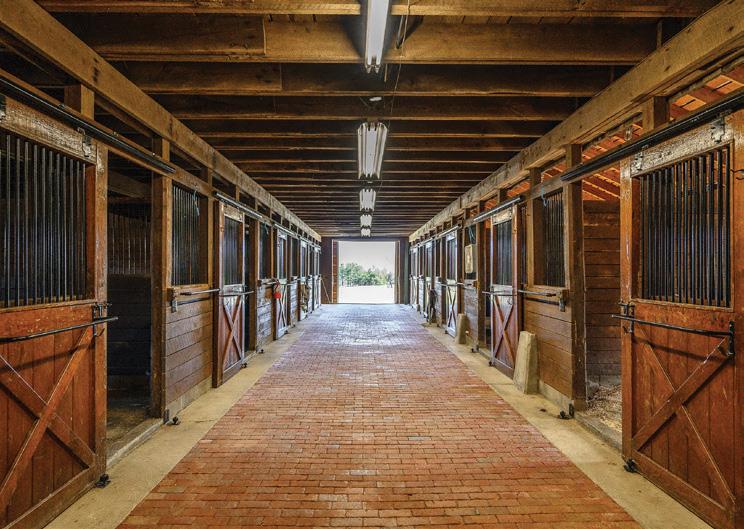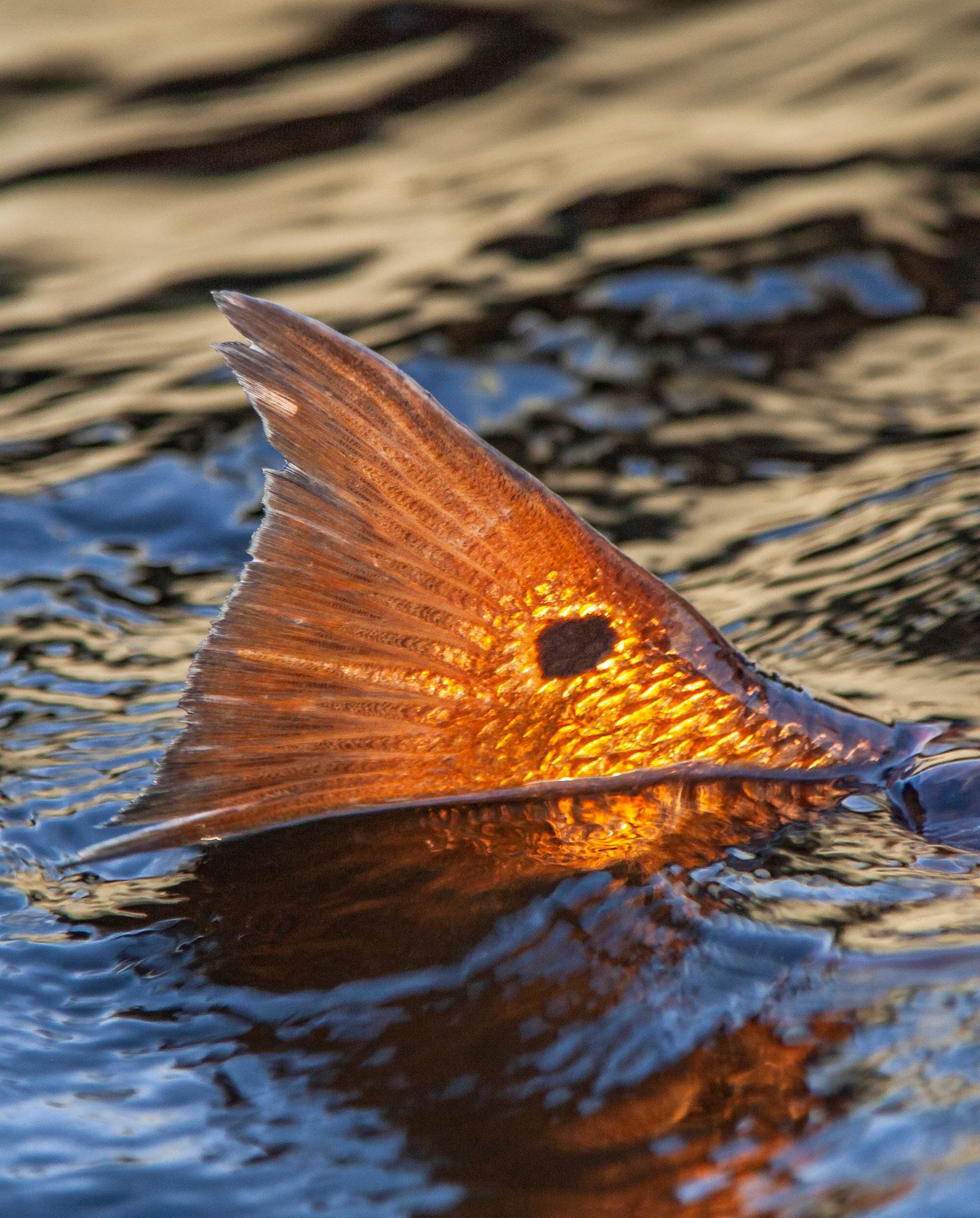
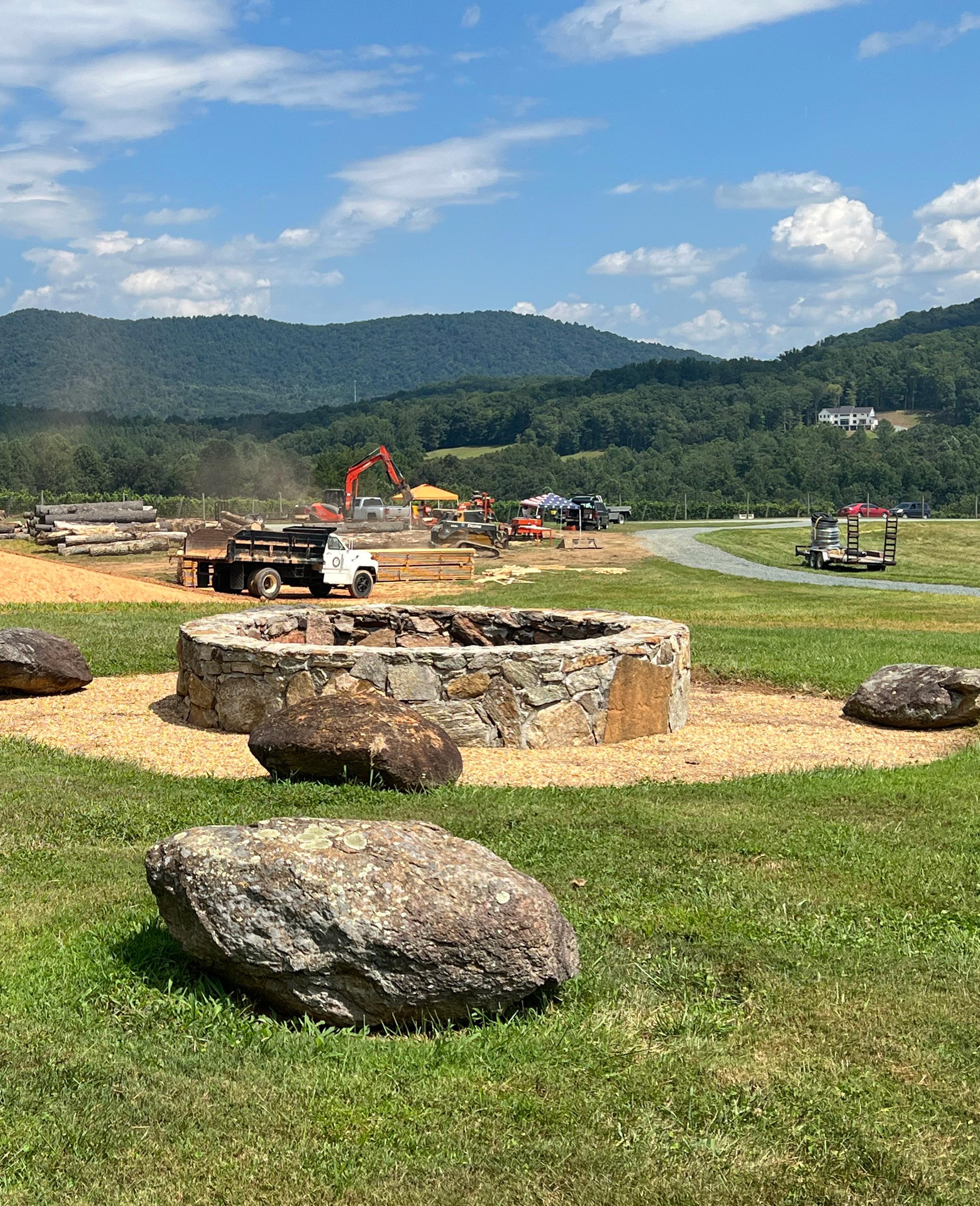
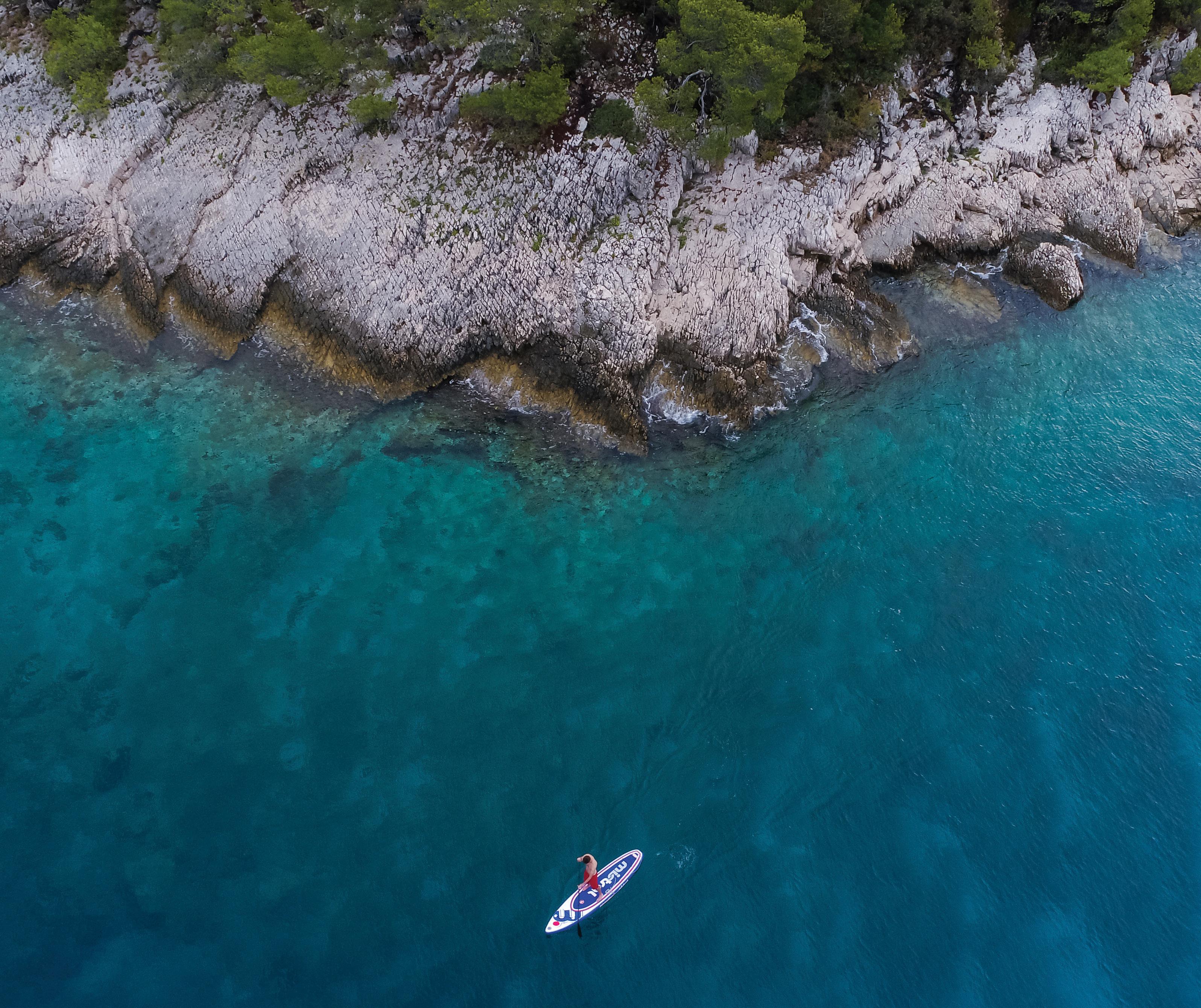
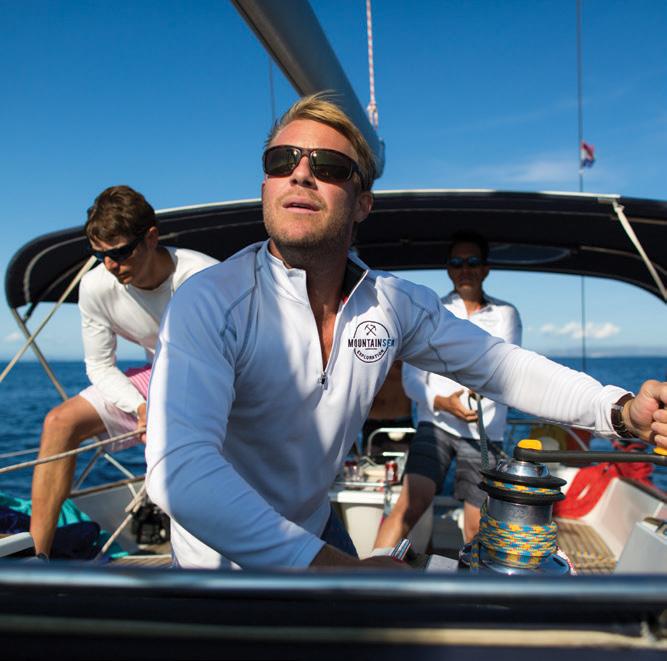
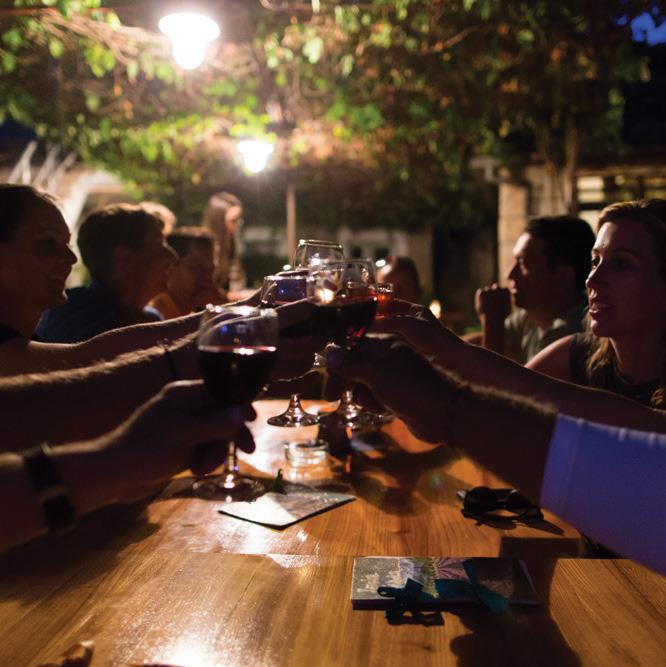
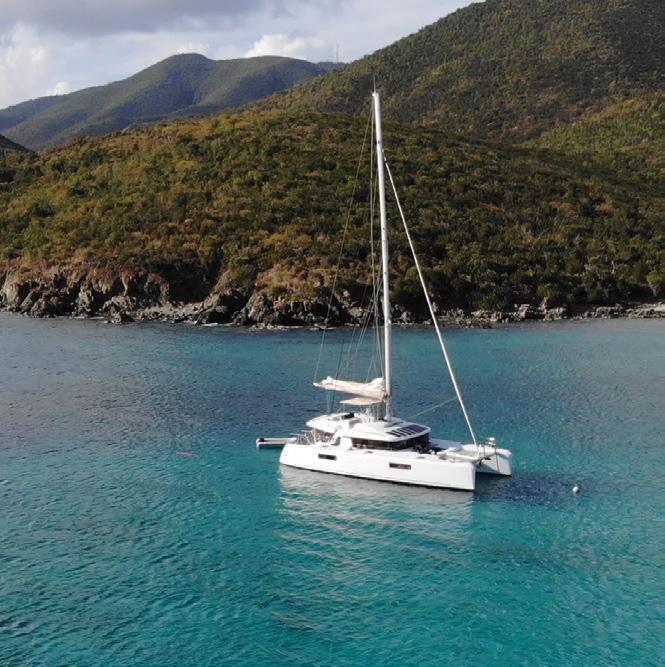
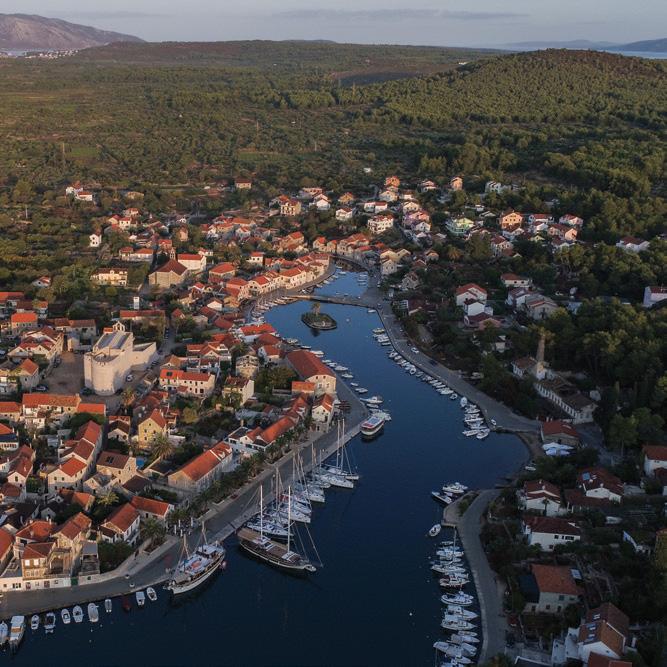
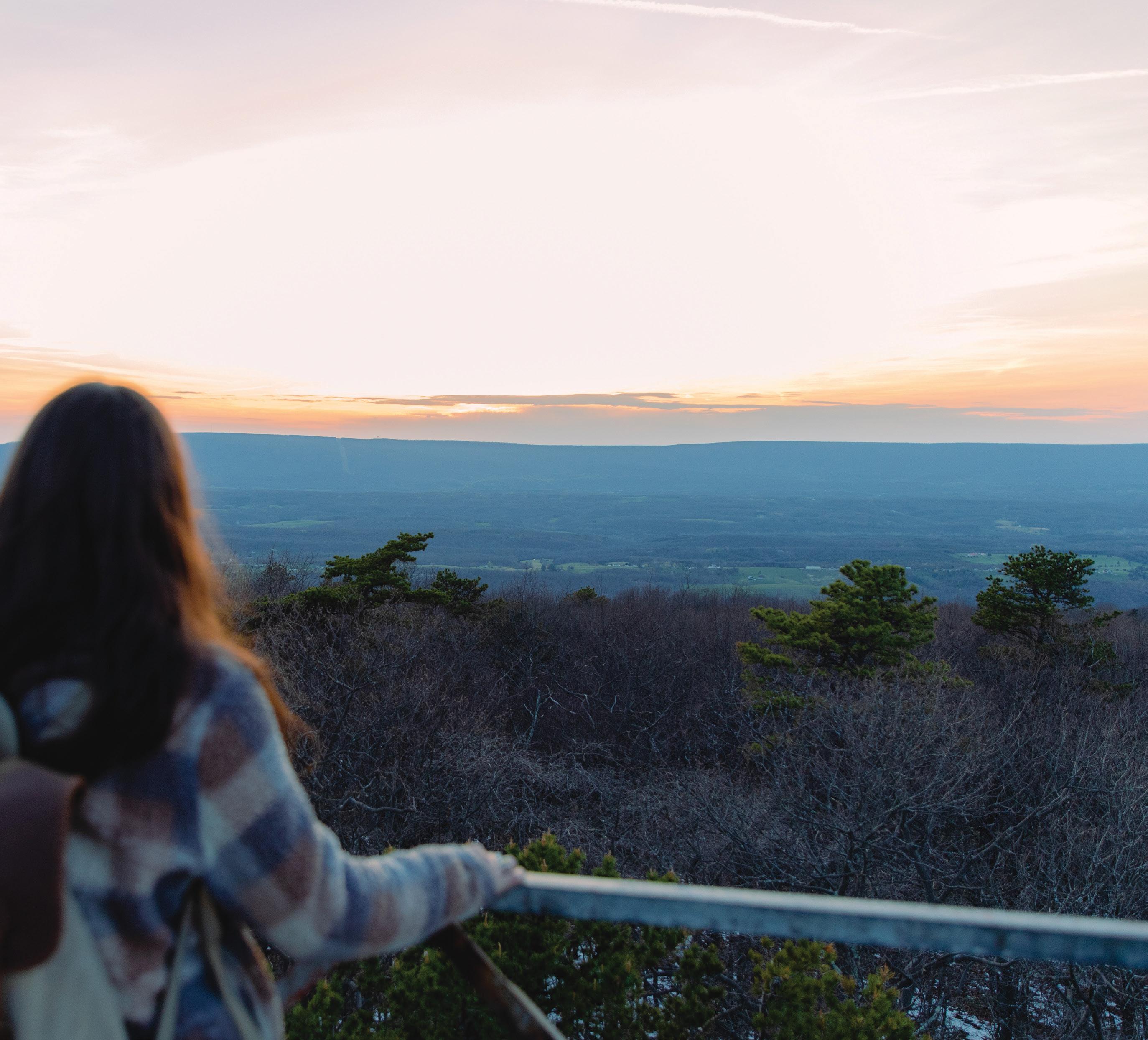
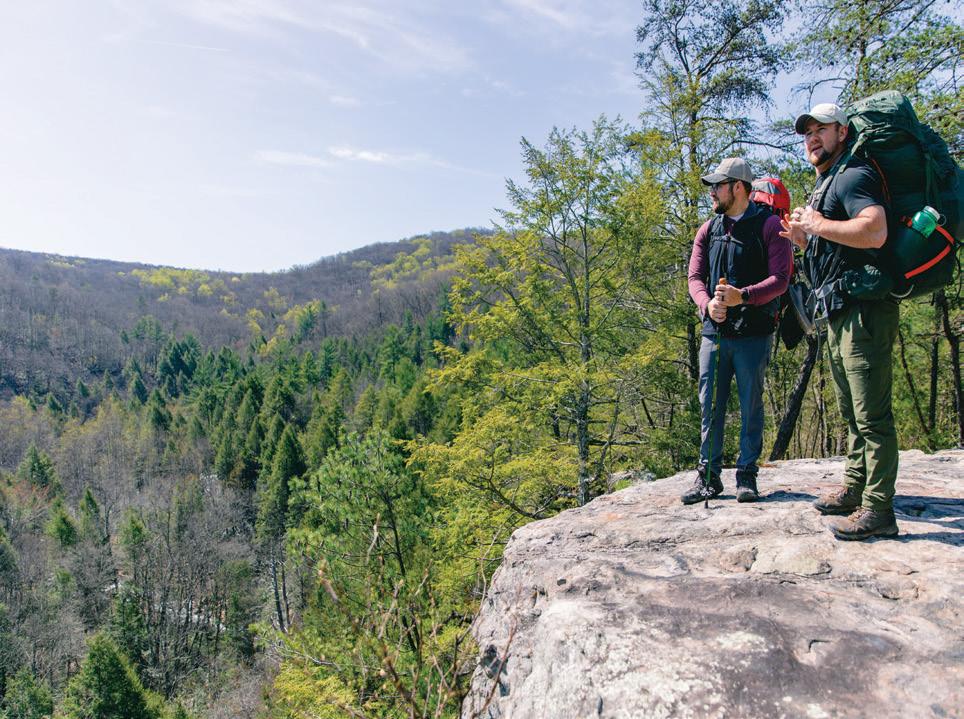
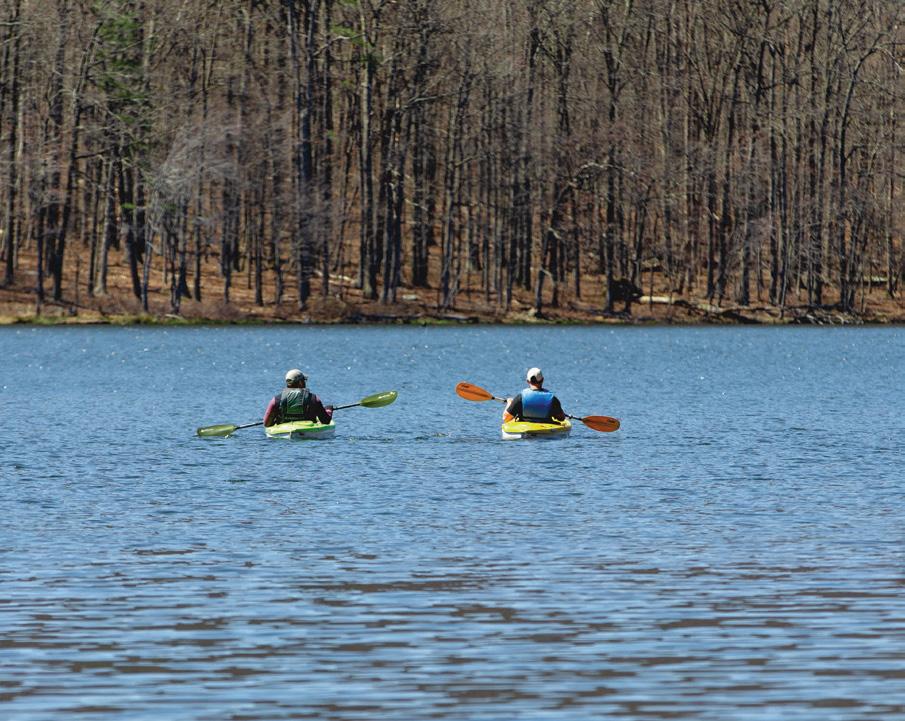
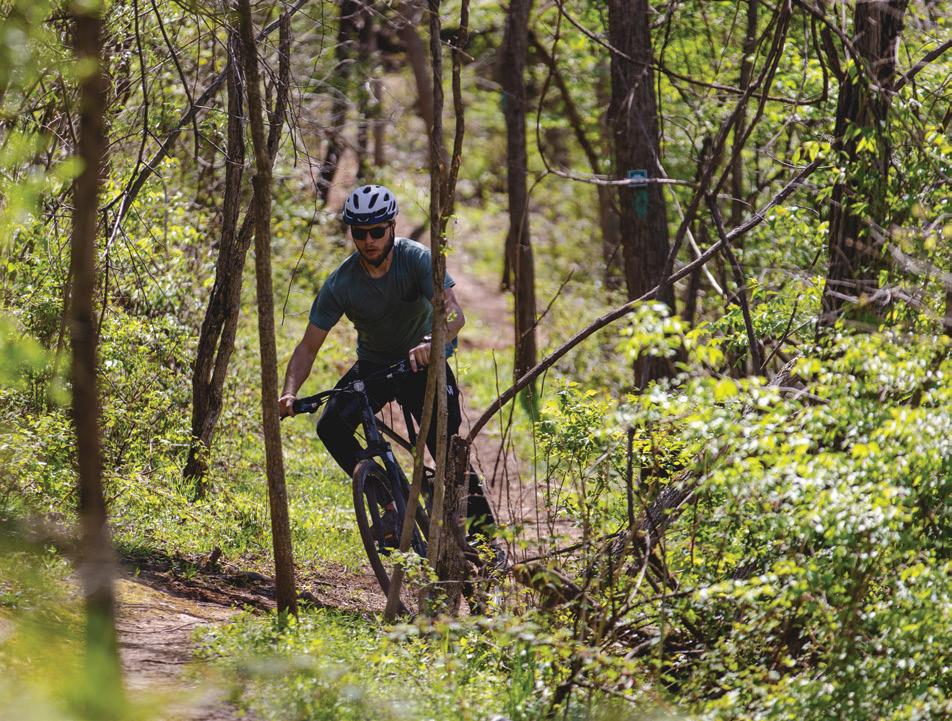
FISHING MEMORIES
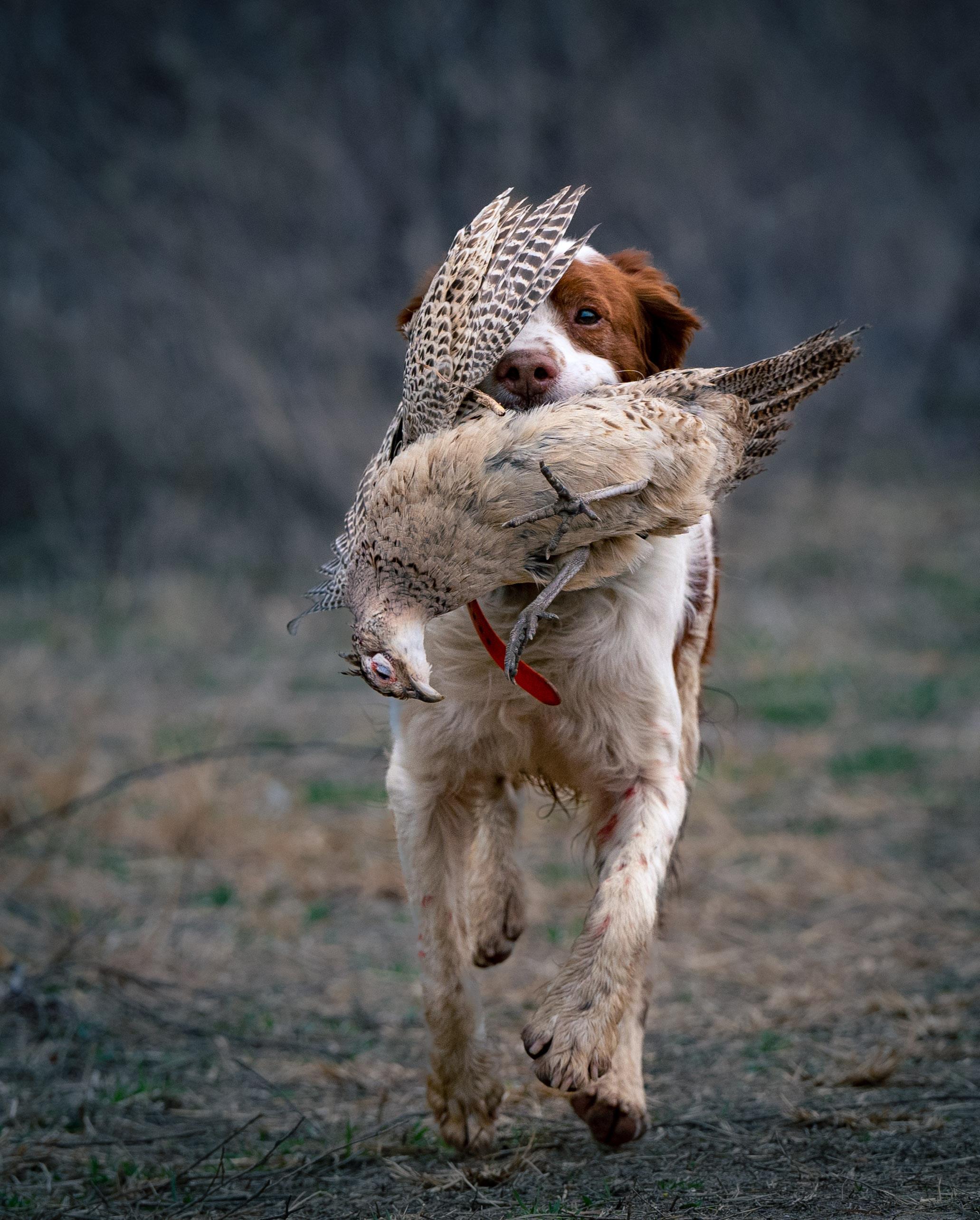
TROUBLED WATERS

A new study by science-based conservationists and academics has discovered opioids, psychoactive medications and other drugs in Florida redfish.













FISHING MEMORIES


A new study by science-based conservationists and academics has discovered opioids, psychoactive medications and other drugs in Florida redfish.

12
THE SOUND
The Wood Brothers follow inspiration on new album, “Heart is the Hero.”

16
OUTFITTED
Check out our 2023 Summer Gear Review for apparel, footwear and gadgets for the season.
20
RAISE A GLASS
The Bavarian Inn is a small resort offering luxury and comfort in West Virginia.
48
WELL FED
Walter Bundy, sportsman, restaurateur and chef at Shagbark in Richmond, showcases Virginia with his local farm-to-table approach.
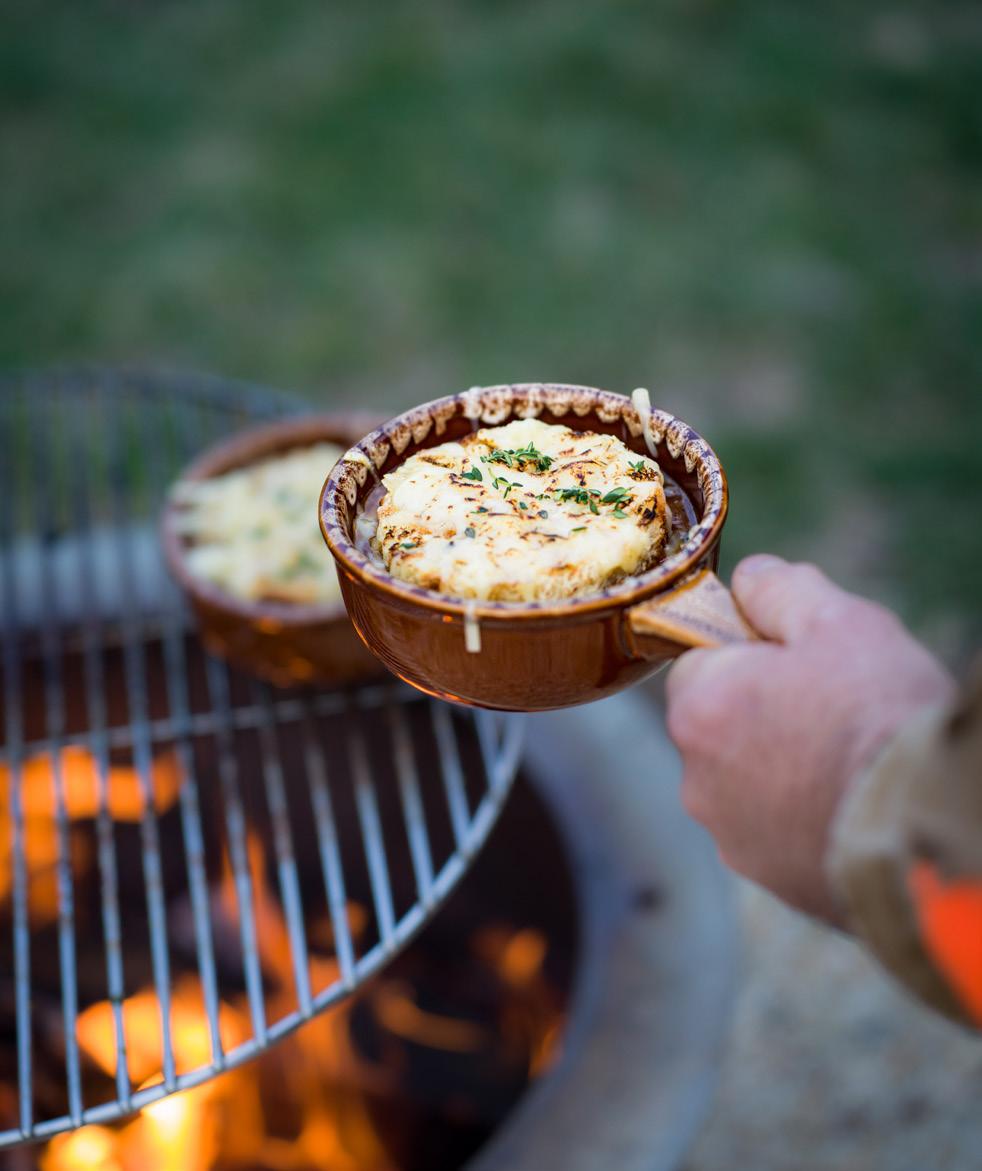
A Virginian journeys to the “Heart of Pheasant Country” for a wild hunting experience in South Dakota.
Your equestrian adventure awaits in the “Land of Horses” in Cappadocia, Turkey.

A year-long study by Florida International University and Bonefish & Tarpon Trust has discovered pharmaceutical contaminants in Florida redfish. Known for their distinctive black spot near the tail that serves as a defensive means to fool predators, Florida redfish now face a new threat: pharmaceutical contaminants from humans.
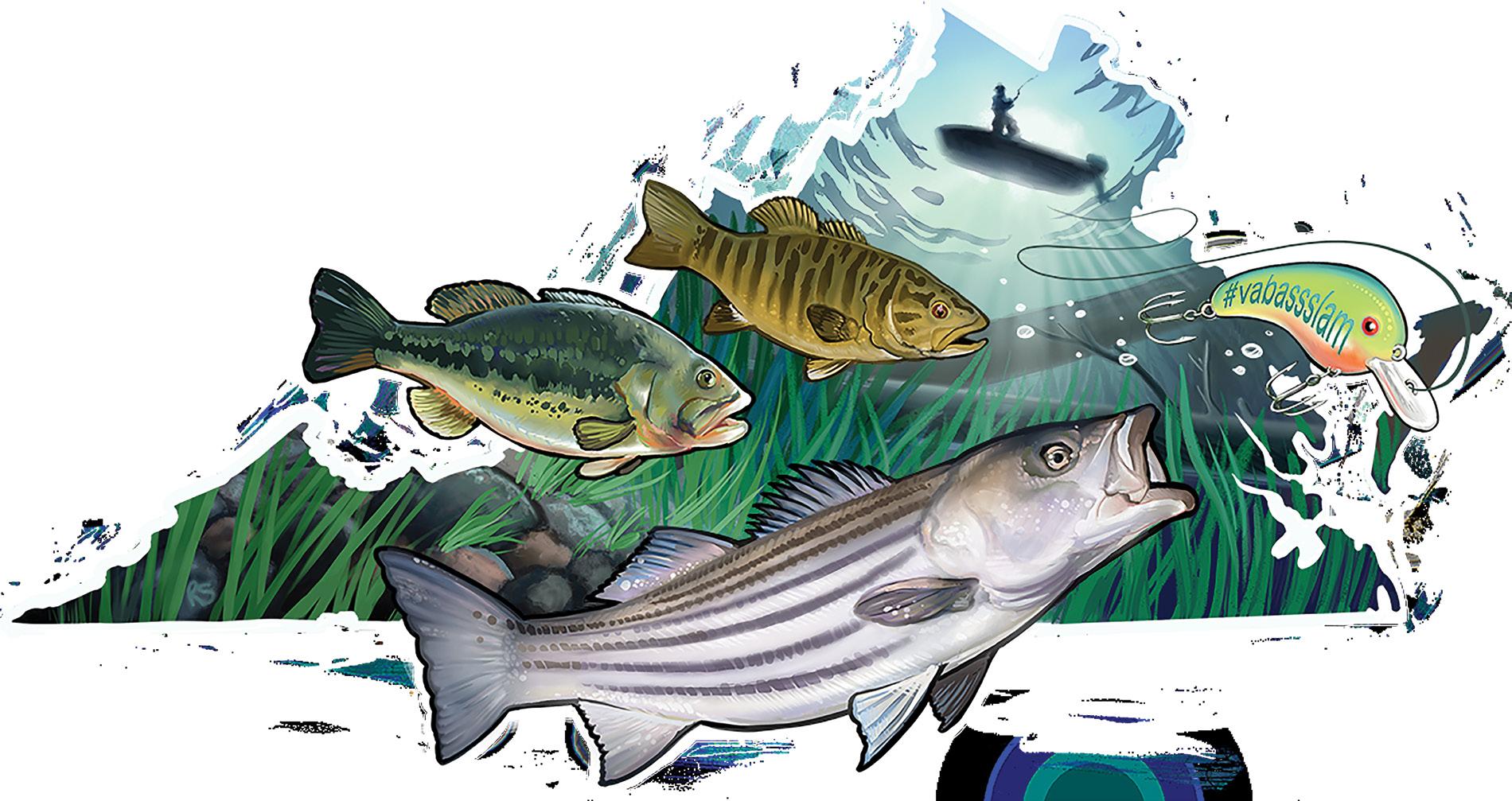
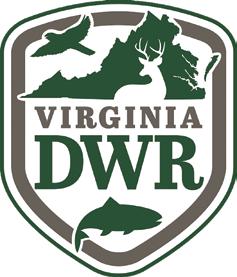
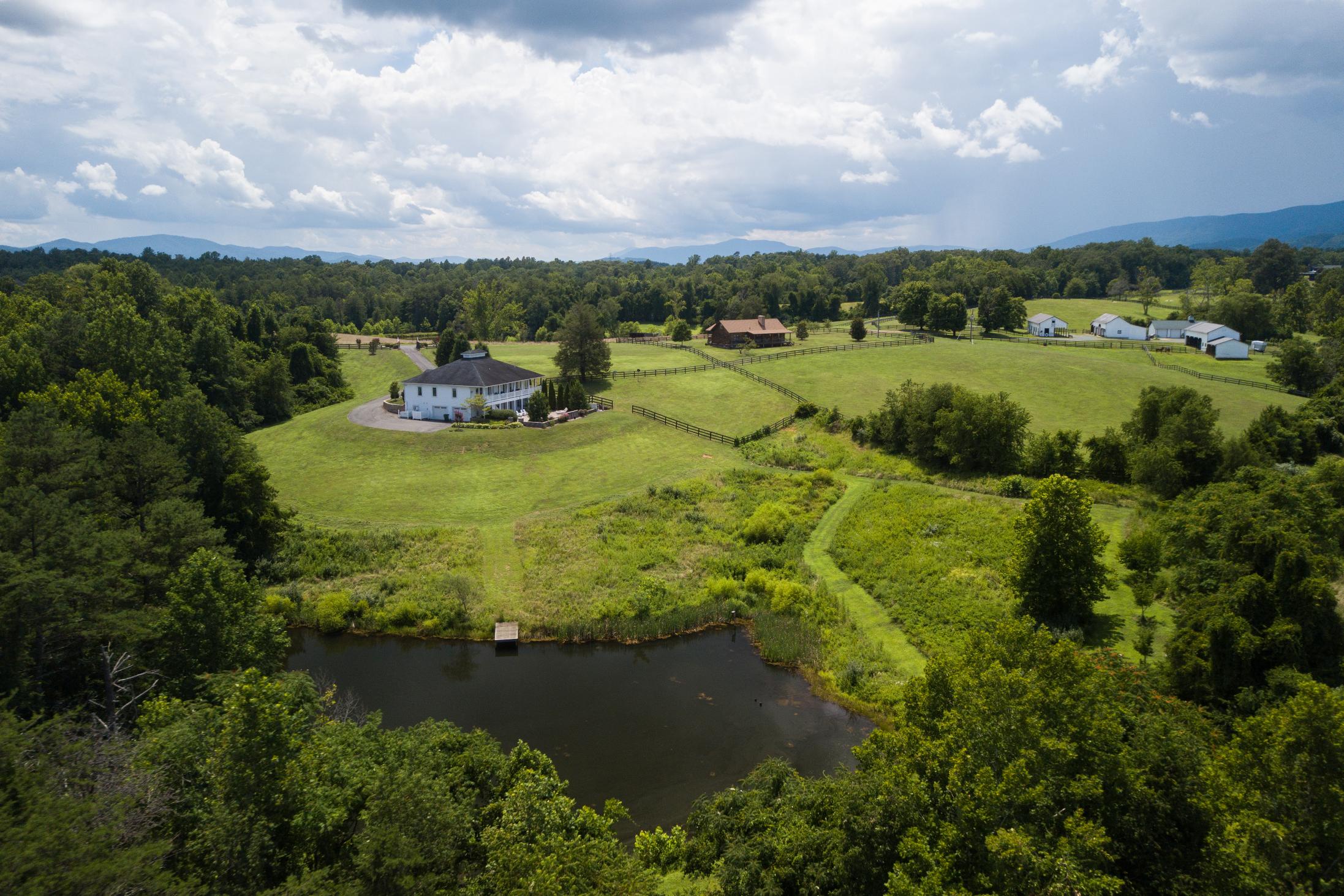

EDITOR IN CHIEF
Joe Shields
PUBLISHER
Blake DeMaso
CREATIVE DIRECTOR
Melissa Kennelly FOUNDER
Hay Hardy
— EDITORIAL & PRODUCTIO N — MANAGING EDITOR John kelly
EDITOR-AT-LARGE Eric Kallen
LIFESTYLE EDITOR Jedd Ferris
CONTRIBUTING EDITOR monte burke
Since 1993, our focus has been on preserving our clients’ financial assets, managing growth, and efficiently transferring wealth from one generation to another.

CONTRIBUTING EDITOR hank shaw
DESIGNER/ART MANAGER Rebecca Cencewizki
— ADVERTISING & BUSINESS —
ASSOCIATE PUBLISHER Leah Woody ACCOUNT EXECUTIVES
Katie Hartwell, Anita Vere-Nicoll, Anne Coles
BUSINESS MANAGER Melissa Gessler
— DIGITAL MEDIA —
ONLINE DIRECTOR Craig Snodgrass
DIGITAL MEDIA SPECIALIST Shannon McGowan
VIDEO PRODUCTION jay alaimo and phil Conserva
Providing:
• Asset Management
• IRA Rollovers
• Tax-Managed Investing
• Trust & Estate Services
• Financial Planning
For a consultation, contact Douglas Nunn 804.272.9044 tcvwealth.com
This stability of purpose allows us to provide the high level of personal service our clients expect. An Independent Fiduciary and Fee-Only Wealth Management Firm
— CONTRIBUTORS LOUISE CARELSEN, DON SKELLY, MERRILL WATSON, J. MICHAEL WELTON
THEVIRGINIASPORTSMAN.COM
©2023 Virginia Outdoor Media, LLC. ALL RIGHTS RESERVED
PUBLISHED BY VIRGINIA OUTDOOR MEDIA, LLC. THE VIRGINIA SPORTSMAN WAS FOUNDED IN 2003.
SUBSCRIPTION: $25 PER YEAR, $45 FOR TWO YEARS, OR $65 FOR THREE YEARS.
977 SEMINOLE TR PMB294
CHARLOTTESVILLE VA 22901
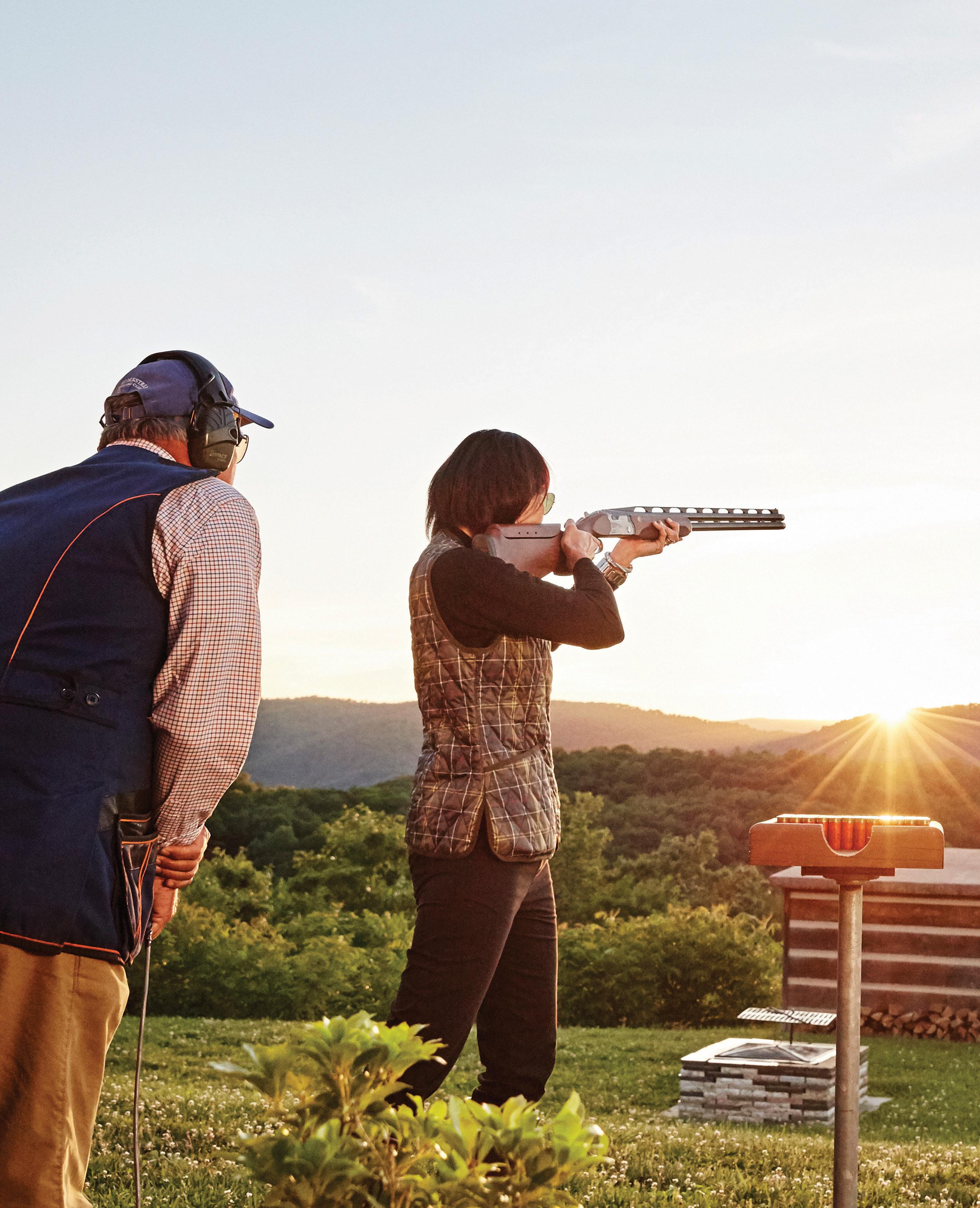
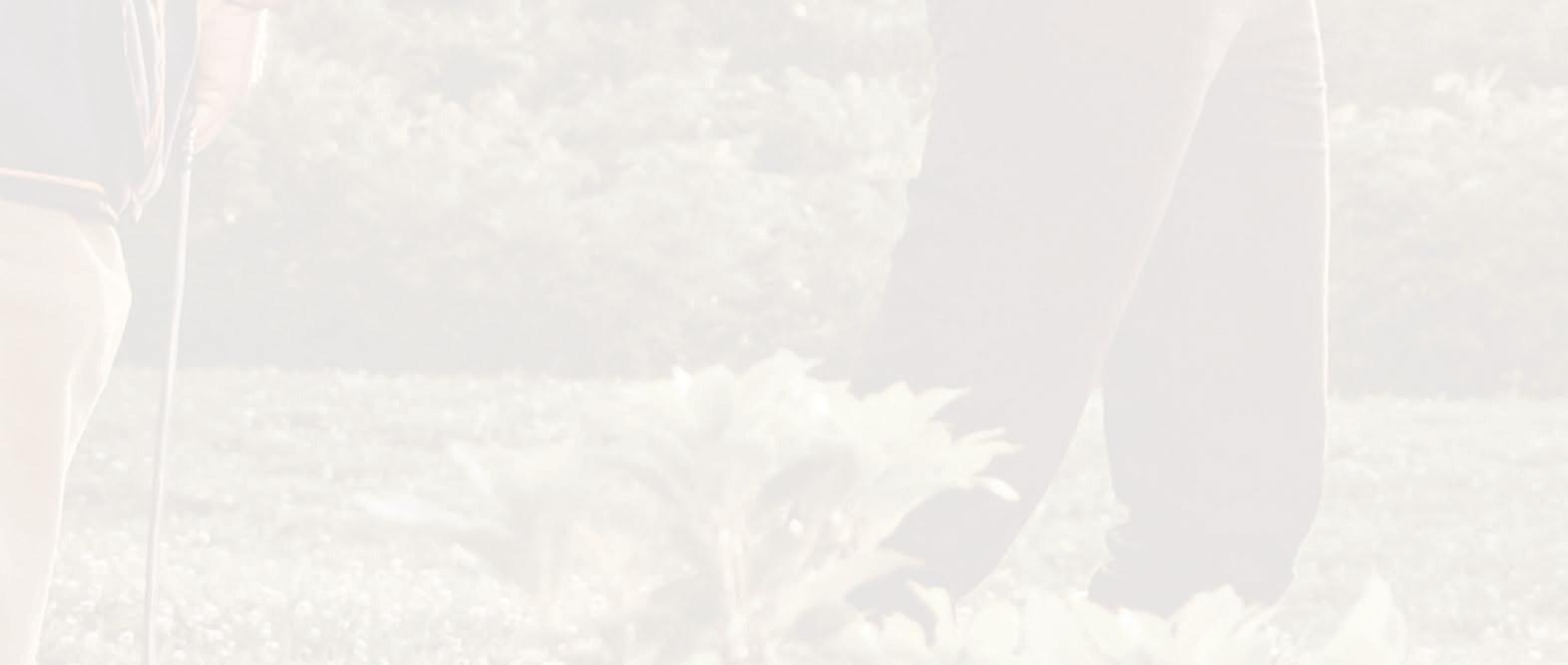
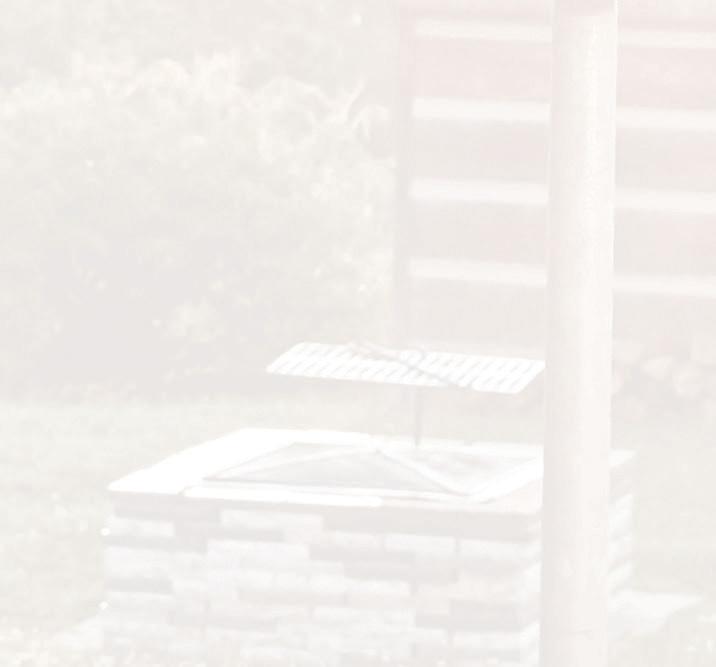



As you will discover in our cover story, a recent study tells us that the fish we catch and eat may not be able to pass a drug test. And it’s all our fault.
We may think our meds are done working by the time they make their respective journeys through our bloodstreams. It’s what happens after we metabolize, excrete and flush where things get tricky.
A year-long study by Florida International University (FIU) and Bonefish & Tarpon Trust (BTT) has discovered pharmaceutical contaminants in the blood and other tissues of redfish in Florida waters. Science has uncovered a new problem, but fortunately researchers have a solution that can help make Florida waters less troubled.

Speaking of fish, Merrill Watson, a native Californian and expat freelance writer now living in the English countryside, grew up fishing on remote rivers and lakes with her dad in California and cherishes her remembrances of those excursions. Recently, she took the same approach to create new experiences and memories with her son JP and his girlfriend on the River Test, a famous chalk stream in Hampshire near Stockbridge, which is considered the birthplace of modern fly fishing and the sport’s Mecca. They caught beautiful trout
in challenging conditions, tangled lines in trees and lost big fish. They laughed and learned an important lesson that Watson’s father tried teaching her long ago.
Watson gained an appreciation of the restorative power of the outdoors through fly fishing, and that’s exactly what Walter Bundy has felt since he was a boy growing up fishing, hunting and gardening in Virginia. Bundy owns and is the head chef at Shagbark, a restaurant in Richmond offering New American fare with a Southern twist.
This past winter, we joined Bundy on an upland bird hunt at The Preserve at Dundee just north of Richmond. Afterwards, we were blown away by an amazing wild game meal of his own creation. It’s no wonder his award-winning restaurant has truly become a stage for local farmers, fishermen, artisans and artists. Shagbark is a thoughtful space that reflects his affinity for the sporting life. For Bundy, running a restaurant is a theatrical performance. You dance, delight people, feed and take care of them. Then you come back and do it again the next day. That’s what he enjoys, and I can’t wait to eat there and take in the show.
Bon appétit. Thank you for reading our magazine and enjoy your summer.

July 13 - September 9
• Racing every Thursday, Friday & Saturday at 1:30 PM
• Arlington Million Day - Saturday, August 12
• Virginia Derby Day - Saturday, September 9
(details at colonialdowns.com)

September 16 - October 29
• Racing every Saturday & Sunday at 1:00 PM
• FREE Parking, FREE admission
• Shenandoah County Fair Harness Meet from August 30 - Sept. 2
(details at shenandoahdowns.com)
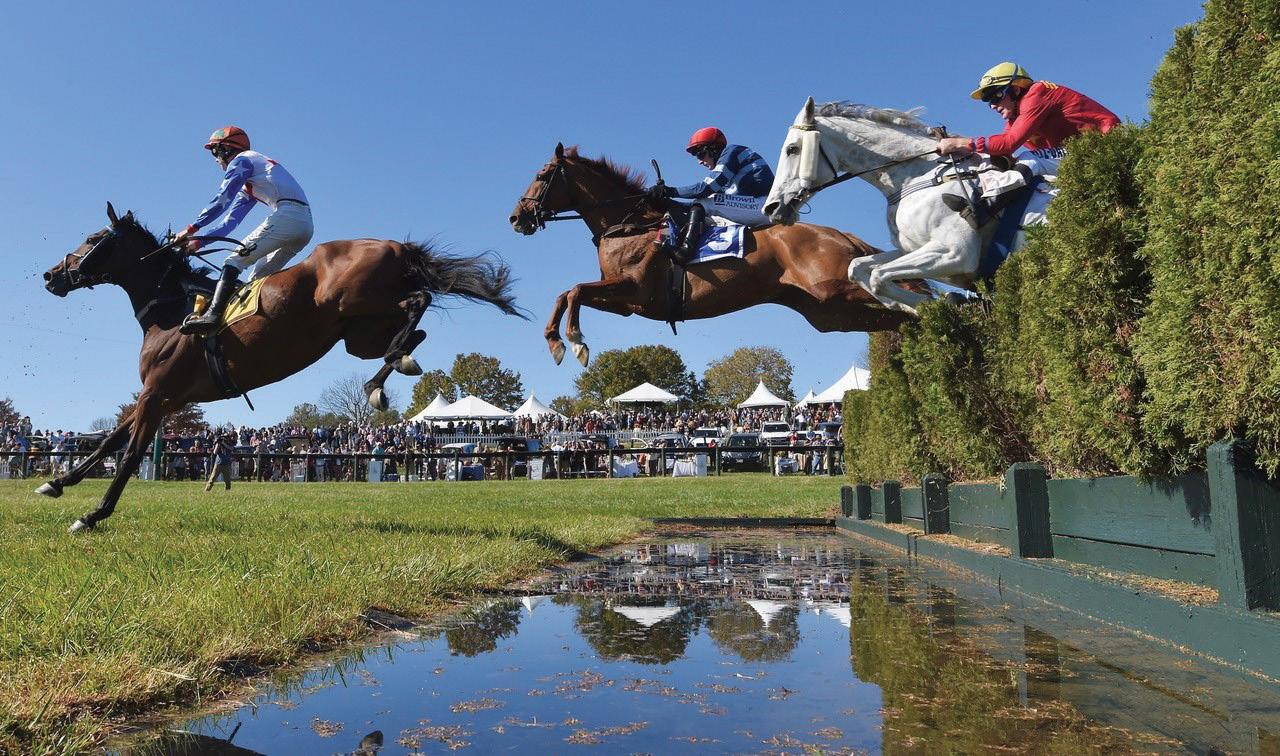
Oct. 1: Foxfield Fall Races in Charlottesville
Oct. 14: Virginia Fall Races in Middleburg
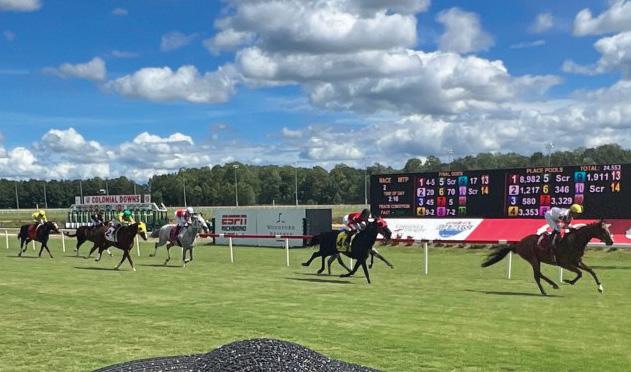
Oct. 28: International Gold Cup Races in The Plains
Nov. 4: Montpelier Hunt Races
(details at nationalsteeplechase.com) virginiahorseracing.com

The Wood Brothers follow inspiration on new album, “Heart is the Hero”
 STORY BY JEDD FERRIS
PHOTOS BY SHERVIN LAINEZ
STORY BY JEDD FERRIS
PHOTOS BY SHERVIN LAINEZ
Chris and Oliver Wood started on different musical paths. After the brothers from Colorado left home, Chris made a name as a bass wiz in the New York City jazz-funk outfit Medeski, Martin & Wood, while Oliver led the Atlanta-based blues band King Johnson.
The siblings were fostering careers with their respective bands for close to two decades, when one night at a North Carolina gig in 2004, Oliver (four years older) sat in with his younger brother’s band, and the family chemistry was hard to ignore. Soon after, Chris and Oliver decided to record together, taking influence from the campfire songs and foundational blues recordings they were exposed to as kids by their parents.
By 2008, the Wood Brothers released the breakout Americana album, “Loaded,” which became a widespread introduction to the duo’s groove-driven, folk-rock sound, and,

after adding percussionist Jano Rix to complete the line-up, the group began touring at a relentless pace. Opening amphitheater stages on the Tedeschi Trucks Band’s Wheels of Soul Tour led to greater exposure in 2017, and the next year the group notched a Grammy nomination for the album “One Drop of Truth.”
In the spring, the band released its eighth studio album, “Heart is the Hero,” a 10-song collection recorded completely analog to a 16-track tape at The Studio Nashville in Tennessee. Absent computer manipulation and studio tinkering, the tunes capture the visceral energy of a Wood Brothers performance and the magic of sibling connection.
In the title track, Oliver Wood sings about trusting emotional instinct, which remains a guiding principle of this band’s entire foundation.
“The chorus of the album’s title track says, ‘the heart is the
hero of every song,’” Oliver Wood said in a statement. “By no means was it intentional, but much of the material we were writing for this record seemed to come full circle to the idea of trusting in your heart in matters that you can't control. Those words seemed to illustrate so much of what we were feeling—that heart and spirit guides us through this world. Even by recording completely analog, we had to commit to feeling the performances and have faith in what the three of us were creating together instead of trying to make things perfect by letting technology or overthinking things get in the way."
The Wood Brothers perform at the Ting Pavilion in Charlottesville on June 15 and at Virginia Arts Festival Williamsburg Live in Williamsburg on June 16.
“Postcards
An early standout in the band’s catalog, this heartfelt ballad tells the tale of an underappreciated barroom musician who refuses to compromise for commercial success. The original version comes from the band’s 2008 album, “Loaded,” but it’s also worth it to check out the live version on 2017’s “Live at the Barn.”
The title track to the group’s 2013 album is a raw tearjerker about being grateful for family members and the inspiration they provide. In between Oliver Wood’s intimate vignettes, the song gets additional emotional uplift from a melodica solo from percussionist Jano Rix.
“Heart is the Hero”
The bluesy porch song—and title track to the band’s newly released eighth album— celebrates conviction as the siblings lean into the harmonies of the emotional chorus: “The heart is the hero of every song.”
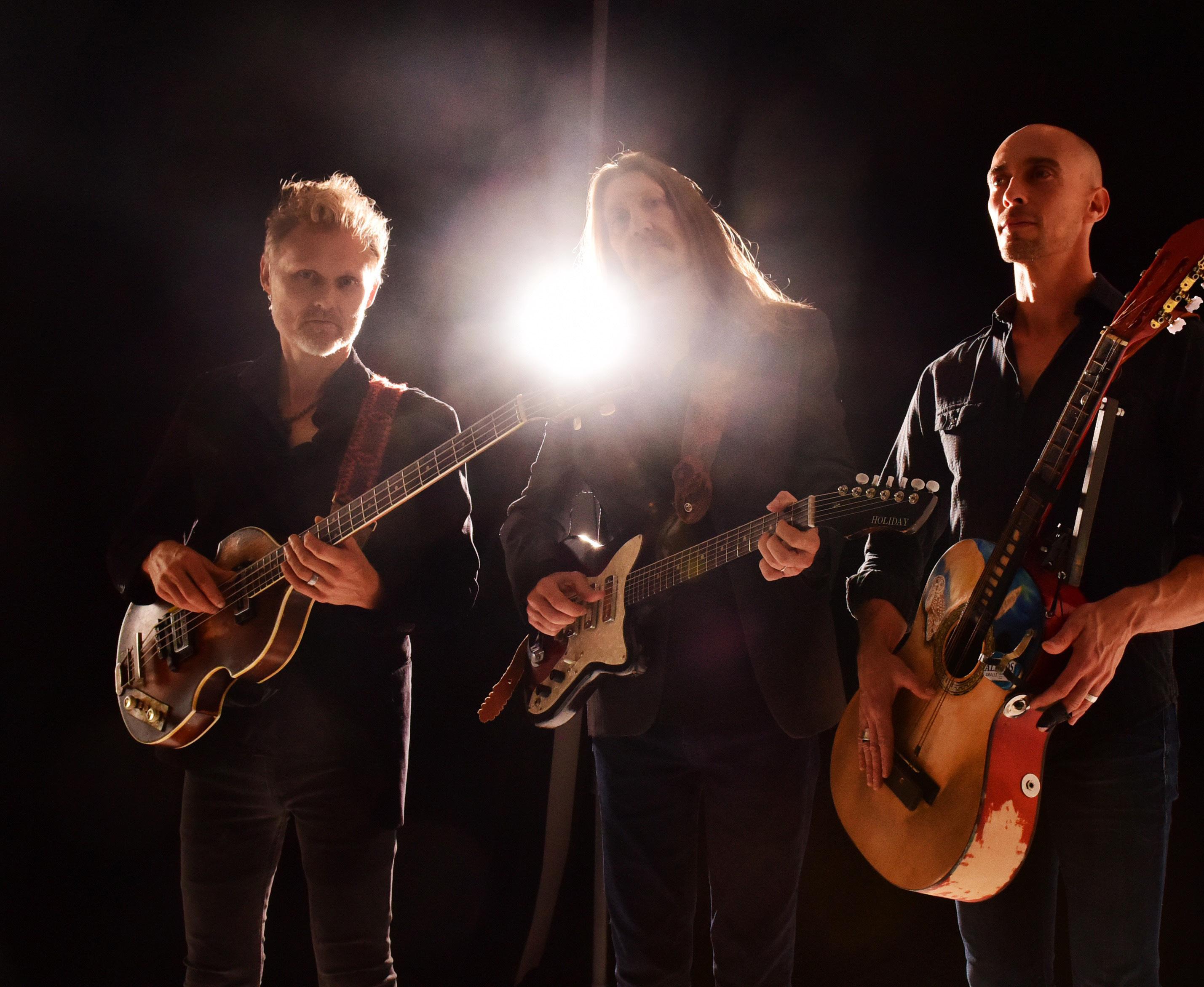
“Happiness Jones”
A great look at the band’s funky, electric side, “Happiness Jones” dresses up restless self-reflection in a rocking dance tune with hard-hitting beats and gritty guitar work. It’s found on the Grammy-nominated 2018 album “One Drop of Truth.”
In 2009, the Wood Brothers released a cover album with takes on the Allman Brothers Band’s “Midnight Rider” and the Beatles’ “Fixing a Hole.” The record’s true gem is this take on Allen Toussaint’s soulful R&B jam.
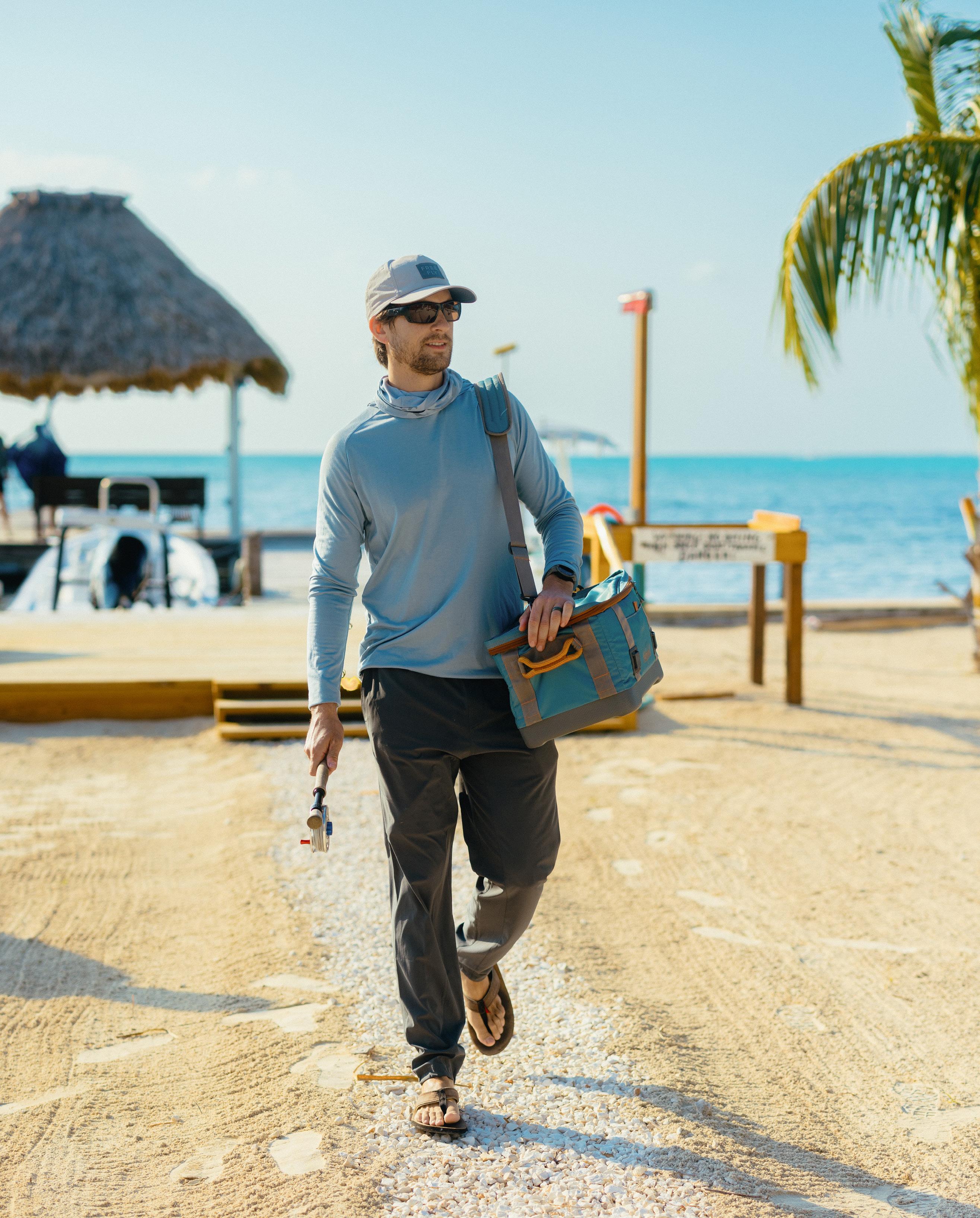 BY ERIC KALLEN
BY ERIC KALLEN
MOUNTAIN HARDWEAR, TRAIL SENDER JACKET [1]
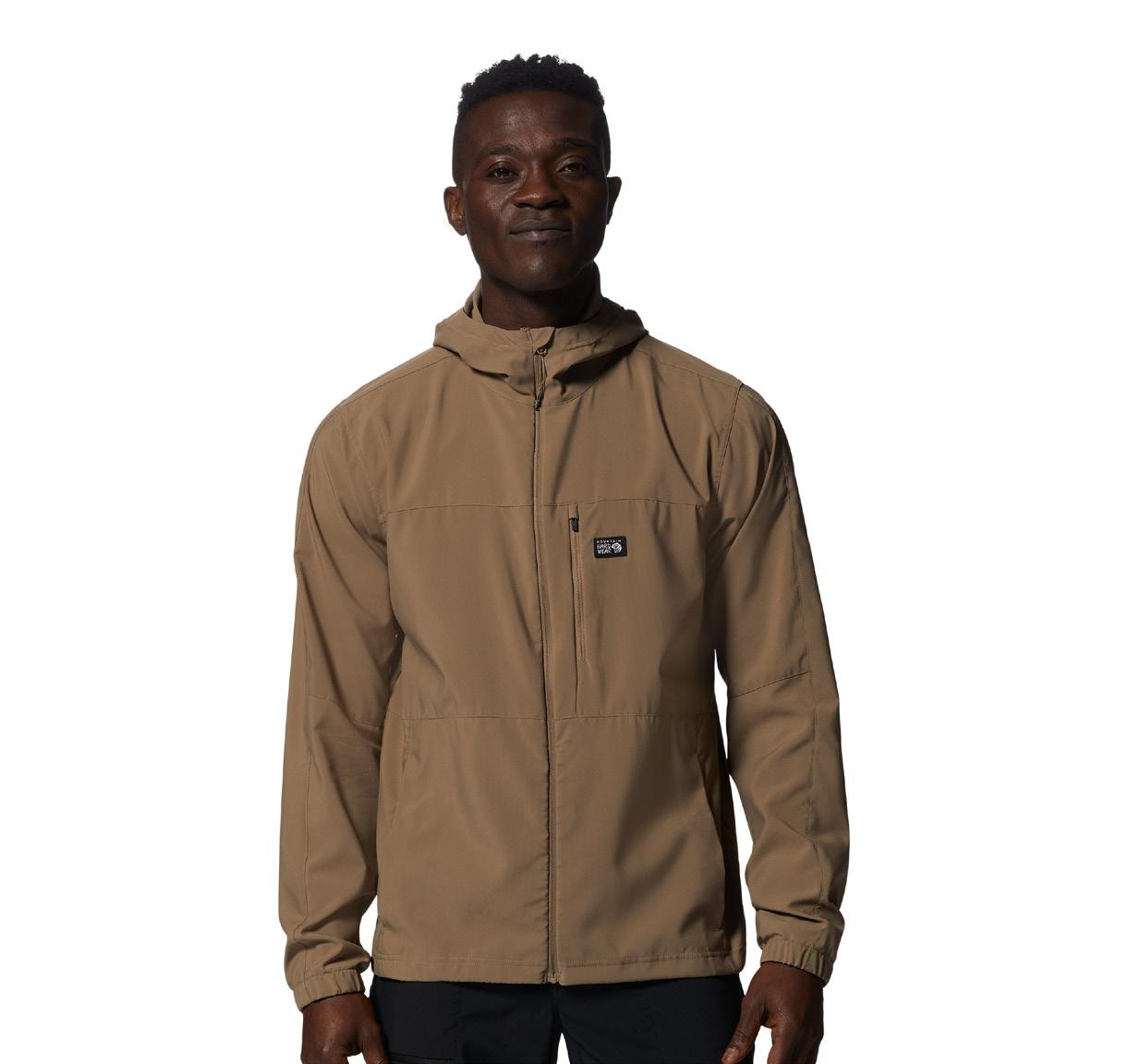
Sometimes the best jacket is the one you have with you. Mountain Hardwear’s Trail Sender Jacket provides the perfect combination of comfort, functionality and weight for a variety of outdoor pursuits. The Trail Sender’s light weight and extremely small form factor make it easy to throw into your suitcase, backpack or gear bag when you head outside or on a trip. The jacket’s rip-stop nylon fabric is very breathable, offers UV-blocking sun protection and shields you from wind and drenching rains. Zippered hand and chest pockets and a fully functional hood give the jacket a high-end feel as it guards you from the elements. $99.00; mountainhardwear.com
TECOVAS BOOTS, THE DOC [2]
Depending on where you live, it can be a struggle to find a good pair of cowboy boots. Tecovas offers a full-service online experience for those who want to order cowboy boots without having to try them on in a store. Tecovas are handmade in Mexico, and their customer service representatives can help you select a style and fit. The Doc is a classic western boot that can be dressed up or worn casually, depending on what you have in mind for the evening. Available in bovine, bison or goat, these handsome and comfortable broad square-toe boots offer a different look and feel than a traditional pointed-toe boot. Tecovas also offers free refunds and exchanges. What a great way to buy cowboy boots if you can’t make it to a store. $275.00; tecovas.com

PESCA
Unless you live in a cave, the sun can cause considerable short- and long-term damage if you’re outside too long without protection. Pesca Muerta’s Hooded Sun Shirt is functional, fashionable and offers UPF 50+ to keep you safe from the sun’s harmful rays. The sun shirt’s antimicrobial treatment helps to keep smelly bacteria off the shirt, and its light weight provides plenty of breathability and comfort if it gets hot. Avoiding sun damage is critical, but this sporting lifestyle brand’s sun shirt also turns heads with great fish graphics and one of the coolest logos in the industry. $60; pescamuerta.com
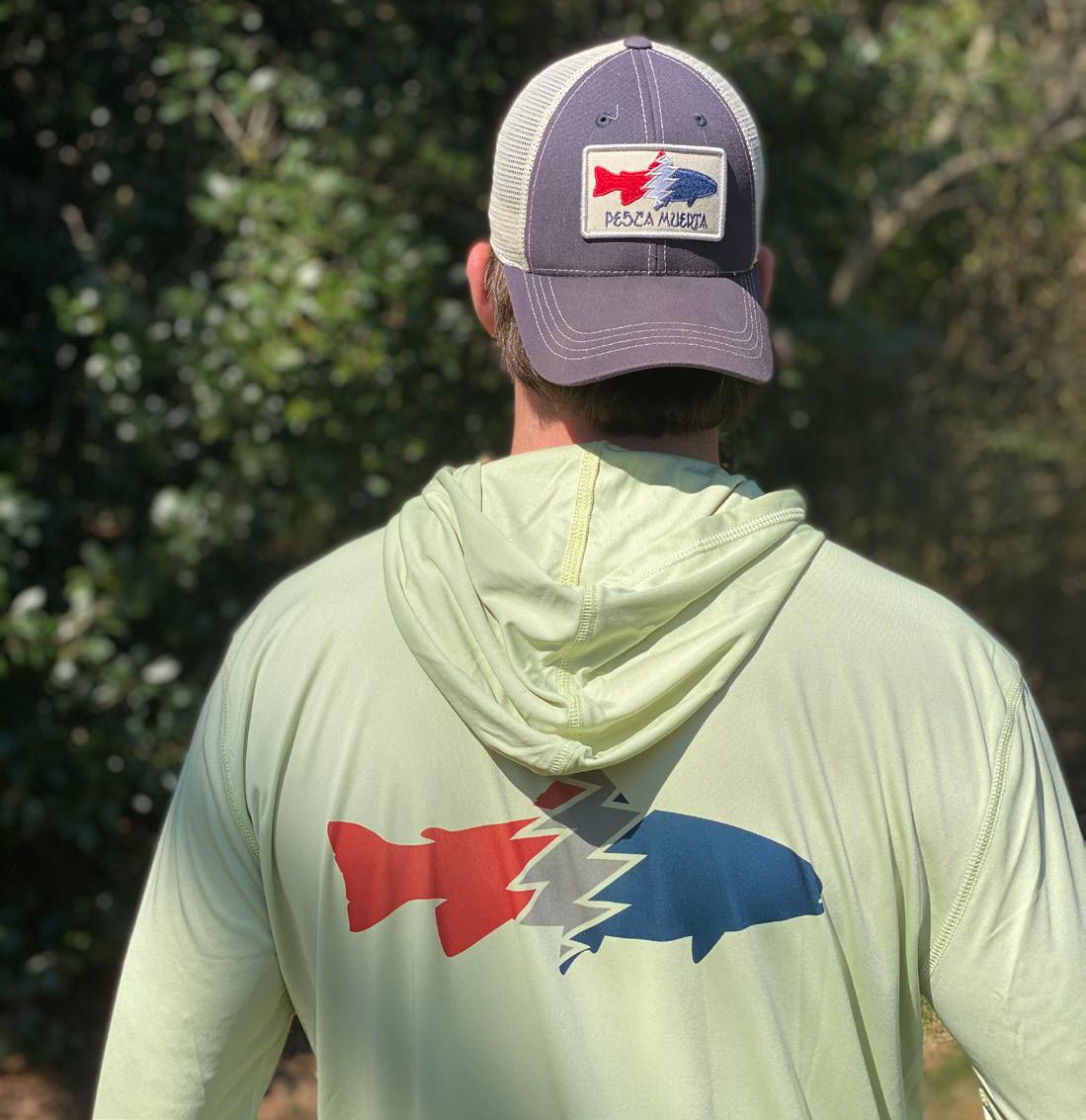


Allbirds new Trail Runner SWT shoes are an all-around adventure product that is part trail runner, part hiker and part walking shoe. Capable in all three pursuits, the SWT offers a breathable one-piece upper featuring rip-stop protection and a sock-like collar that keeps your foot secure and debris out. The SWT’s multi-directional, 4mm lug sole provides secure traction across a wide variety of terrain. Best of all, Allbirds has made great strides to move away from petro-chemical based materials. The SWT features eucalyptus tree fiber and wool blends in the upper, a sweet foam sugar cane midsole and natural rubber outsole. If you are looking for great all-around adventure footwear that’s well-suited for any environment and helps you do your part for the environment as a whole, give Allbirds Trail Runner SWT a try. $140; allbirds.com
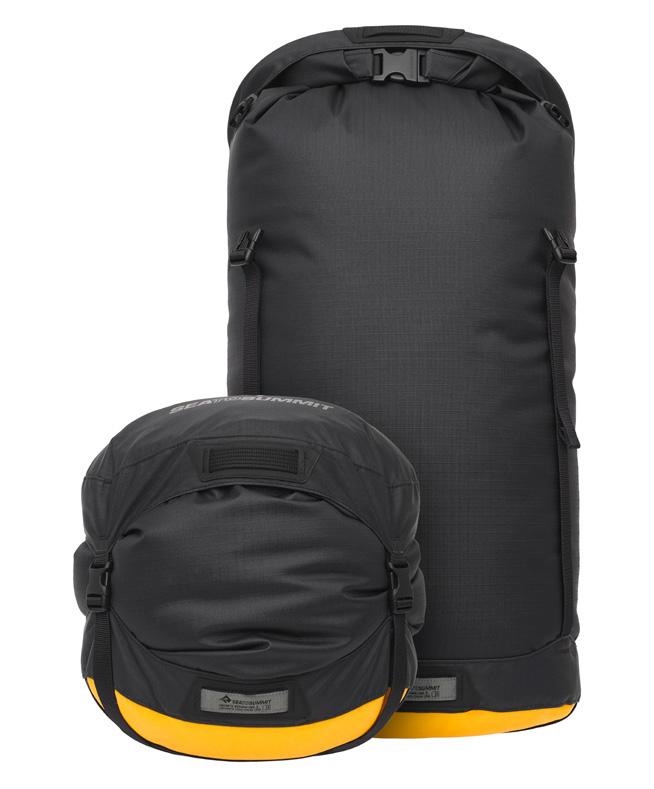
[5]
Sea to Summit’s EVAC Compression Dry Bag isn’t your ordinary dry bag. The main body is engineered from super strong, abrasion- and punctureresistant 420 D waterproof fabric. The base of the bag is made from permeable material that enables you to push the air out without letting water in. You can tighten the bag’s four compression straps to reduce its form factor, and the latch points can be easily secured to your bike, kayak or roof rack. The bag is available in a variety of sizes, from the smallest 8-liter version to the very capable 35-liter offering. If you need to keep your gear dry on your next adventure, consider Sea to Summit’s EVAC Compression Dry bags. $59.95 to $89.95; seatosummit.com
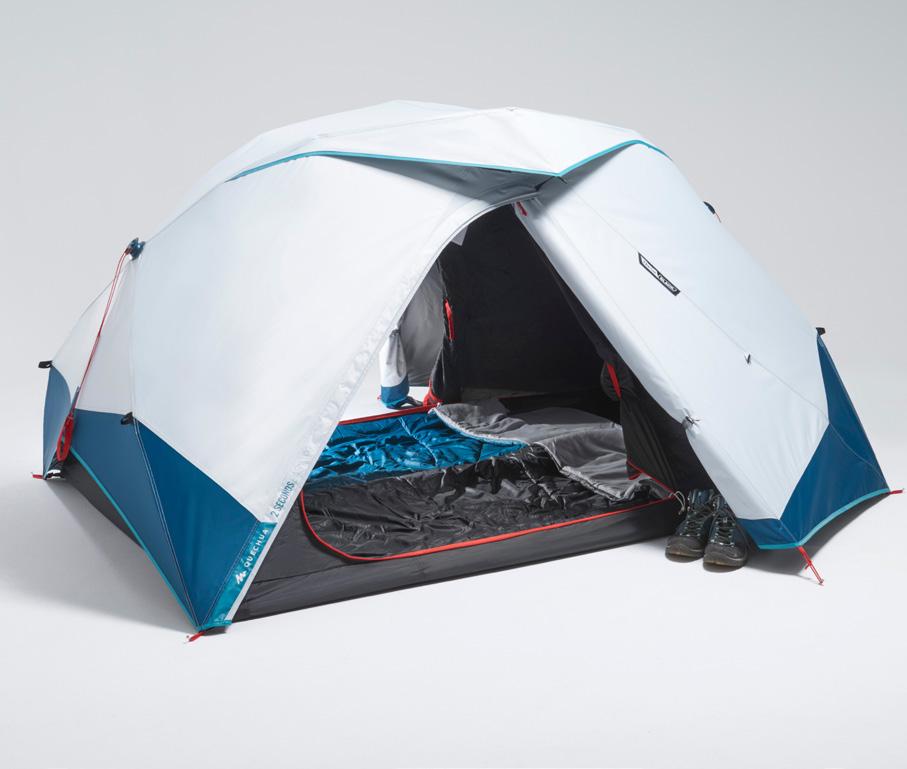
For an occasional camper, camping has many challenges—starting with setting up the tent. You must assemble stakes, poles, tent, and fly in a certain way in a certain order. Throw in darkness or rain, and the fun is over before it begins. Decathalon’s Quecha 2 Second tent aims to fix that and is possibly the easiest tent to assemble—ever. It’s simple: take the 2-person tent out of the bag, stake out the corners and pull two chords for the tent to take shape. That’s all there is to it. The Quecha 2 Second’s high-quality material is completely waterproof. And if you’re someone who likes to sleep in late, the tent is lined with black-out fabric that keeps your home away from home dark and private. While not ideal for a backpacker—the tent weighs more than 10 pounds—it is ideal for car camping and short hikes to your destination. $229; decathalon.com
BURLY, VIRGINIAN FIRE PIT [7]
t’s tough to beat relaxing around a fire with friends and cold (or hot) beverages. But there’s nothing worse than a fire that belches smoke and won’t stay lit. Burly’s new Virginian fire pit is handcrafted to reduce smoke and make starting a fire (and keeping it lit) a snap. Made in the USA, the fire pit is manufactured from one piece of Corten steel that’s meant to be left outside in the elements; with time, it will develop a cool rust-like patina. If you want to do more than sit by the fire, the Virginian can be outfitted with accessories so you can cook over the flames. The Virginian has everything you need for a relaxing evening, except for those beverages, and perhaps a couple of nice steaks. $500 to $800, depending on style; burlyusa.com
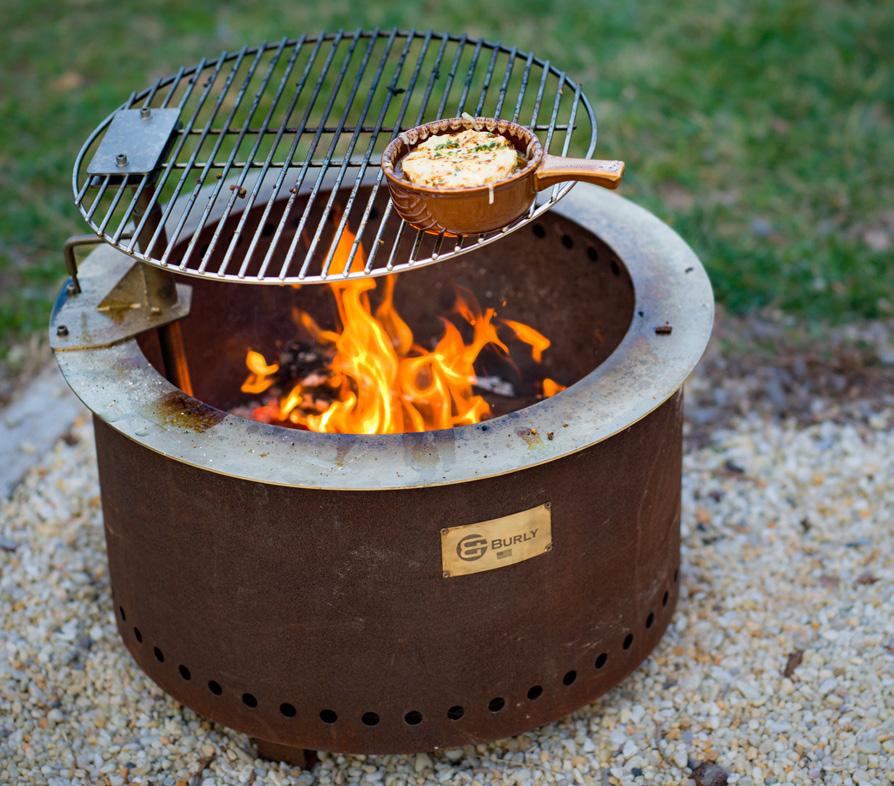

When summer is here and things heat up, deciding what to wear is more than a fashion decision. Available in a variety of smart-looking colors and patterns, Tom Beckbe’s new Tidewater shirts offer plenty of good looks and so much more. UPF 30+ protection helps prevent sunburn and damage, while its lightweight, quick-drying fabric presents a comfortable fit and the performance you need when you’re out on the water. The Tidewater’s two pleated chest pockets have button enclosures that give you a place to store your sunglasses (or reading glasses for those of us who need some help tying on our flies) and they also drive home the classic look that Tom Beckbe is known for. Also available in a short-sleeve version, the Tidewater can be best described as the outdoor shirt that sits at the intersection of fashion and function. $145; tombeckbe.com
Anyone who has ever spent time on a flats boat knows how important it is protect yourself from the sun and stay cool. Free Fly’s Breeze Pants and Elevate Hoodie offer the perfect solution for anyone looking for the perfect outfit for a day in the sun. The Breeze Pants are constructed from Free Fly’s best-selling woven fabric that is lightweight and extremely breathable. These comfortable pants defend you against the sun’s harmful rays and are a great choice if you’re going to spend a lot of time on a casting platform. To complete the ensemble, Free Fly’s Elevate Hoodie has your back—literally—from the waist up. The Elevate’s innovative cuff design protects your hands from the sun without sacrificing the dexterity you need for stripping your fly line or opening a beer. For those of us who spend time in the sun, it’s not always about the outfit. And with Free Fly’s Breeze Pants and Elevate Hoodie, you don’t have to sacrifice style or functionality. Breeze Pants $94.00, Elevate Hoodie $88.00; shopfreefly.com
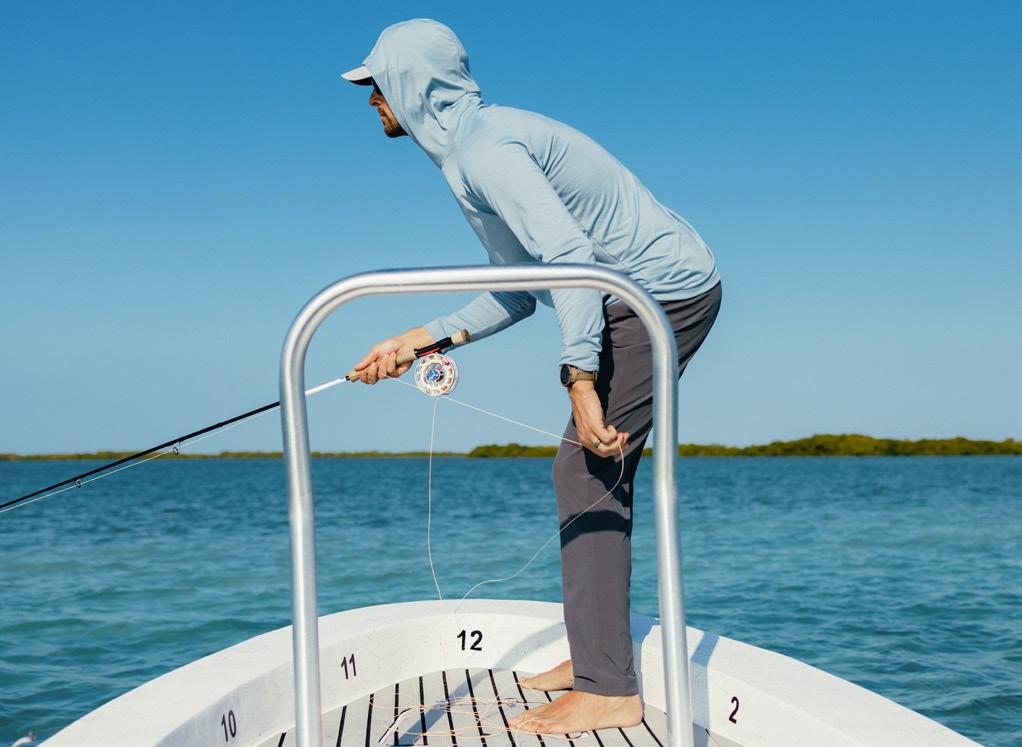
If you’re shopping for a bag for your next long weekend, Cotopaxi’s Allpa 35 Liter Travel pack offers versatility, comfort and performance. Cotopaxi is known for bold color combinations and producing high-quality gear and apparel for travel and adventure. And its 35 Liter Travel Pack is no exception. The Travel Pack’s clamshell design provides easy access, and the interior mesh zippered pockets offer a wide variety of organizational options. Perfectly sized for overhead airline storage, the bag’s slim profile makes it easy to carry and store. In addition, Cotopaxi has outfitted the bag with several handles and shoulder straps so you can carry the bag a number of different ways. $200; cotopaxi.com
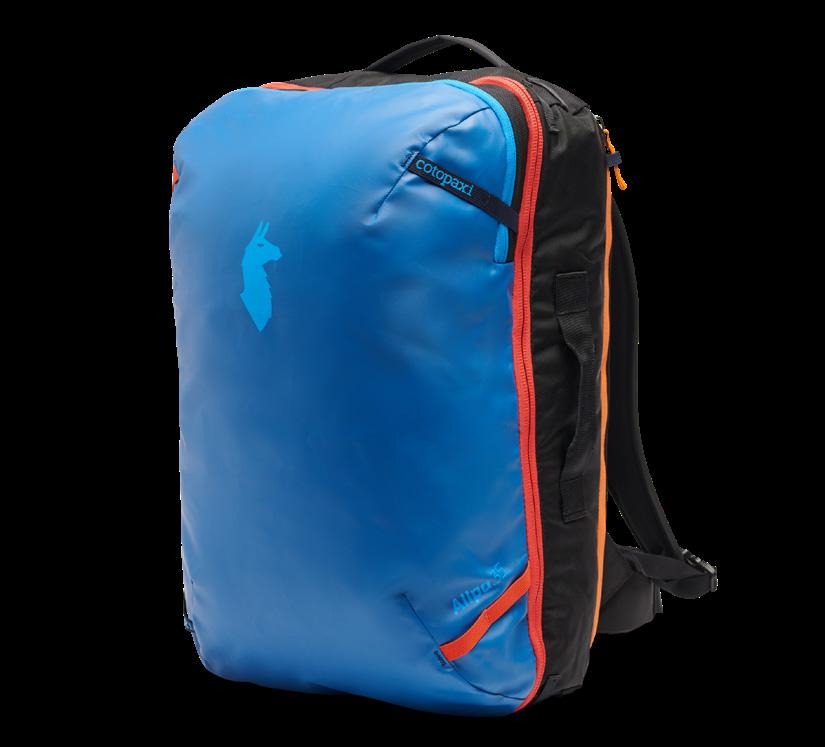
The Swedish legend of Trollgadda, or “troll pike,” centers around giant fish that terrorize the lakes and waterways in this Nordic country. When Trollgadda Tackle Founder Jeff Wanat researched a name for his new company, he chose a name that drew from his love of heritage and storytelling. Trollgadda’s lures are hand-carved works of art made from premium sustainably harvested bass wood and hand-painted by craftsmen in North Carolina with tremendous attention to detail and care. The Topwater Frog’s red glass eyes give the lure a realistic look that is bound to fool the most perceptive fish, and the lure’s aircraft-grade stainless steel hooks and dive lip will hold up under the most taxing conditions. But make no mistake, these lures are made to fish. So, the next time you’re targeting giant pike or bass, think about fishing with one of these bad boys. $140.00; trollgadda.com
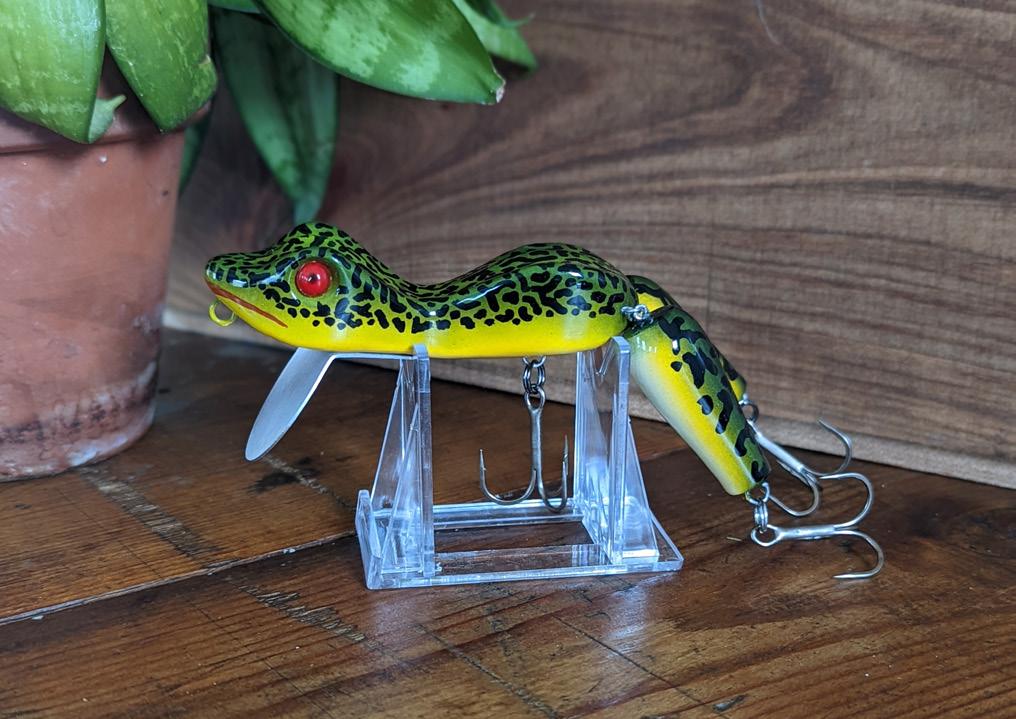
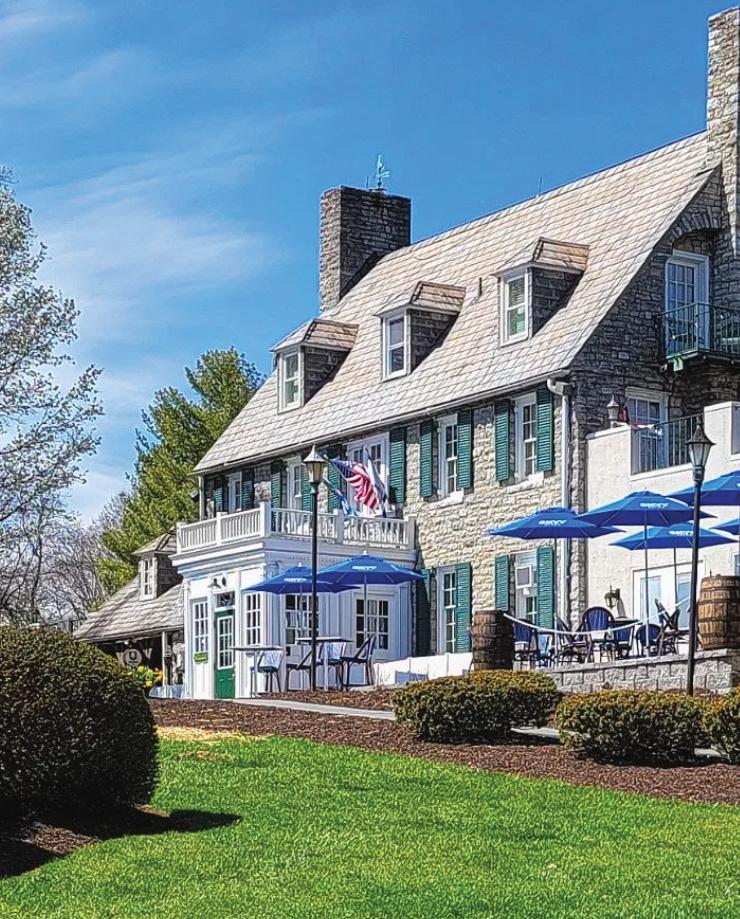 STORY BY JOHN KELLY
PHOTOS COURTESY OF THE BAVARIAN INN
STORY BY JOHN KELLY
PHOTOS COURTESY OF THE BAVARIAN INN
David Asam has been focused on hospitality for as long as he can remember, which makes sense since he was a mere toddler when his parents packed up a station wagon in Washington, D.C., in 1977 and moved him and his brother Christian to Shepherdstown, West Virginia to start the Bavarian Inn.
“It was just a little Greystone building,” Ansam said. “My father was cooking out of a little two-car garage, my mother was the hostess, and we had one waitress. Our family lived upstairs.”
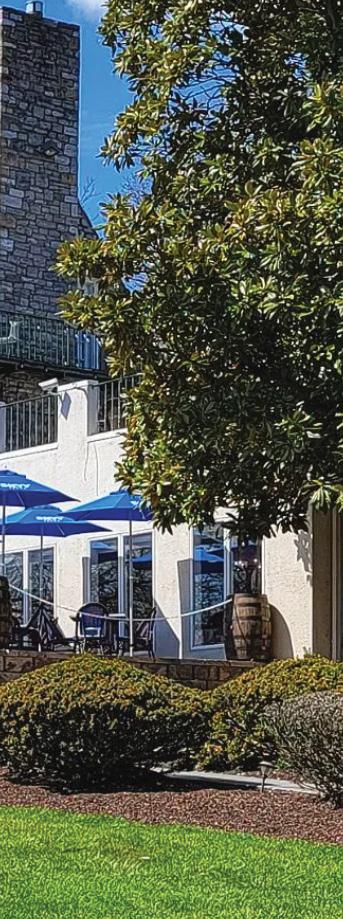
The business, he said, has “grown a little bit since then.”
Today the Bavarian Inn is a 72-room chalet-style gem of a small resort perched above the Potomac River, just an hour from the heart of Washington. The property serves up luxury and comfort in abundance in addition to an array of dining experiences that range from its awardwinning centerpiece Potomac Room fine dining restaurant to a more casual brewpub, the basement Rathskeller restaurant and an outdoor garden dining option. During its 45 years, the property has won some of the industry’s most prestigious awards, including a AAA Four Diamond designation and Wine Spectators “Best Of” Award of Excellence.
German immigrant Erwin Asam and his wife Carol taught their sons the value of hard work and a passion for delivering first-class experiences for their guests. The boys were fixtures on the property throughout their childhoods, so it would make perfect sense that they
A SmAll ReSoRt offeRing libAtionS, luxuRy And ComfoRt in JeffeRSon County, WeSt ViRginiA
would one day head up the family biz—but not before taking a bit of sage advice from their dad.
“One of the things our dad liked to say was that we should go and make mistakes on other people’s dimes,” Asam said.
Asam heeded that advice by graduating from Cornell’s prestigious hospitality school and then working at high-end properties and restaurants across the country. These included Four Seasons Resorts in Philadelphia and Santa Barbara and at high-end independent restaurants. He brought his many lessons home to Shepherdstown and the family business in 2006, following Christian, who had returned from his own hospitality career to join the business the same year.
While they are indeed a long way from that single building where their parents launched their dream property, the foundation of the business has never changed.
“Our parents instilled in us the idea of total commitment to the business,” he said. “We are very much hands on, and you will probably see one of us there every single day. We would never ask any of our
employees or staff to do anything that we wouldn’t do ourselves, and that includes vacuuming, cleaning out toilets, running trays, bussing tables or jumping behind the line and cooking. We really want to focus on the little things and making sure our service is friendly and efficient without being overbearing.”
The brothers are not the only ones keeping their hands on the business. On many nights you will find their parents happily greeting guests and sharing memories with old friends.
The family’s attention to detail shows throughout the property and has been a cornerstone of its evolution from an inn to a resort-style property.
“Today’s traveler is really looking for an experience,” Asom said. “They kind of want to be told what to do. There are so many things you can do on our property, especially in the summertime. Our guests love to visit the beautiful and relaxing Infinity 101 Pool and Bar. They love to take advantage of our tennis and pickleball courts and have access to a beautiful private golf course just a few minutes down the road.”
One of the resort’s greatest attractions, he said, is its easy access

to a wealth of local attractions in Harpers Ferry, ranging from rafting, hiking and biking the C&O Canal, and all the shopping, dining and firstclass entertainment Jefferson County has to offer.

Another important evolution at the property came with the launch of Bavarian Brothers Brewing, which was introduced just over five years ago and features an array of outstanding seasonal beers, a brewpub, lounge and outdoor beer garden.

“We have a great brewmaster by the name of Harry Wright,” Asam said. “He and his assistant Nick Ledden make delicious and high-quality beers, and the brewery offers a nice contrast to our outstanding Potomac Room. The brewery offers the same great service and great food you find across our property, but in a little more casual atmosphere, so you don’t feel like you must put on a jacket and tie and have a long and luxurious meal. It’s a great way to have some outstanding beer and libations and enjoy good company.”
Asked to describe a dream one-night escape to the Bavarian Inn, Asam said, “You might start by heading down to the inifiity pool for a
dip and/or a cocktail, then maybe a stroll through town to do a little shopping. Once you get back to your room, you might kick back, soak in the jacuzzi tub, then get ready for a great dining experience. After dinner, you can enjoy a drink by the fire pits, roast some s’mores, or maybe go down to the Rathskeller to enjoy some live music, and call it a day before waking to a beautiful sunrise and heading home relaxed and recharged—or stay another day and do it all again.”
Book your own getaway by visiting bavarianinnwv.com.
John Kelly is the managing editor of The Virginia Sportsman. He is a writer and public relations professional based in Charlottesville, Va., whose work has appeared in the UVA Arts Magazine, Albemarle Magazine and USA Today, among other publications. Kelly also works regularly throughout Central Virginia as a singer songwriter and recently released an album of original songs titled “In Between.”





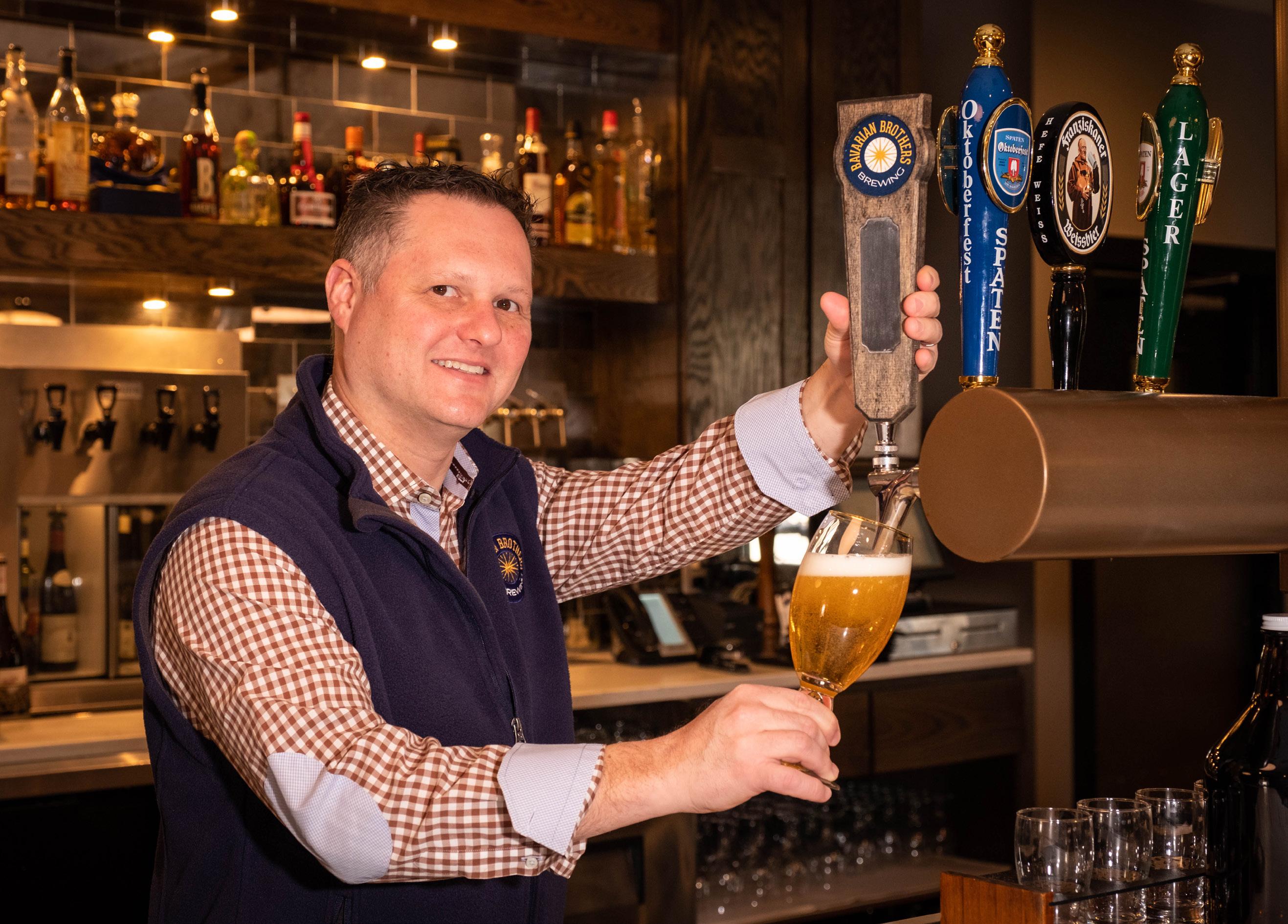




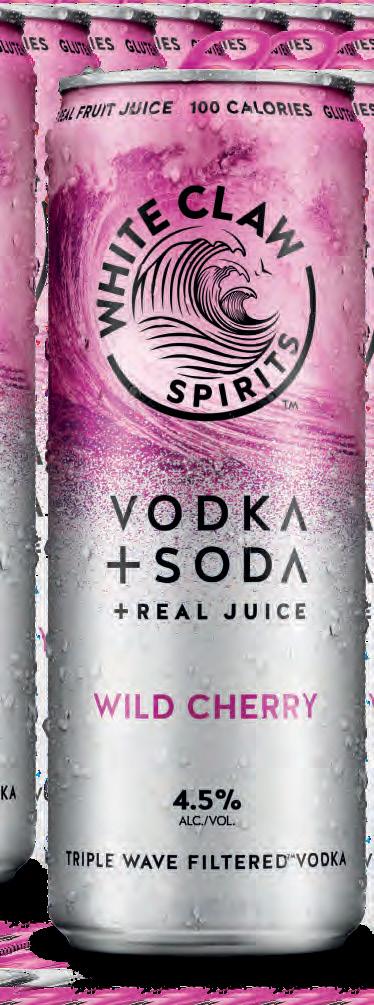
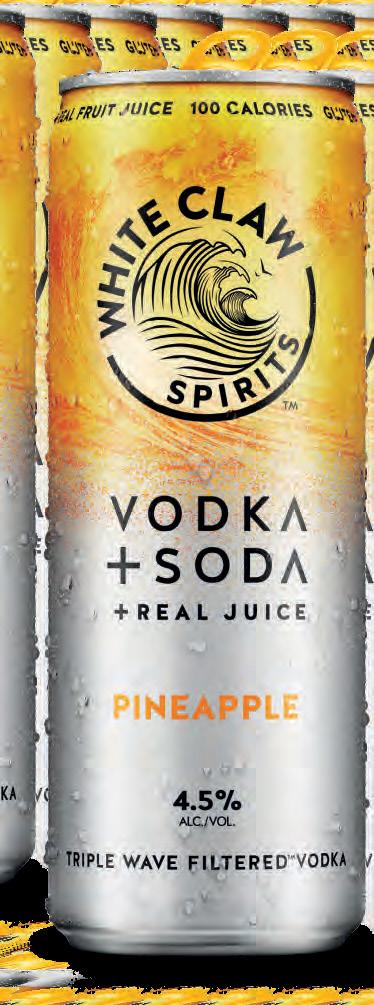


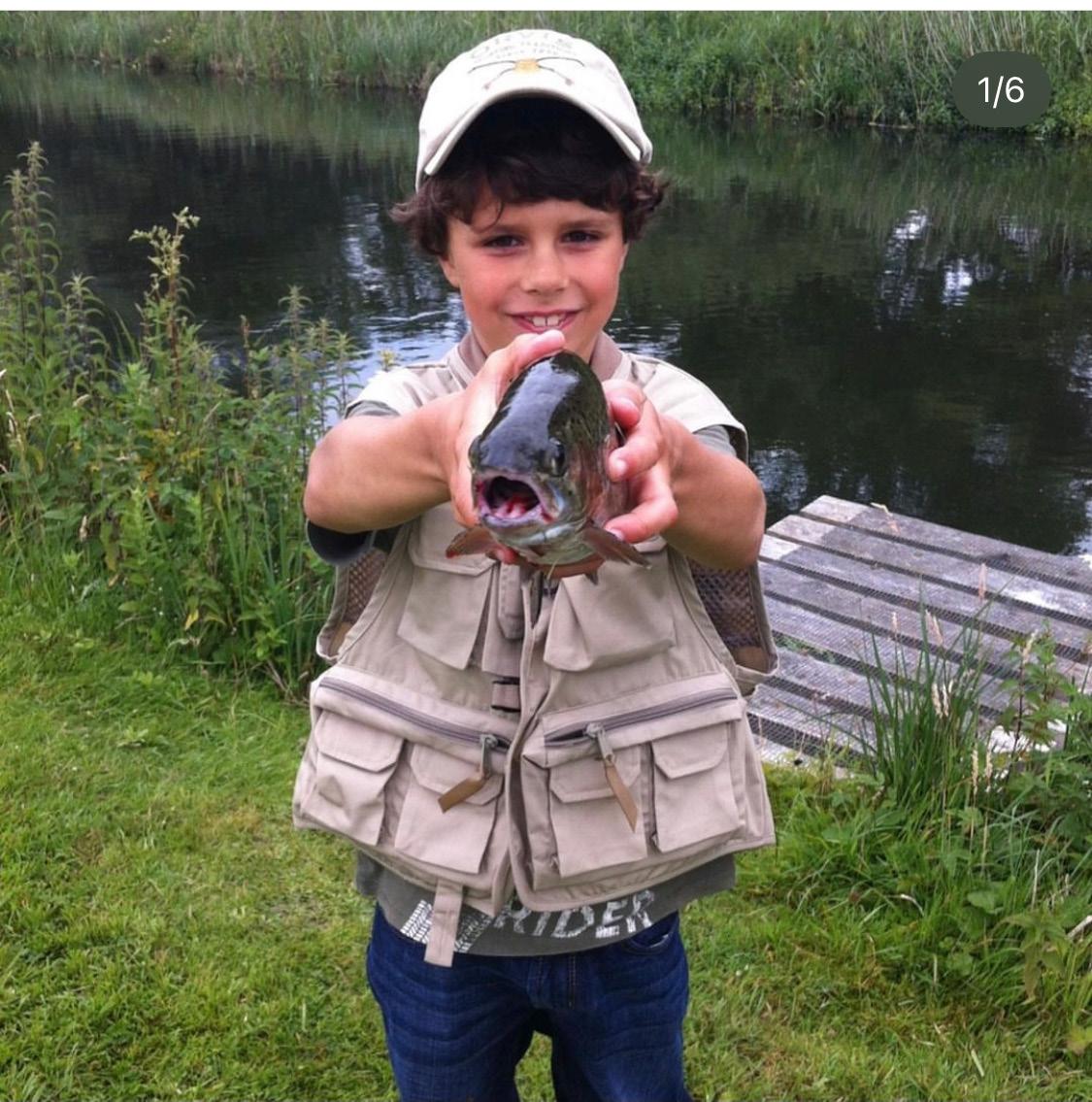 STORY AND PHOTOS BY MERRILL WATSON
STORY AND PHOTOS BY MERRILL WATSON
Dressed in waders, Dad slipped on the mossy rocks and into shallow-yet-fast-moving Burney Creek. He’d taken one step towards me to help with a snarled line and went down instantly. Eight-year-old me imagined him careening through the rapids with a final and fatal cascade over Burney Falls and into the icy pool 120 feet below. Fortunately, the worst that happened was his waders filled with water, he didn’t catch any fish and my own line remained tangled in overhanging Douglas fir.
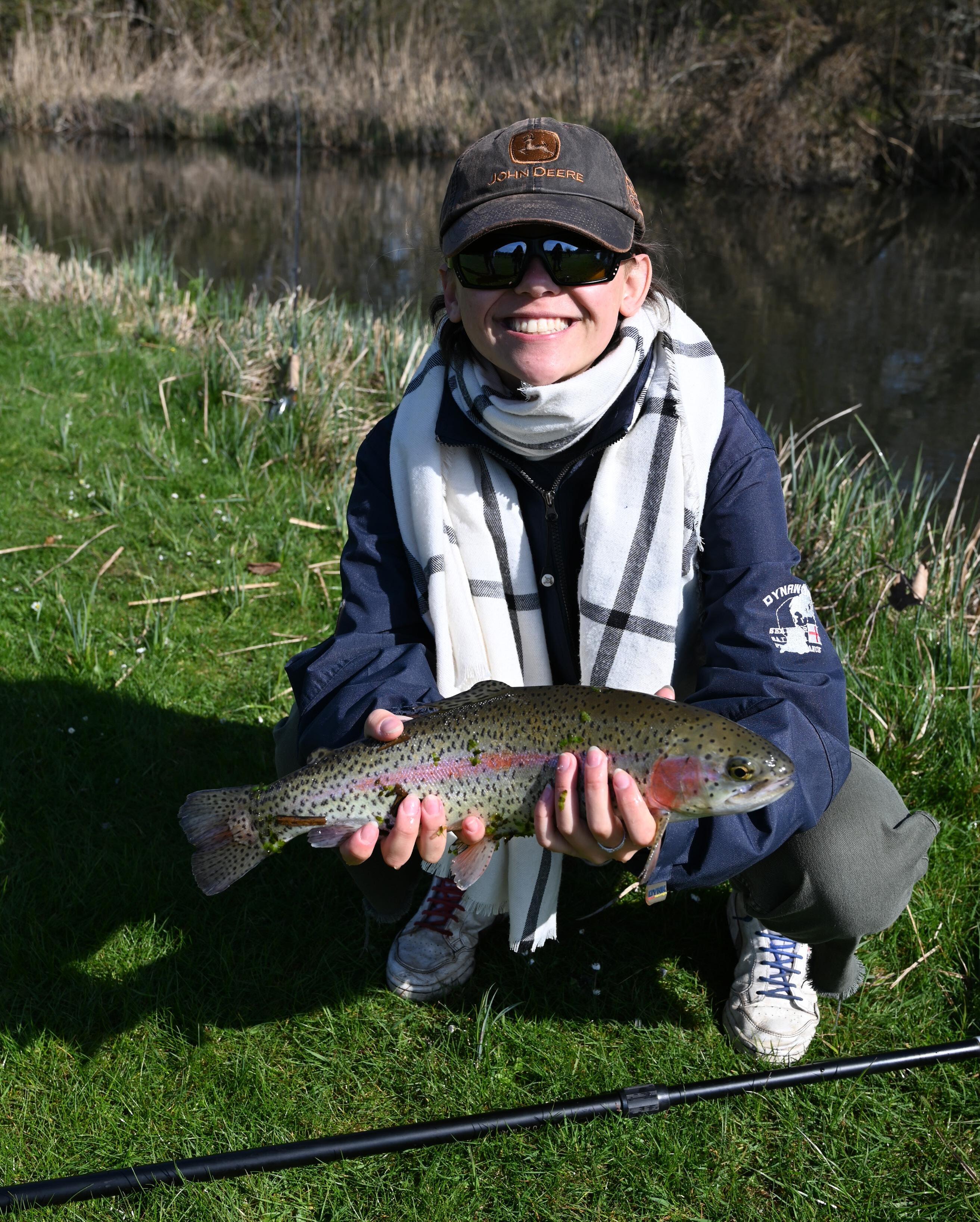
Mostly, our summer vacations involved fly fishing on a remote river or lake in California. One epic trip involved riding horses into the wilds near Mount Whitney in search of the state freshwater fish, Oncorhynchus mykiss aquabonita, better known as California golden trout, a species so beautiful that it has a wilderness named after it. We even fished Chuck Yeager’s favorite beat. The renowned pilot didn’t seem too excited to encounter four noisy teenagers clambering along the rocks by the creek when he thought he was alone, all those miles in.
Like Yeager, Dad found an escape fly fishing in the backcountry, even with us tagging along. Through fishing we learned about nature, how to read a river, how to tie a fly on and how to gut a fish. We even learned a Watson family secret: rubbing the joints of the rod in the crease of our noses to help lubricate the connection. When I had my own children, I was keen to continue the traditions, create memories and teach the same skills.
I took my son JP on our first fishing trip when he was a boy. Not knowing much about fishing in England, I turned to Orvis, which owns beautiful stretches on famous chalk streams—the Test and the Itchen. That first trip was a bit ambitious on my part; expecting a five-year-old to spend the
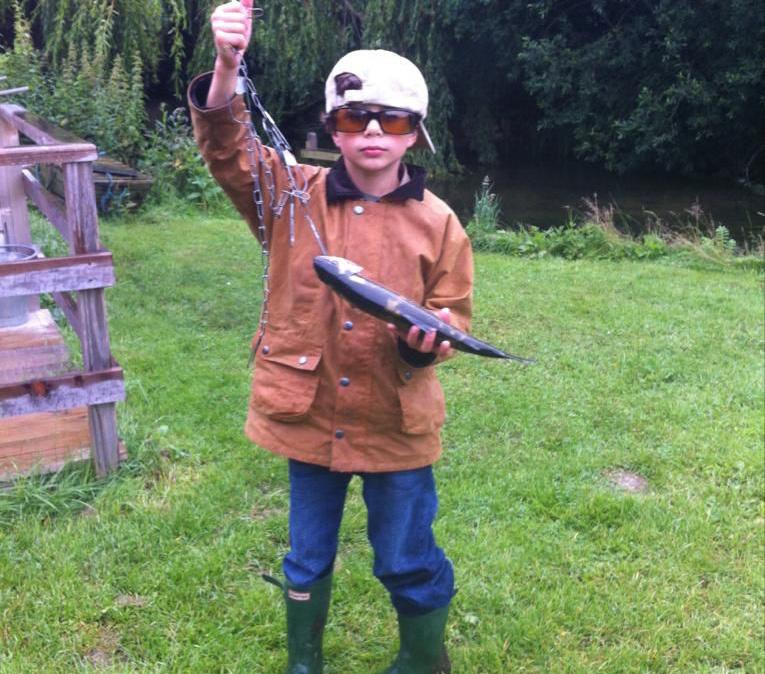
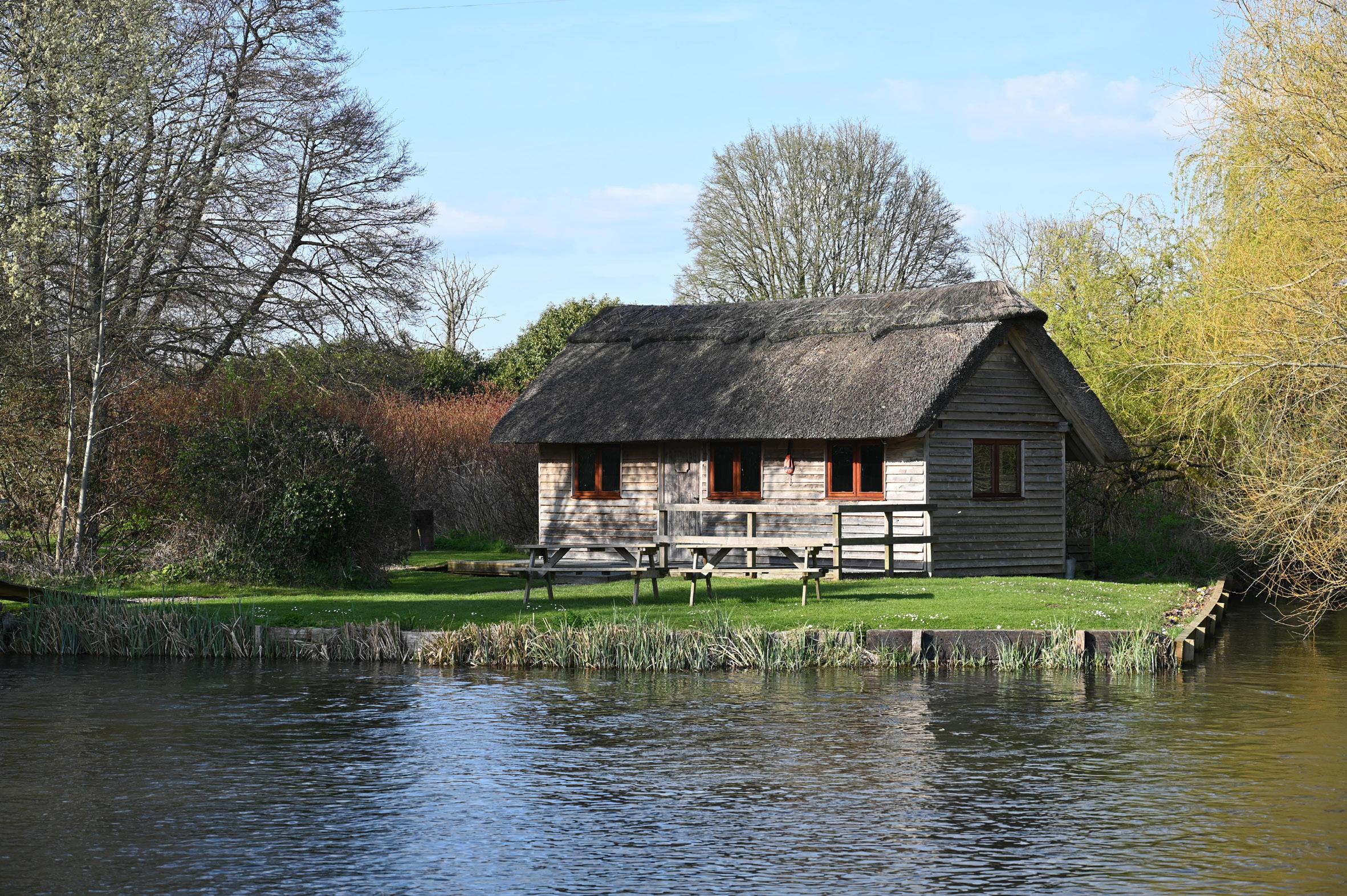
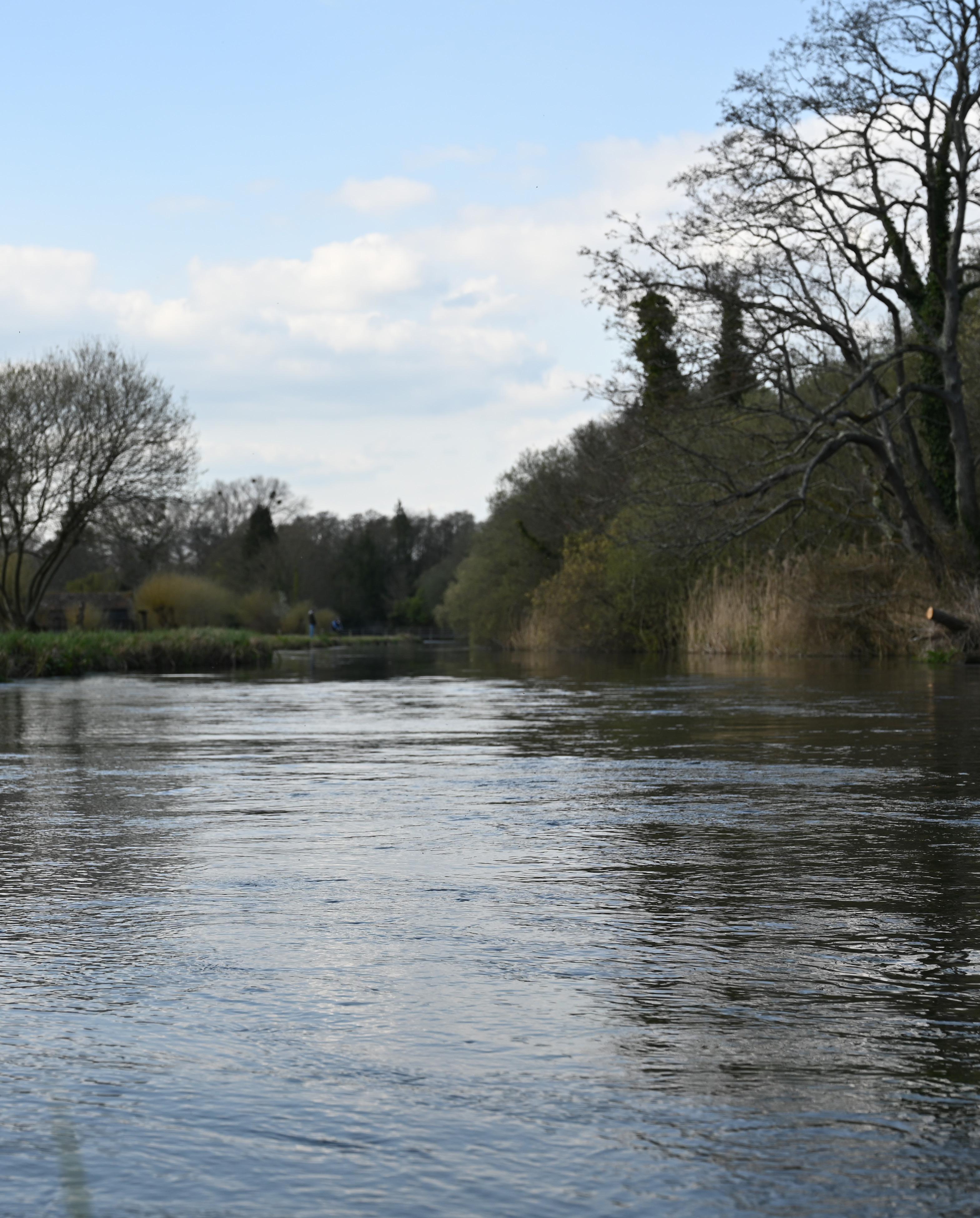
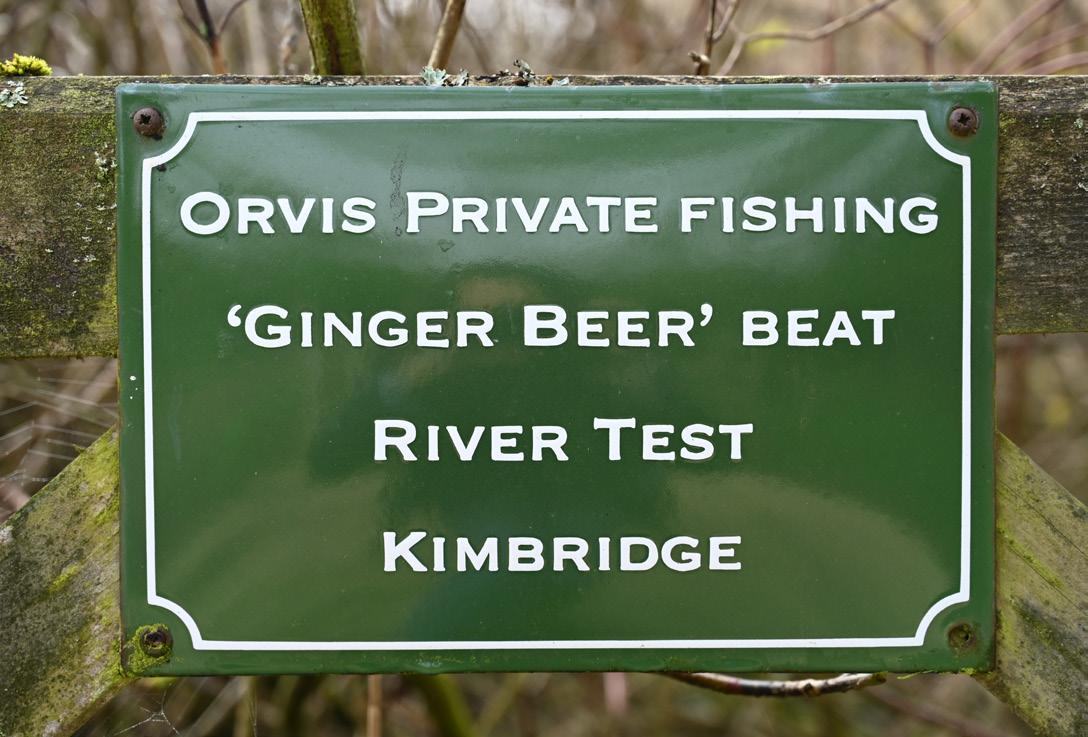
day on the bank quietly stalking fish was crazy. We did take home one big brown trout that we smoked, but the real success of the trip was the beginning of JP’s love of the sport. It remains one of his fondest childhood memories.
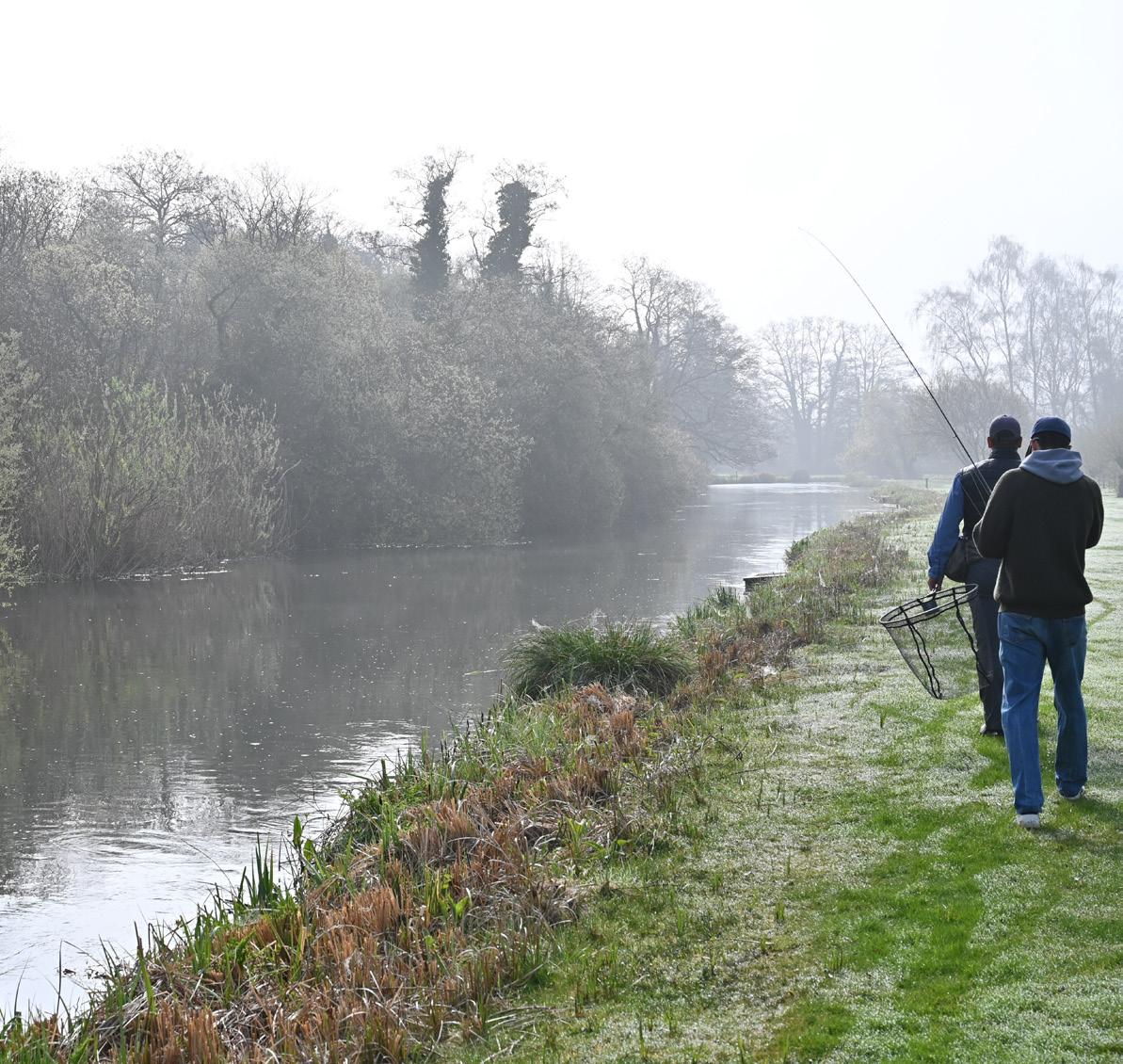
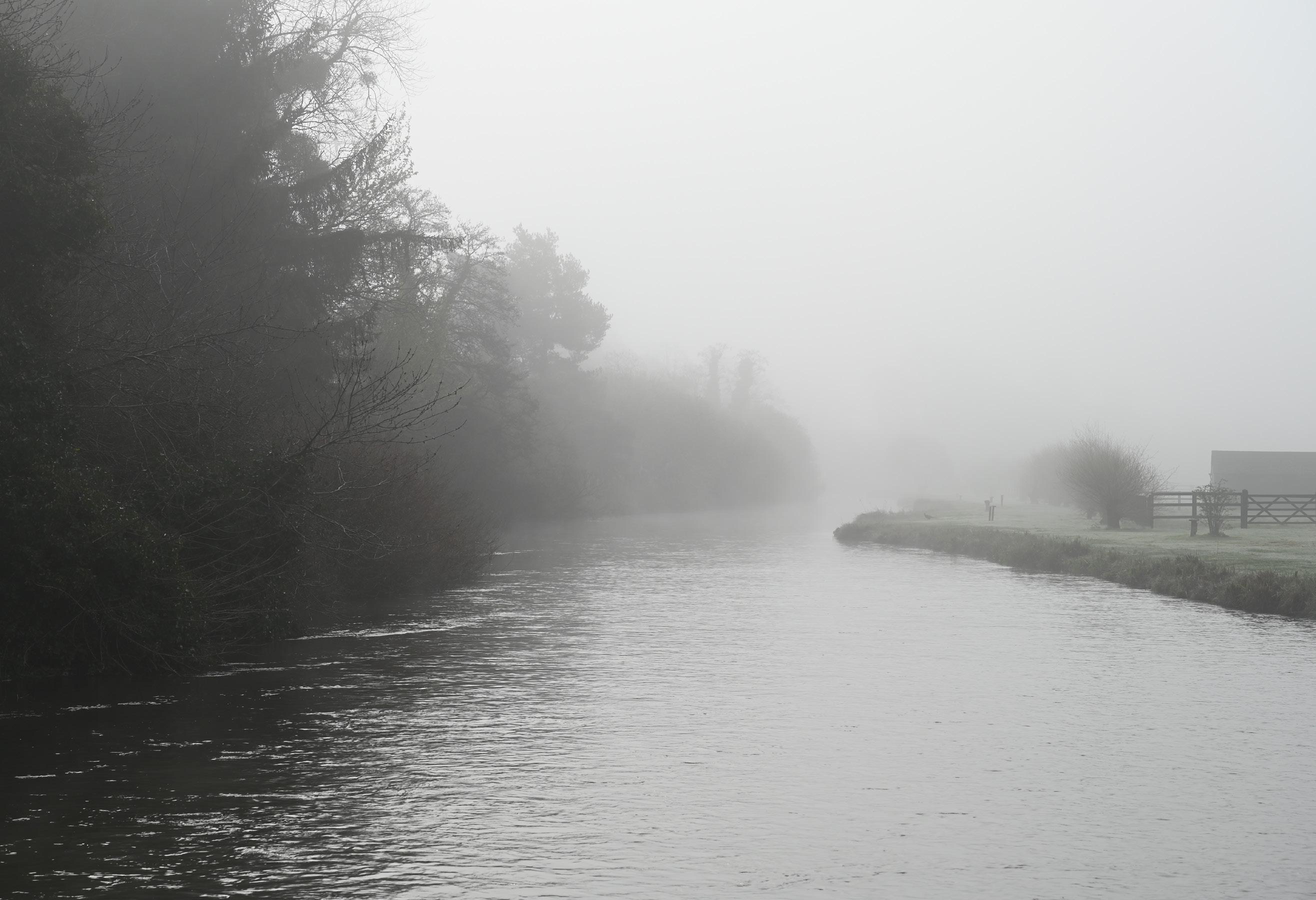
We have fished periodically over the years, but the times we spend together now are more sporadic. When I decided to write about chalk stream fishing for The Virginia Sportsman, I thought it would be a great opportunity to connect with JP on the river. The best part is that his girlfriend Ayamé fly fishes too and fished the Test when she was five. Fortunately, they both jumped at the chance to go.
We returned to Stockbridge and the White Hart Inn, the same small town and pub we visited 14 years ago. Stockbridge, a village of thatched houses, pretty churches and country pubs, lies in the Test Valley of Hampshire in southern England. The Test flows through Stockbridge, considered the birthplace of modern fly fishing and the sport’s Mecca. The Test rises from springs in a chalk bedrock creating clear waters with less seasonal variation than other rivers.
The vein of chalk stretches as far as the White Cliffs of Dover, but in Wessex it has created a perfect ecology for trout and salmon.
We checked into the pub and enjoyed a great dinner. Surrounded by fly-fishing ephemerae and hearty locals, we reminisced about previous trips and headed to bed early for a good start in the morning.
After a full English breakfast, we met our guide, or ghillie, Adam Sinclair of HATCH Fly Fishing, on the Ginger Beer beat, Orvis’ private stretch on the Test. Early in the season, the water, although smooth and glassy, was slightly high and not warm enough for a good hatch; the popular mayfly season was still weeks off. Add fog to the mix, and visibility was tough. But Sinclair remained confident and assured us we would have a good day.
Sinclair has been a ghillie for eight years and spent 26 years in the British army. After a “gruesome” tour in Iraq, an army friend took him fishing to help him find respite from his demons. That day he discovered calm—and a ton of fish.
“I was hooked,” he said, and being in nature casting and concentrating kept his mind off the horrors of war.

Add fog to the mix, and visibility was tough. But Sinclair remained confident and assured us we would have a good day.(TOP LEFT) IN THE MORNING, A FOGGY MIST MADE THE CONDITIONS CHALLENGING WITH POOR VISIBILITY. (BOTTOM LEFT) JP AND GUIDE ADAM SINCLAIR HEAD OUT ALONG THE BANKS OF THE RIVER TEST. (TOP RIGHT) SINCLAIR TEACHES AYAMÉ ABOUT THE FAMOUS CHALK STREAM BEFORE HELPING HER WITH HER CASTING.
Since then, he has been working with the armed forces using fly fishing as an alternative means to address PTSD.
Looking at the smooth flow of the River Test, I began to relax too. It was already turning out to be a wonderful day.
After discussing tactics, selecting flies and exchanging competitive jibes, we headed down the grassy bank and flushed a pheasant on the way. Sinclair suggested we begin at the bottom of the beat and work our way upriver to stay behind the fish.
We started with a Red Tag Nymph. It was chilly, so a wet fly was the best option for the morning as a dry fly without a hatch might be suspicious to the ever-wily brown trout, our primary target. We found our spots on the river, and, after a short refresher from Sinclair, started casting. Everyone was a little rusty, and the casts weren’t that smooth, but soon we found a rhythm.
A roll cast was perfect for getting the fly out into the middle of the river. I heard the first cuckoo of the year, always a marker that winter has gone and a good omen for me. I am a fair-weather angler and was
happy when the fog cleared and the temperature warmed. Sunshine also made it easier to see fish.
“I’ve got one on,” Ayamé said after her third cast. The fish got away and left a bent fly in its wake. It must have been a brute.
Excitement waned but competitive determination returned as JP hooked a big brown trout minutes later. JP was determined to keep his on the line after witnessing Ayamé lose her fish. After a little bit of back and forth, he landed his fish. I took photos, and my son released his prize.
Suddenly, Ayamé hooked an enormous rainbow. With patience and skill, she brought her fish to Sinclair’s net too. Ayamé’s smile was as wide as her fish was long.
We took three more rainbows—and hooked twice an equal number of tree branches, which brought back memories. The fishing slowed and we headed back to Stockbridge for lunch and retail therapy at Robjent’s. JP and Ayamé emerged with new fishing hats, perfect for collecting the winning flies of the day.
Back on the river, the fish were still not biting. We tried different flies:
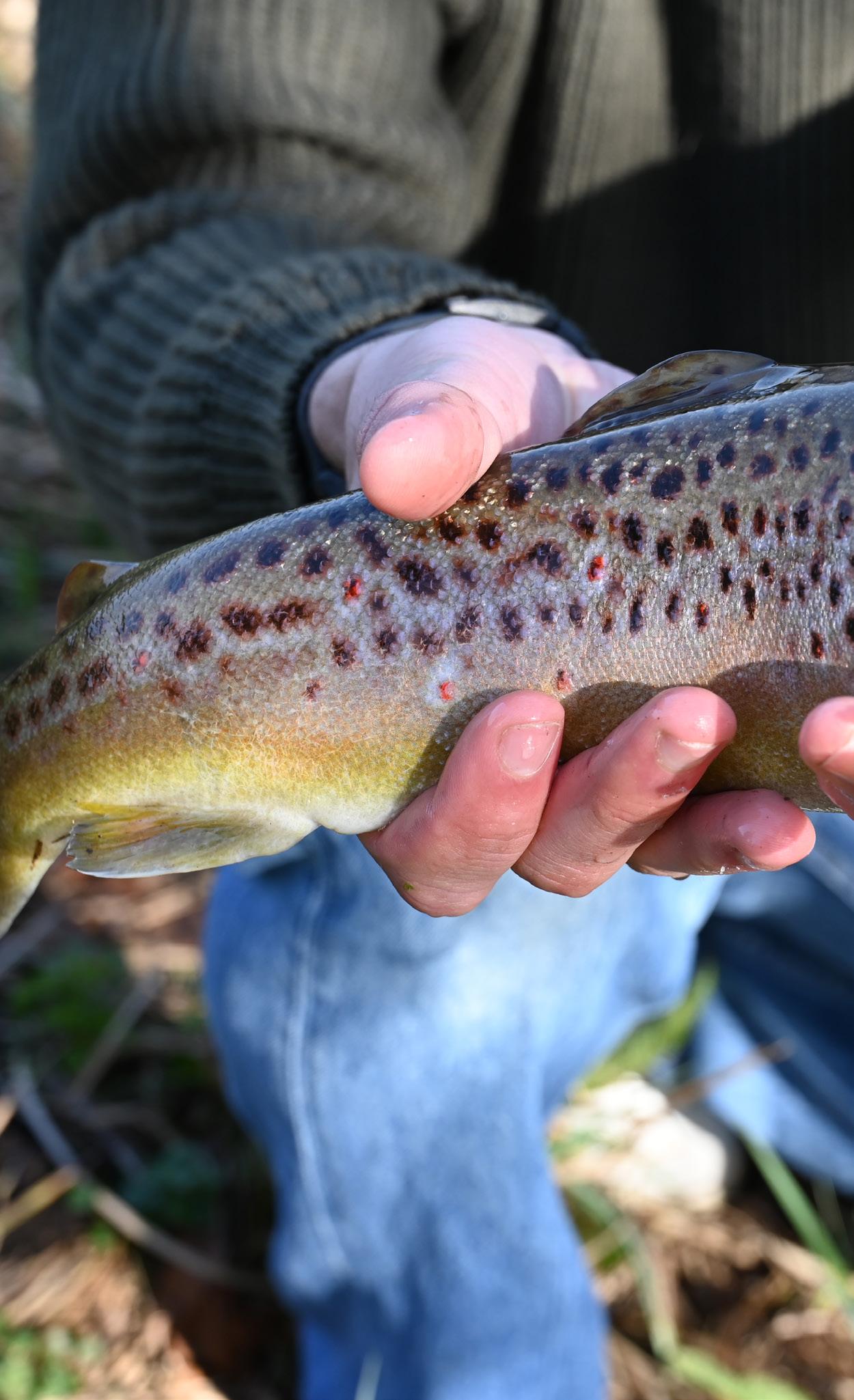
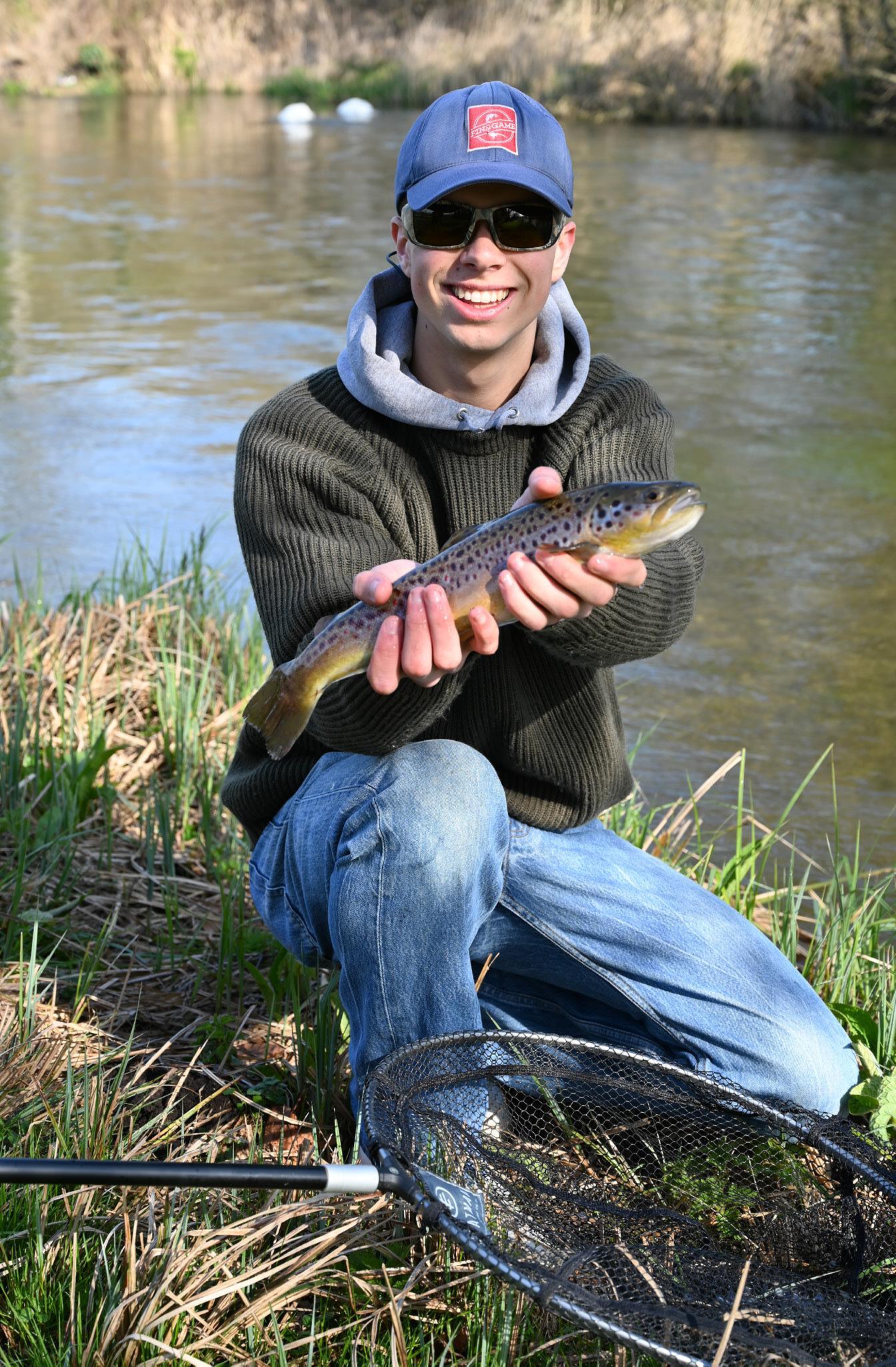
Yellow Humpy, an Olive; Pheasant Tail Nymphs; a Duracell and a Hare’s Grub. Ayamé hooked a grayling, which has a characteristic red dorsal fin resembling a sail. Anglers call the fish the “lady of the stream.”
“I get corporate people out here using their phones the whole time,” said Sinclair, appreciating our focus. “One guy spent time in the fishing cabin on his laptop.”
What a wasted opportunity, I thought. Our day would have been shorter if we only cared about catching fish. We enjoyed the tranquility and the beauty of the stream. Ayamé claimed catching a big trout was her favorite part of the day. She smiled with a competitive grin, then said, “I enjoyed the sun and the birds too.”
We caught three more rainbows. JP caught a grayling. Then we spotted something different on the river—a pike with a brown trout in its mouth.
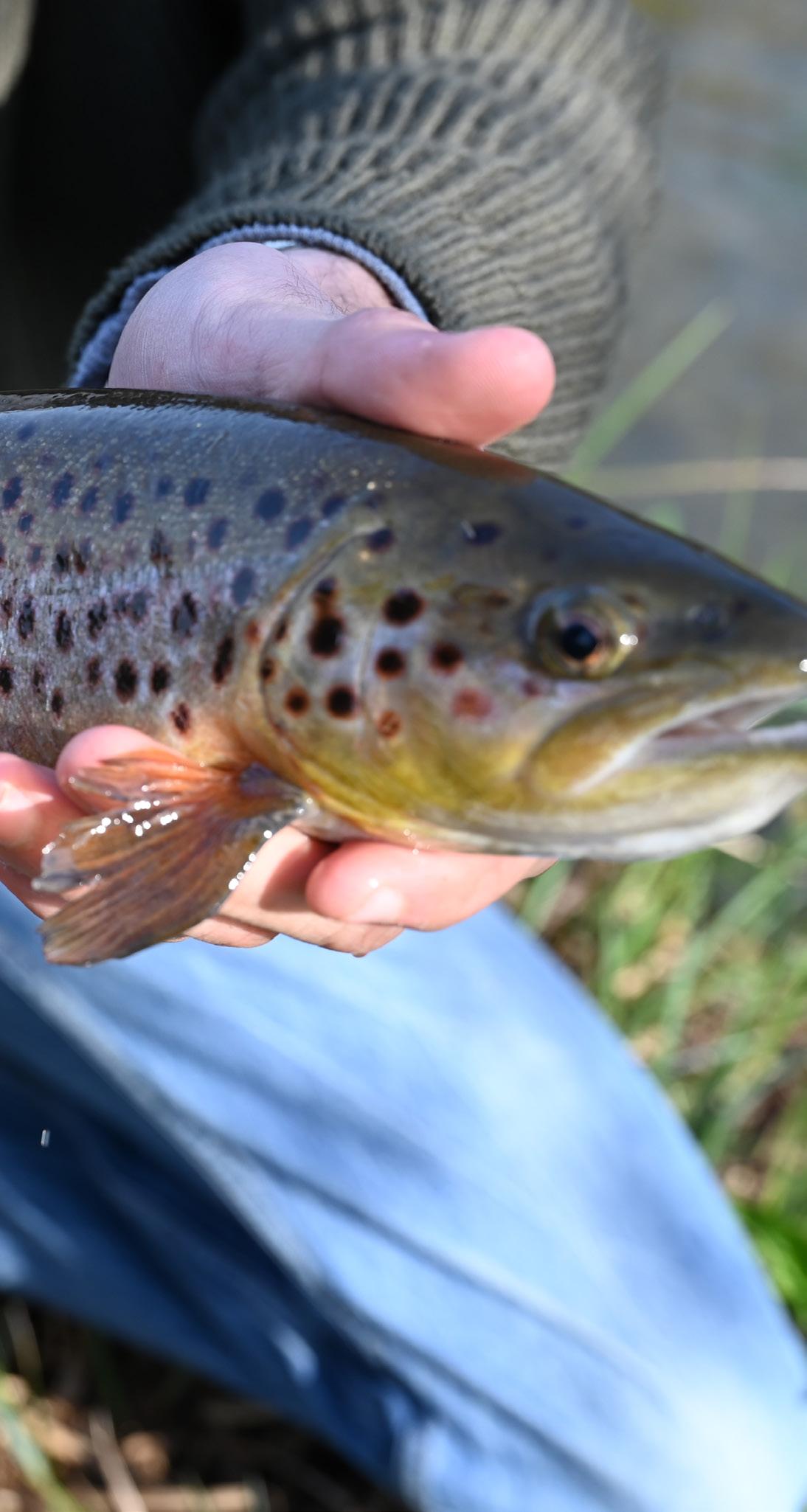
“It looks like a dog with a bone,” Ayamé said.
When I booked our trip to share an experience with my son and recreate memories, I had no idea how the day would turn out. We caught fish and lost others. We laughed regardless. Our main takeaway was
gaining a greater appreciation of the restorative power of nature through fly fishing. That was the lesson Dad wanted to teach me long ago.
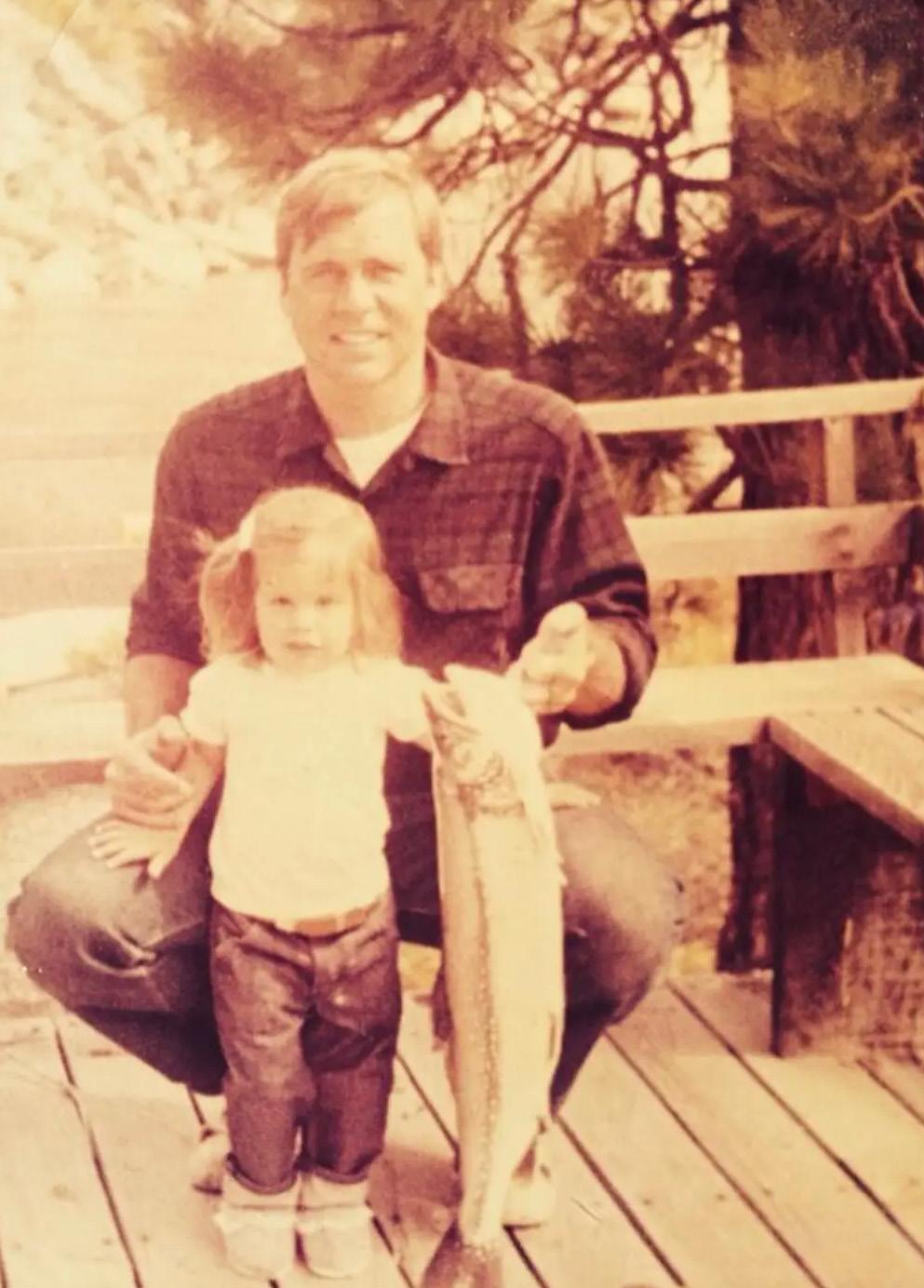
Thanks, Dad.
For more information, visit sportingadventures@orvis.co.uk and hatchflyfishing@outlook.com.
Merrill Watson, a native Californian living in the English countryside, fell in love with writing while sending letters home from her hut in Senegal in the 1990s. A freelance writer, she loves to share her passions for outdoor sports, travel and art with her readers and fellow travelers on the ground during tours in England and on the African continent. For more information, contact her at mewatson@protonmail.com.
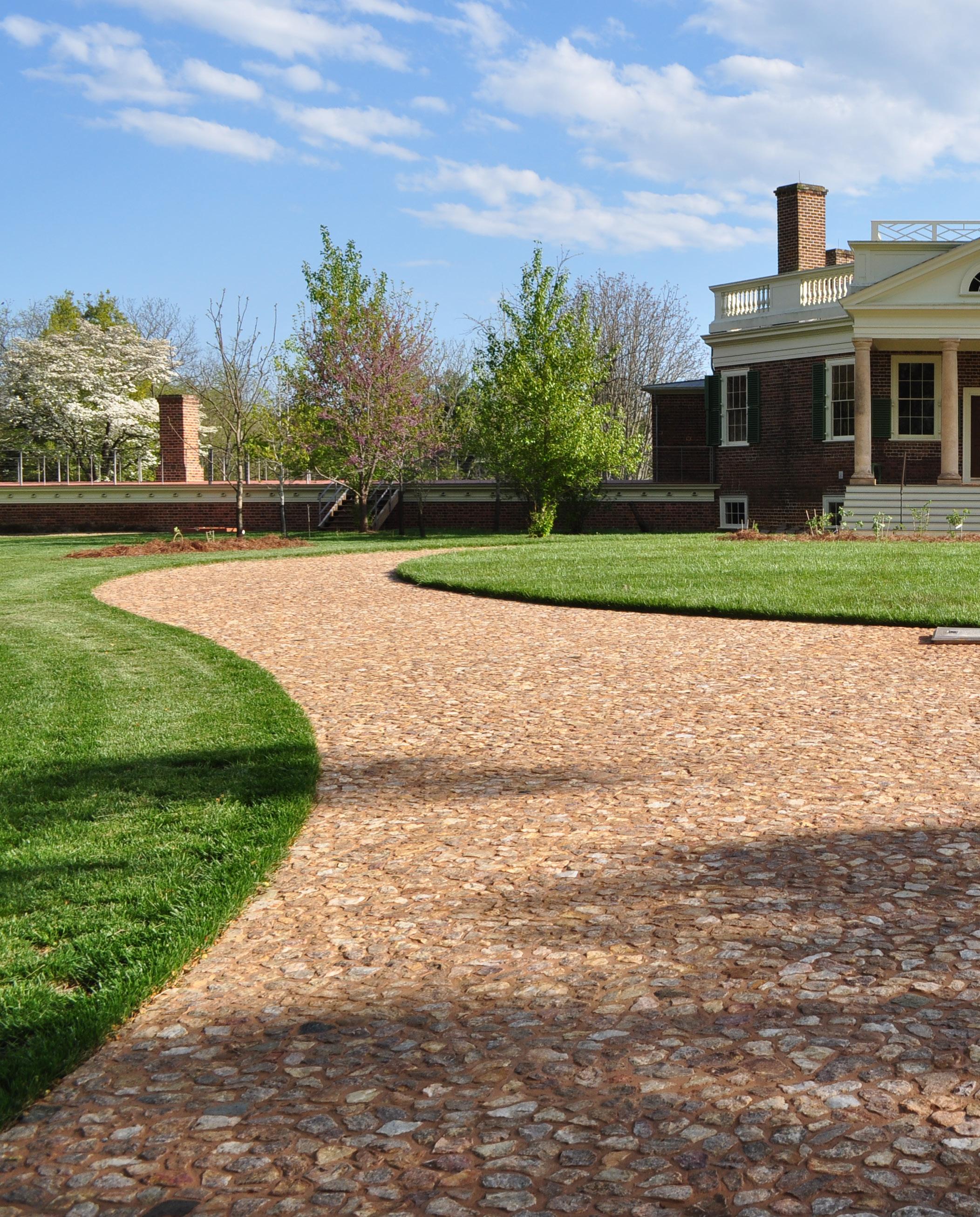
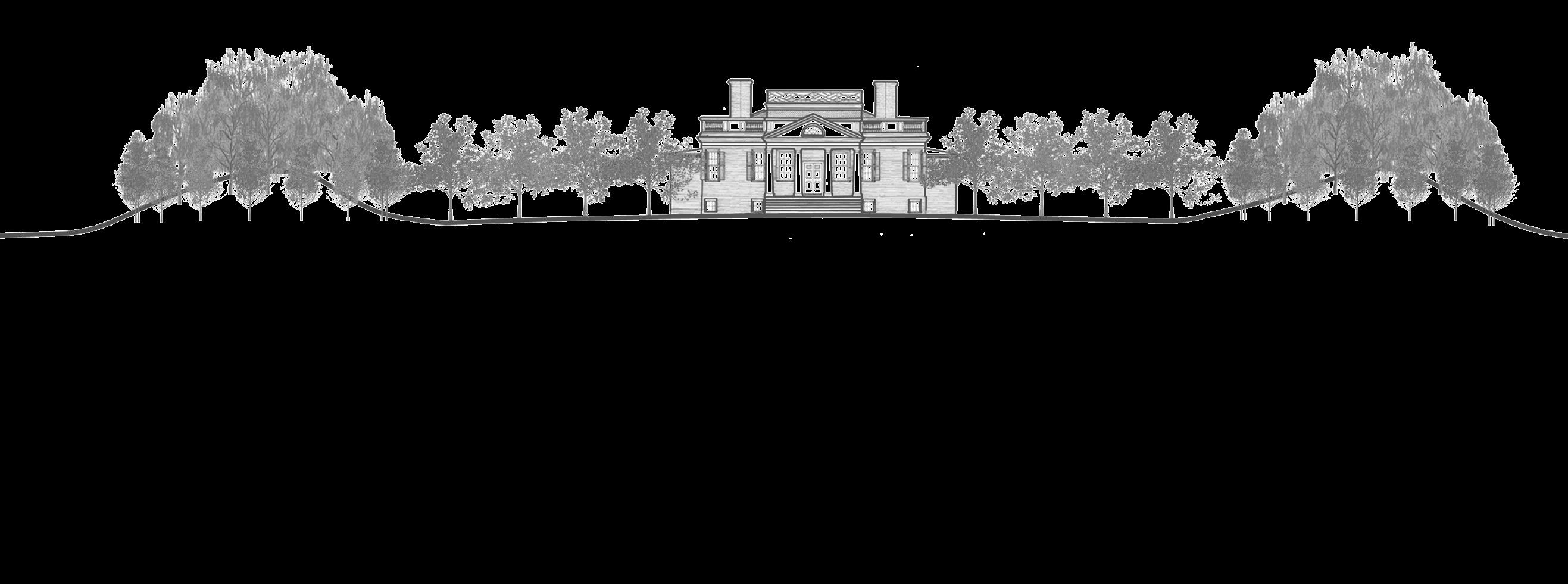
 STORY BY J. MICHAEL WELTON
STORY BY J. MICHAEL WELTON
Decades in the making, the first phase of the revitalization of Thomas Jefferson’s landscape at Poplar Forest is now complete.
Since the late 1980s, a team of archeologists and landscape architects has worked to uncover, restore and preserve the grounds of the third president’s retreat in Bedford County. Jefferson, a master architect, saw no difference between the built environment and landscape elements. “He thought of them on equal terms, despite their differences,” says landscape architect Will Rieley, founding principal of Charlottesville-based Rieley & Associates.
Jefferson mingled both at Poplar Forest from 1806 until a few years before his death in 1826. He used them to design and build the rural villa he gleaned in part from Andrea Palladio’s “Four Books of Architecture.” Palladio was Jefferson’s 16th-century architect of choice, though he relied also on contemporary British interpretations of the Italian’s work.
“Conceptually, it’s valid to think of Poplar Forest as a five-part Palladian house, but he uses landscape elements for four of the five parts,” Rieley says. “The brick-and-mortar octagonal house is the only architecture itself—and there are two hyphens [connectors] to two mounds.”
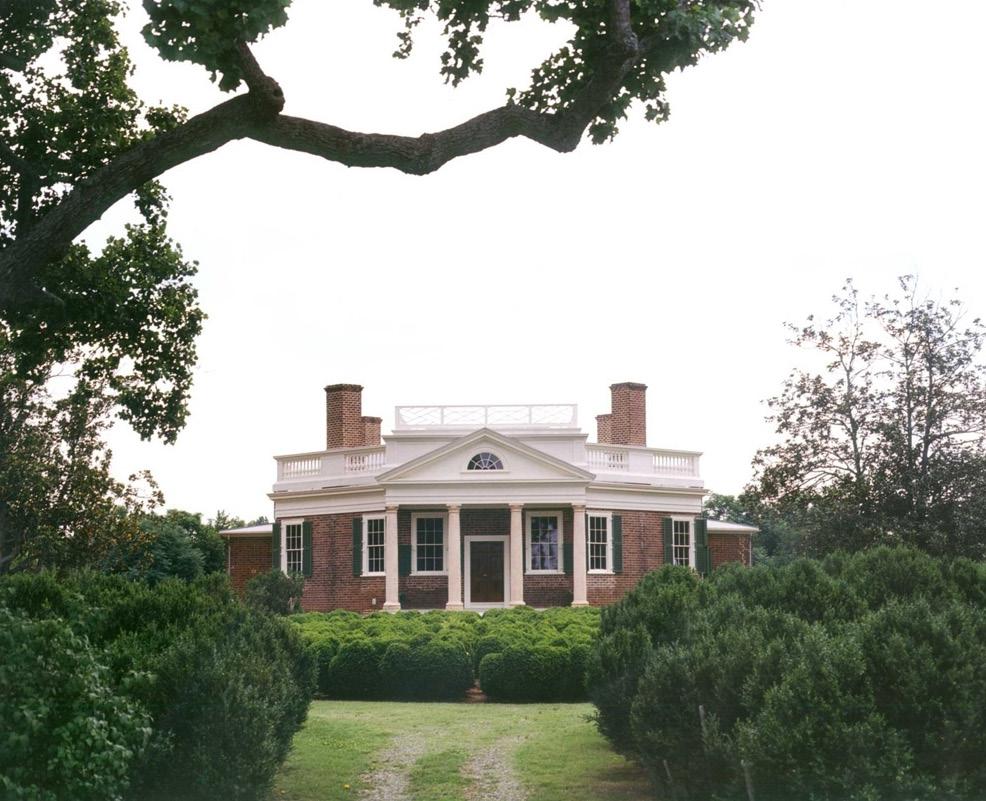
The mounds rise 12 feet in height and consist of dirt dug by enslaved laborers from the cellar of the house and its south lawn. They moved the dirt to create end pavilions 120 feet from the east and west sides of the home. The home was connected to its end pavilions by its hyphens—two parallel rows of four paper mulberry trees on each side.
Jefferson would eventually remove the southern half of the double row of trees on the east and replace it with a brick-andmortar wing, while the western side retained its double row of trees. In a bold fusion of architecture and landscape, he topped the mounds with willow trees and surrounded them with aspens. The willows were intended to form a rounded dome, while the lightly
colored aspens would mimic columns.
Rieley was laser-focused on Poplar Forest’s restoration from 2010 to 2023 while he was landscape architect for the Garden Club of Virginia, the project’s major partner and source of funding. But his work on the retreat preceded that. “In the mid-nineties, we worked with then-Poplar Forest archaeologist Barbara Heath to analyze mapping that showed the various parcels that Jefferson acquired and dispensed with over the years,” he says.
After Jack Gary was named director of archeology and landscapes at Poplar Forest in 2006, he and Rieley began in earnest to restore key elements of Jefferson’s landscape design in 2009. They started with the western double row of paper mulberries—first conducting an archeological dig to locate traces of the original trees. “The archaeological excavations discovered exactly where the trees were, revealing that they were aligned and spaced in a way that would allow future wings to fit in between,”
Gary says. “We had to understand Jefferson as a landscape designer.”
The double row of paper mulberries was replaced in 2011, exactly 200 years after Jefferson planted them. The landscape architects followed his design precisely. Where he’d run out of paper mulberries and substituted a European mulberry, they did the same. “Will and I wanted to make it as accurate as possible,” he says.
In 2018, when Gary left Poplar Forest to become director of archeology at the Colonial Williamsburg Foundation, Eric Proebsting, senior research archeologist, moved up to take his place. Before he left, Gary and Proebsting had discovered the remains of four spiral-shaped clumps of landscape plantings on the north and south sides of the house. Rieley & Associates then collaborated on the analysis of the geometric pattern of the clumps and worked with the Garden Club of Virginia to replant them on the north side; more research is needed for those on the south side.
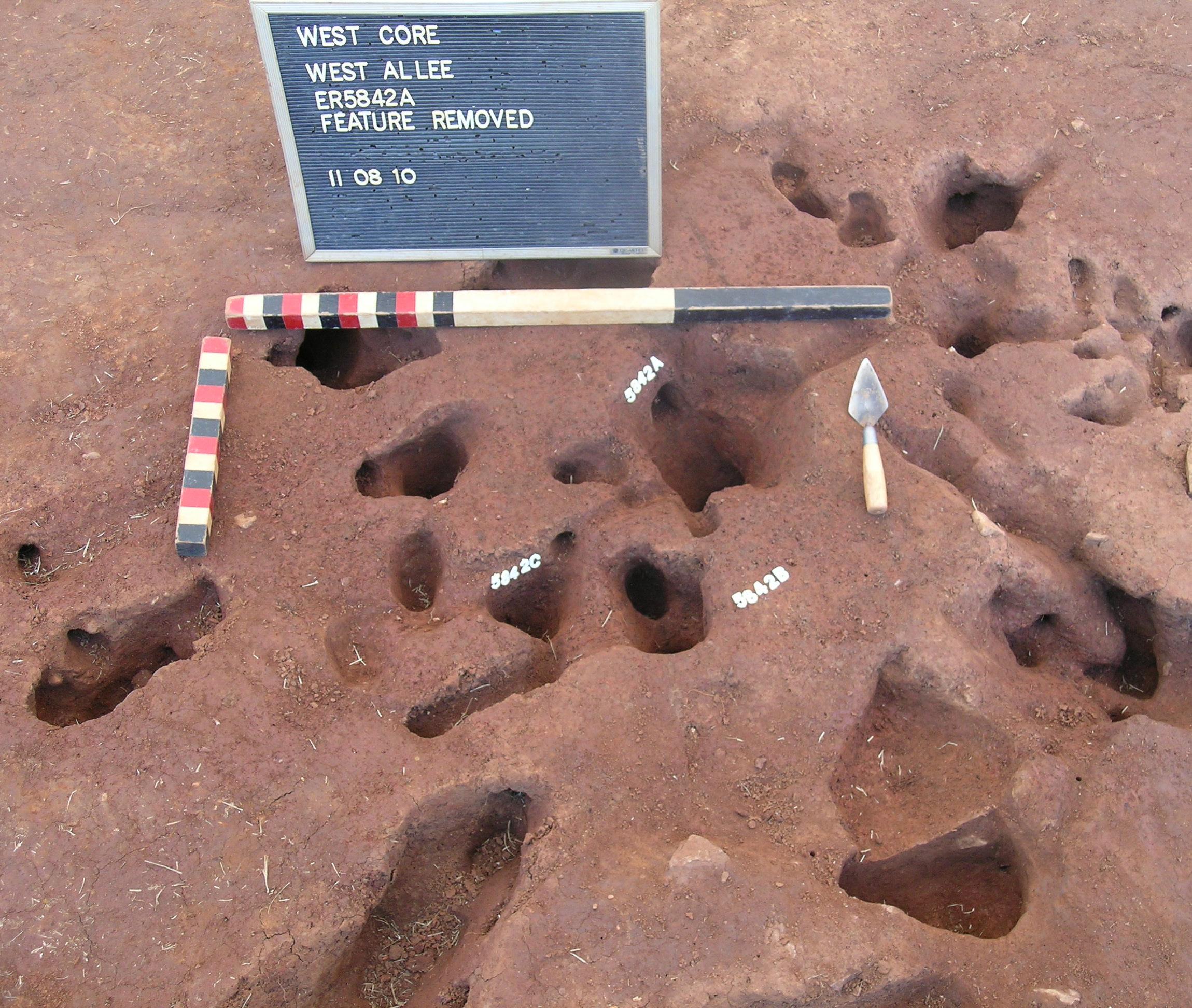
The spirals are 33 feet across, a measurement that was initially foreign to both Gary and Proebsting. “It was the length of the surveyor’s chain that Jefferson was using,” Proebsting says. “In an 1812 note from a friend, Charles Clay, he sends Jefferson for his use a surveyor’s chain—and Jefferson was using it personally.”
The spiral clumps were planted with native North American species—Tulip Poplars, Black Locusts, Athenian and Balsam Poplars, Kentucky Coffees, Dogwoods, Redbuds and Calycanthus. “He was giving different levels of what you’d see in a fully developed forest,” he says. “They would bloom at different times and mature in different spaces in that landscape element.”
Three oval planting beds visible from the north entrance portico were also restored. One is directly in front; one is to the left, and another is to the right. The left and right beds are not symmetrical and lie at a different orientation, possibly to accommodate views from carriages wheeling in around the circular turnaround, Rieley surmises. “Or perhaps they were canted differently to avoid some now absent tree or other feature in the landscape,” he says.
These beds were planted with roses and other ornamentals. “The middle bed is the largest one, with standard roses, and to the right are miniature roses,” Rieley says. “To the left are bristly locusts—their bloom is similar to the color of the roses, but it’s not the same.”
For the carriage turnaround itself, the original Jefferson-era cobblestones were preserved carefully below a new restoration, and protected beneath cloth,
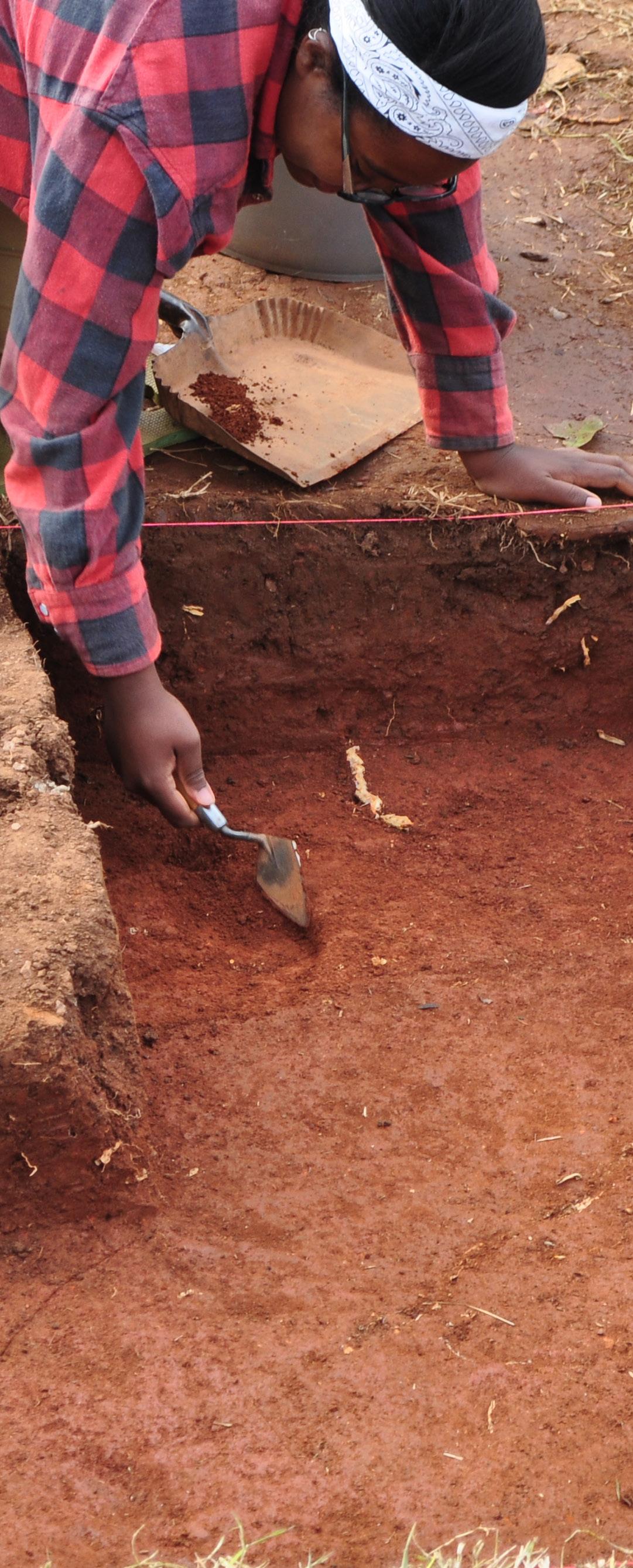 FINDING THE EDGE OF JEFFERSON’S CENTRAL OVAL BED IN 2019 (COURTESY OF POPLAR FOREST)
FINDING THE EDGE OF JEFFERSON’S CENTRAL OVAL BED IN 2019 (COURTESY OF POPLAR FOREST)
gravel, concrete and mortar. Using photogrammetry, the archeologists preserved the original Jefferson-era surface, stone by stone.
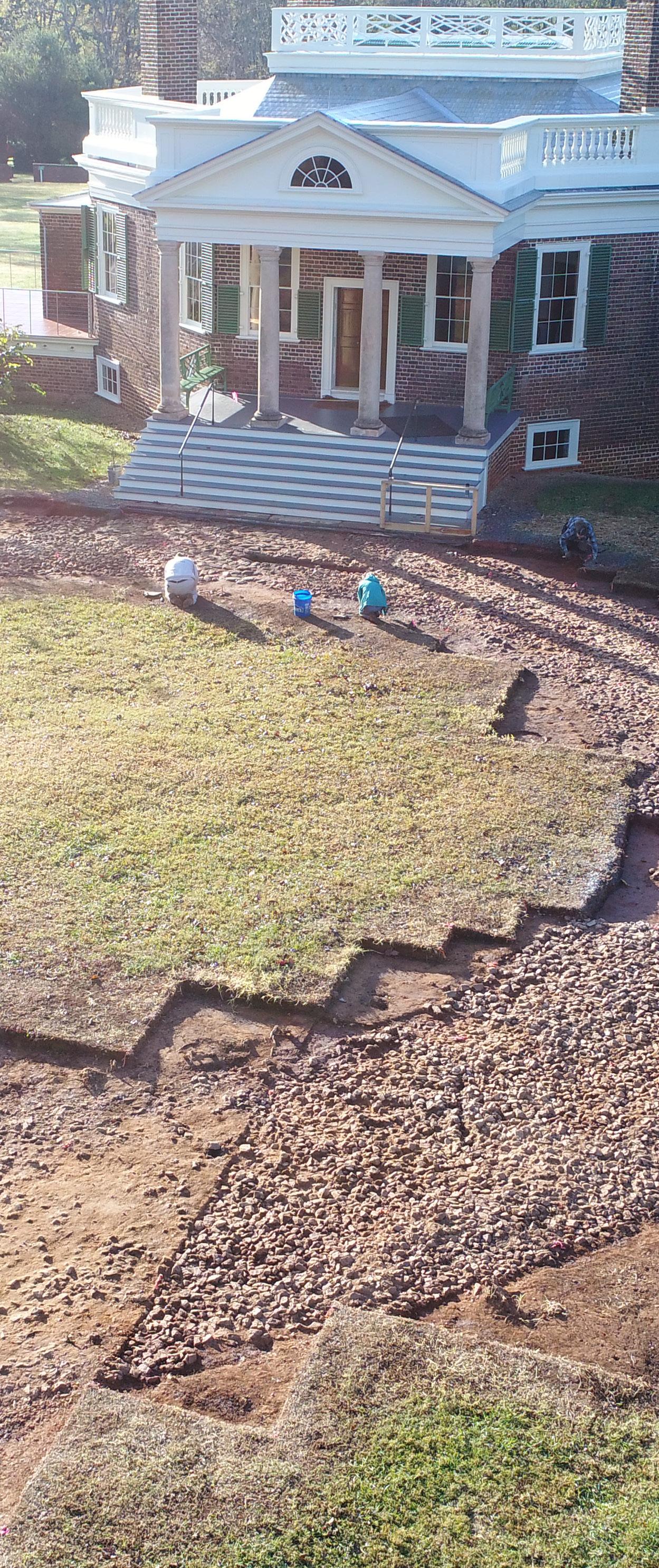
Cobblestones for the new restoration surface came from a nearby sod farm and are the same kind and size as the originals. Flat stones in front of the north portico were originally a local stone quarried on site. All the original stone was delivered by enslaved laborers—there were as many as 94 enslaved people living on the plantation at once during Jefferson’s time there.
“Archeological research has revealed that the area in front of the retreat house was flattened by enslaved laborers,” Proebsting says. “They were also required to gather tens of thousands of stones from nearby agricultural fields to construct the cobblestone surface for the carriage turnaround.”
Enslaved African Americans living at Poplar Forest also were required by Jefferson and his overseers to clear fields, then grow, harvest and prepare crops for sale at market and for use on the plantation. Among their other tasks were tending to livestock and orchards, spinning and weaving cloth, working metal, creating gardens, building houses and outbuildings and mending fences. “Enslaved children were instructed to gather grass seed to sow over bare patches of earth that were exposed on the mounds and other places within the 10-acre ornamental grounds,” he says.
Recognizing the fruits of their labor, as well as the details of Jefferson’s landscape design, plays a significant role in the story of Poplar Forest’s restoration today—and
in the future. In decades to come, their efforts to plant the banks of the sunken south lawn will be recreated. Then there’s the restoration of a circular drive around the entire villa—surrounded by another double row of paper mulberries. And in time, the willows and aspens atop and around the mounds will be replanted.
Without the efforts of enslaved laborers, Poplar Forest could not have been built. They provided the impetus to realize Jefferson’s vision of a unified landscape and architecture.
Rieley’s most recent landscape architecture project is a new entrance road that traverses the fields where those laborers once worked. It ends at a parking area looking up to the retreat they helped build.
It’s not a short drive, but it is one that leads to a landscape laden with multiple layers of design, meaning and history.
J. Michael Welton is the author of “Drawing from Practice: Architects and the Meaning of Freehand” (Routledge: 2015). His articles have appeared in The New York Times, The Washington Post, Metropolis, Dwell, and The News & Observer in Raleigh. He is editor and publisher of the digital design magazine, architectsandartisans.com.
(Editor’s note: The work described here culminated in a special dedication ceremony on Oct. 14, 2021, during which the Garden Club of Virginia officially gifted these four landscape projects, restored under their auspices, to The Corporation for Poplar Forest.)
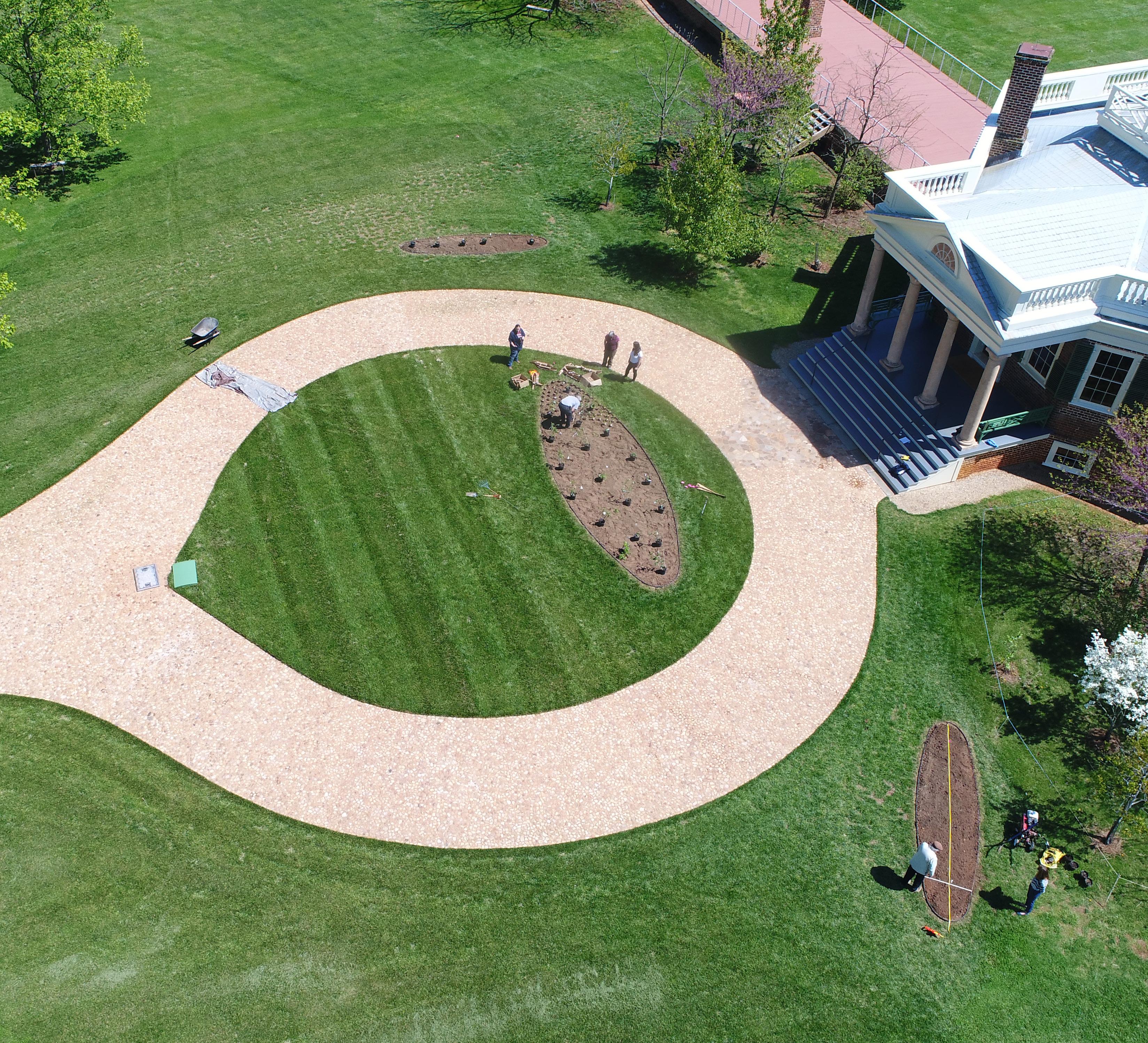
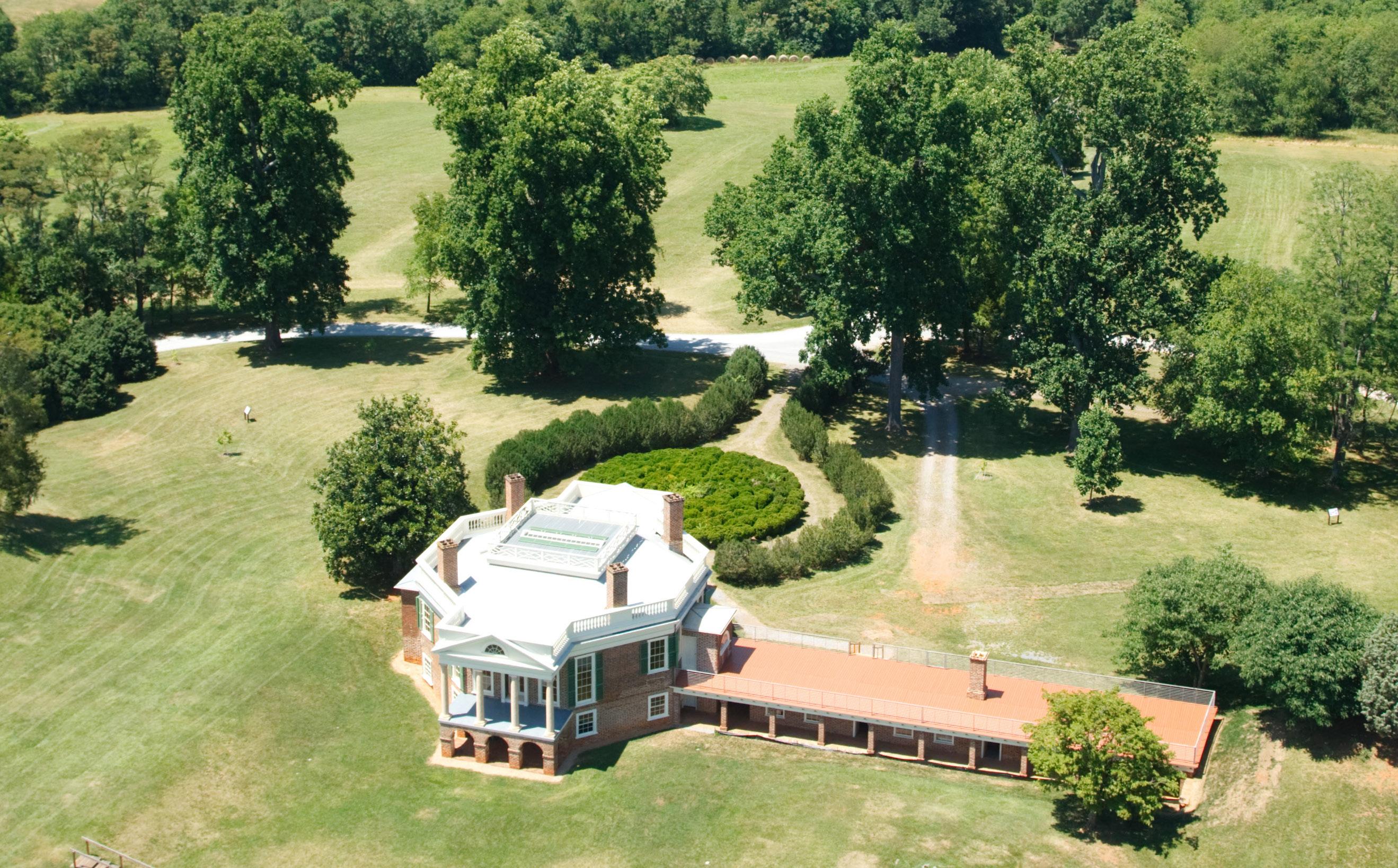
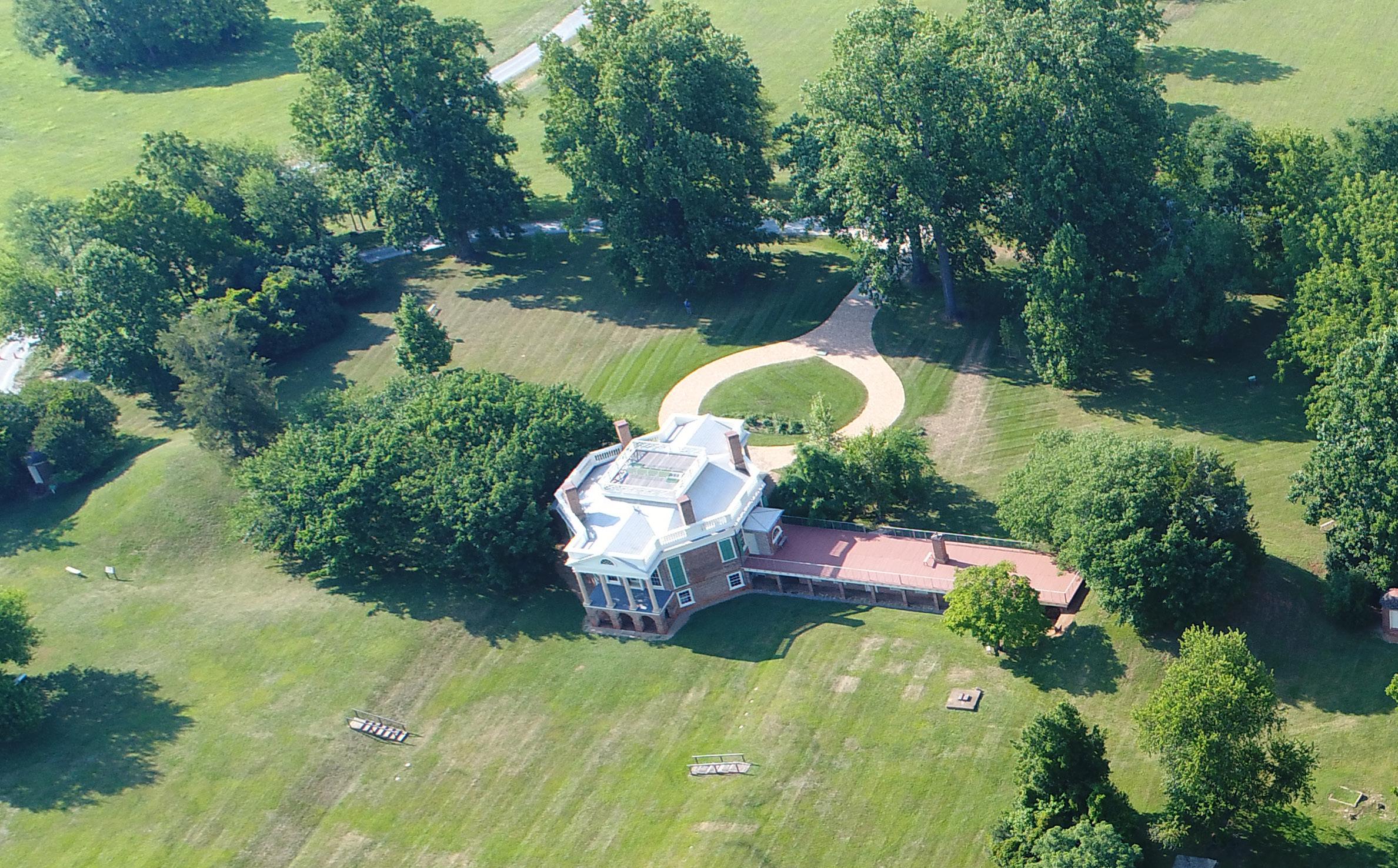
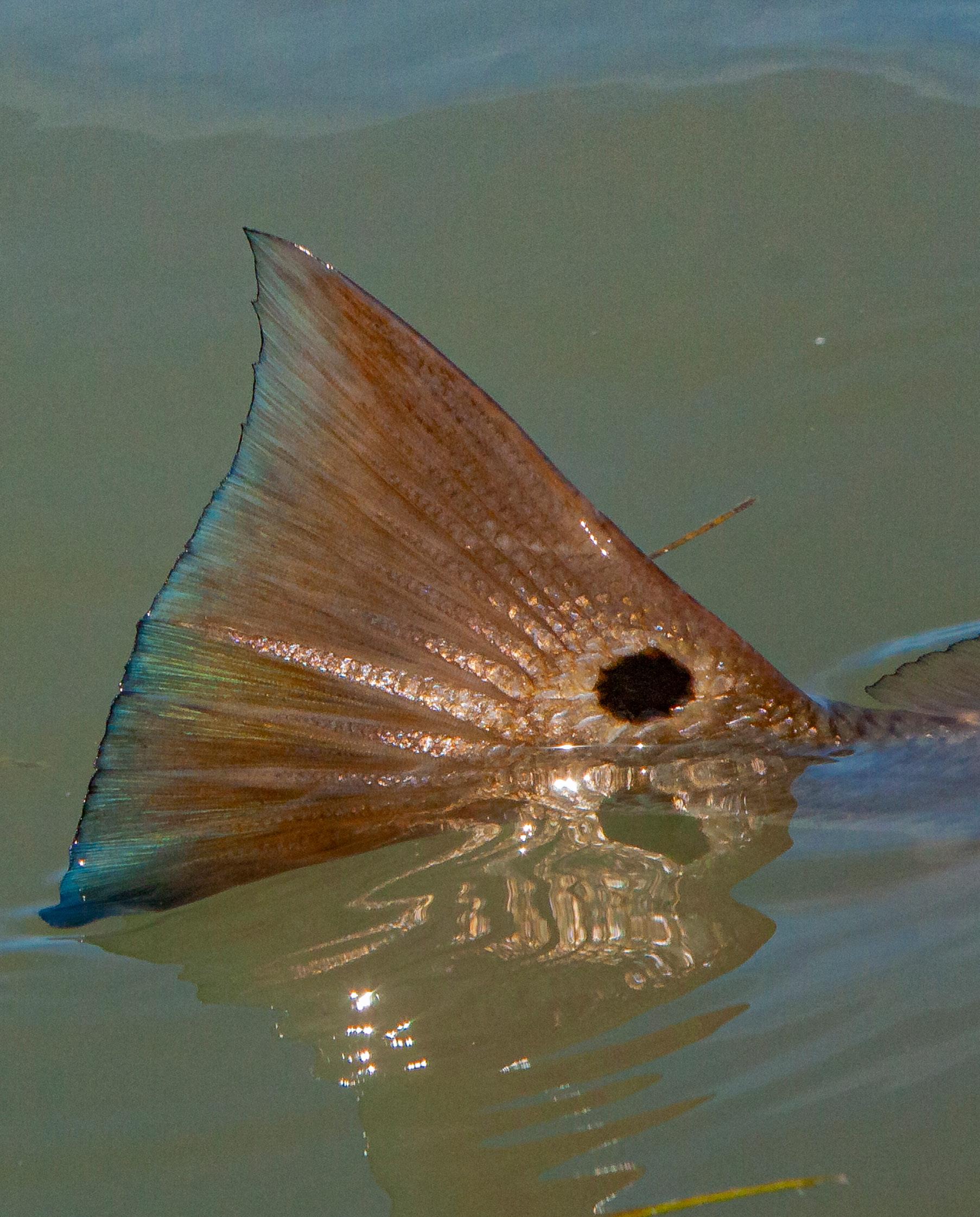 KNOWN FOR THEIR DISTINCTIVE BLACK SPOT NEAR THE TAIL THAT SERVES AS A DEFENSIVE MEANS TO FOOL PREDATORS, FLORIDA REDFISH NOW FACE A NEW THREAT: PHARMACEUTICAL CONTAMINANTS FROM HUMANS. PHOTO BY PAT FORD
KNOWN FOR THEIR DISTINCTIVE BLACK SPOT NEAR THE TAIL THAT SERVES AS A DEFENSIVE MEANS TO FOOL PREDATORS, FLORIDA REDFISH NOW FACE A NEW THREAT: PHARMACEUTICAL CONTAMINANTS FROM HUMANS. PHOTO BY PAT FORD
In Florida, some fish have a drug problem, and it’s our fault. But nothing surprises me.
Humans rely on prescription medications to combat a variety of ailments, including heart disease, anxiety, depression and pain. Once administered, the Rx product enters the bloodstream, and our circulatory system disperses the medicine throughout our body. Next, we metabolize and excrete the drug and its metabolites. Then we flush the toilet with little or no thought to what happens next.
Now, thanks to eye-opening research by science-based conservationists and academics, we have learned that pharmaceuticals are ending up in Florida’s troubled waters—after they run their course through us. Thankfully there’s an opportunity to improve the state’s wastewater treatment facilities, which presently do not protect fish from the prescription meds we take.
A year-long study by Florida International University (FIU) and Bonefish & Tarpon Trust (BTT) has discovered pharmaceutical contaminants in the blood and other tissues of redfish in Florida waters. This research follows a similar study of bonefish in the Florida Keys, which also revealed high levels of pharmaceutical contamination. This new study shows that these waterborne contaminants are a concern statewide.
“The results [of this study] underscore the urgent need to modernize Florida’s wastewater treatment systems,” said BTT President and CEO Jim

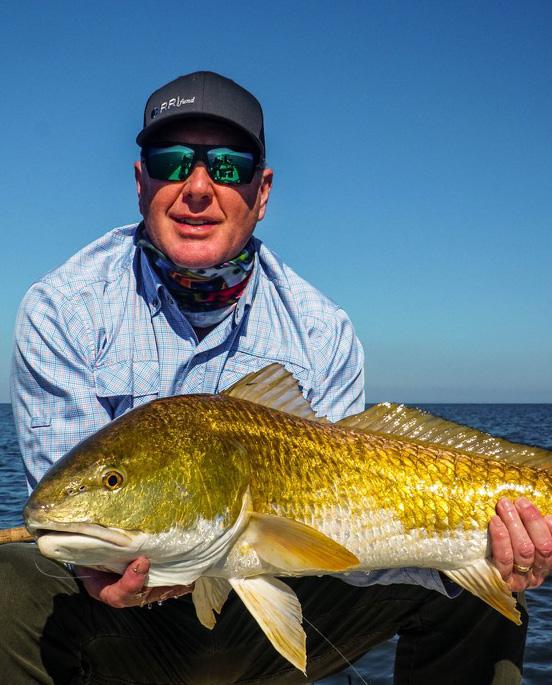
McDuffie. “Human-based contaminants like these pose a significant threat to Florida’s recreational fishery, which has an annual economic impact of $13.9 billion and directly supports more than 120,000 jobs.”
Scientists, volunteer guides and anglers sampled redfish in nine of Florida’s most important estuaries: Pensacola, Apalachicola, Cedar Key, Tampa Bay, Charlotte Harbor, Florida Bay, Northern Indian River Lagoon, St. Augustine and Jacksonville.
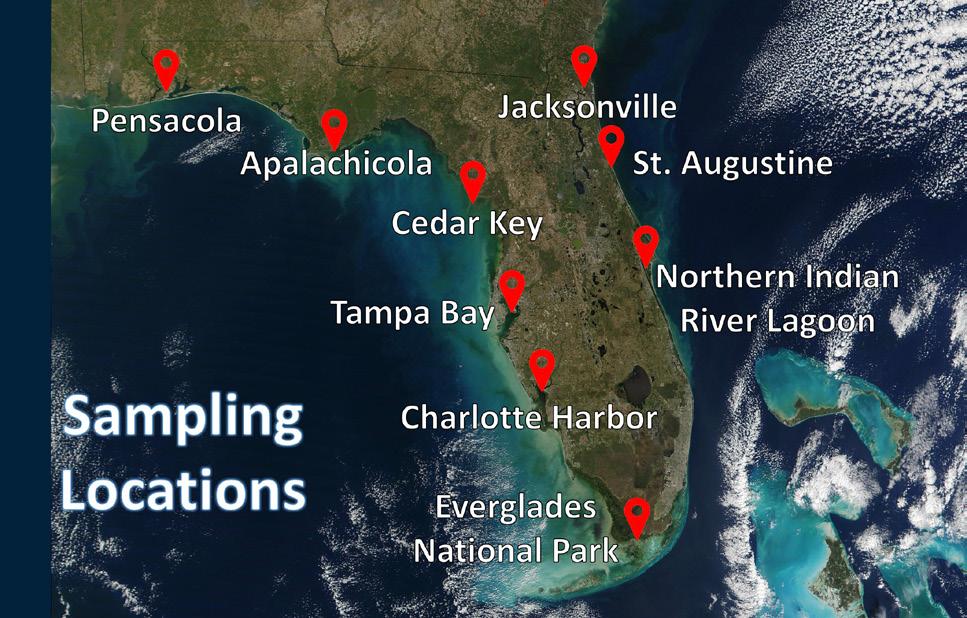

Like the results of the previous bonefish study, pharmaceuticals were found in all the estuaries sampled, with an average number of two drugs per fish and a maximum of five. Only seven out of the 113 sampled fish had zero drugs in their system. On average, 25.7% of the fish exceeded a level of pharmaceuticals considered safe, which equates to one-third of the therapeutic levels in humans.
“These studies of bonefish and redfish are the first to document the concerning presence of pharmaceuticals in species that are
important to Florida’s recreational fisheries,” said Dr. Jennifer Rehage, FIU professor and the study’s lead researcher. “Given the impacts of many of these pharmaceuticals on other fish species and the types of pharmaceuticals found, we are concerned about the role pharmaceuticals play in the health of our fisheries. We will continue this work to get more answers to these concerning questions.”
Cardiovascular medications, opioid pain relievers and psychoactive medications were most detected, from highest to lowest detections. The antiarrhythmic medication flecainide and the opioid pain reliever
tramadol were detected in more than 50 percent of the redfish. The antipsychotic medication flupentixol was detected above safe levels in one in five of the redfish sampled. These are very concerning levels of exposure for redfish.
Approximately five billion prescriptions are filled each year in the United States, yet there are no environmental regulations for the production nor the disposal of pharmaceuticals worldwide.
Pharmaceutical contaminants originate most often from human wastewater and are not sufficiently removed by conventional water treatment. They remain active at low doses and can be released constantly. Exposure to pharmaceuticals can affect all aspects of fish behavior, with negative consequences for their reproduction and survival. Pharmaceutical contaminants have been shown to affect all aspects of the life of fish, including their feeding, activity, sociability and migratory behavior.
“Florida is a leader in addressing water quality issues and
wastewater infrastructure, including converting septic systems to sewage treatment,” said Kellie Ralston, BTT’s vice president for conservation and public policy. “The results of this study indicate that there are additional opportunities for improvement by retrofitting existing wastewater treatment plants with innovative technologies, like ozone treatment, to remove pharmaceuticals and requiring such technology on new wastewater facilities.”
Also known as red drum and channel bass, redfish are one of Florida’s most popular inshore gamefish and the state’s most widespread estuarine fish. They prefer living in the shallows— particularly in bays, oyster reefs and coves around seagrass and other vegetation—and inhabit coastal waters along the Atlantic Ocean and Gulf of Mexico. While the commercial harvest and sale of redfish is prohibited in Alabama, Florida, Louisiana and Texas, redfish are mildtasting and delicious. Nutritious and rich in omega-3 fatty acids, the smaller specimens are especially good eating and not as tough as
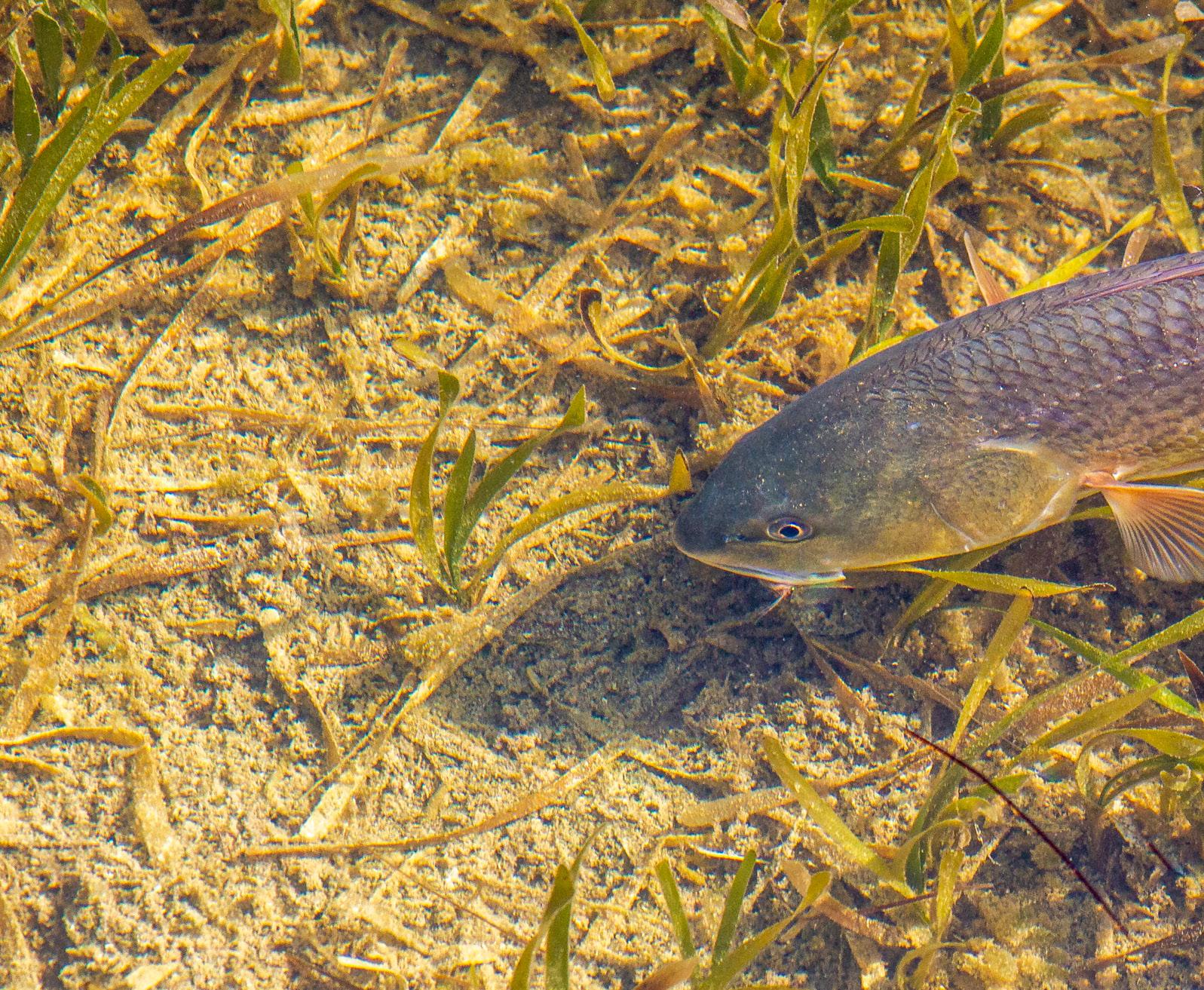
larger fish when cooked.
Monte Burke, New York Times best-selling author and contributing editor at The Virginia Sportsman, is a tarpon-obsessed fly angler. His latest book, “Lords of the Fly: Madness, Obsession, and the Hunt for the World-Record Tarpon” (Pegasus, 278 pages, $26.95), has received critical acclaim, and its first two printings sold out in the first month. Burke is a contributing editor at other publications and has written about the noticeable decline of the species in Florida Bay and the Keys.
“I believe it’s extremely important to back research efforts by the Bonefish & Tarpon Trust and protect all species of fish,” said Burke, who has referred to BTT as ‘the little conservation engine that could’ in his writing. “This study is an eye-opener, and I hope people will back efforts to upgrade wastewater treatment facilities with advanced technologies as this study suggests. We owe it to these fish.”
Once hooked, redfish put up one hell of a fight. I’ve caught a few on fly and have always admired their distinct appearance. Redfish are copper-bronze in color, fading to a lighter-color belly, and have a
distinctive black spot near the tail. The marking acts as a defensive means to fool predators into attacking their backside so they can quickly escape.
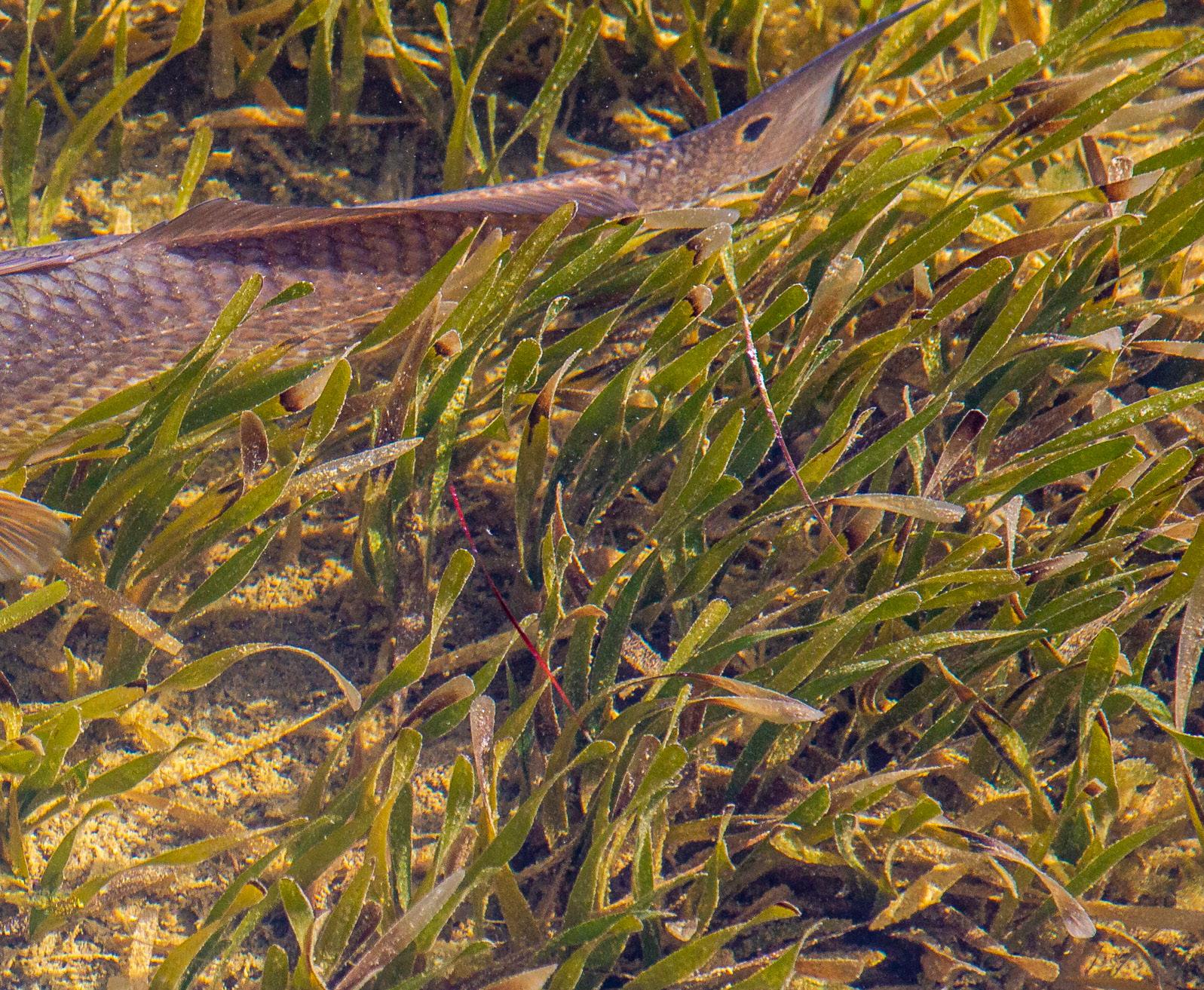
Sadly, there is no escape from pharmaceutical contamination. It’s up to us to get these fish off drugs.
Learn more and help BTT ensure clean water and healthy fisheries at BTT.org.
Joe Shields is the editor in chief of The Virginia Sportsman. He is a writer and communications executive based in Charlottesville, Va. His writing and photography have appeared in The Virginia Sportsman and other publications. He is also an award-winning, gallery-represented artist whose work is found in private collections and galleries. Whether fly fishing or surfing, drawing or painting, he celebrates sporting life and culture in his narratives and art.
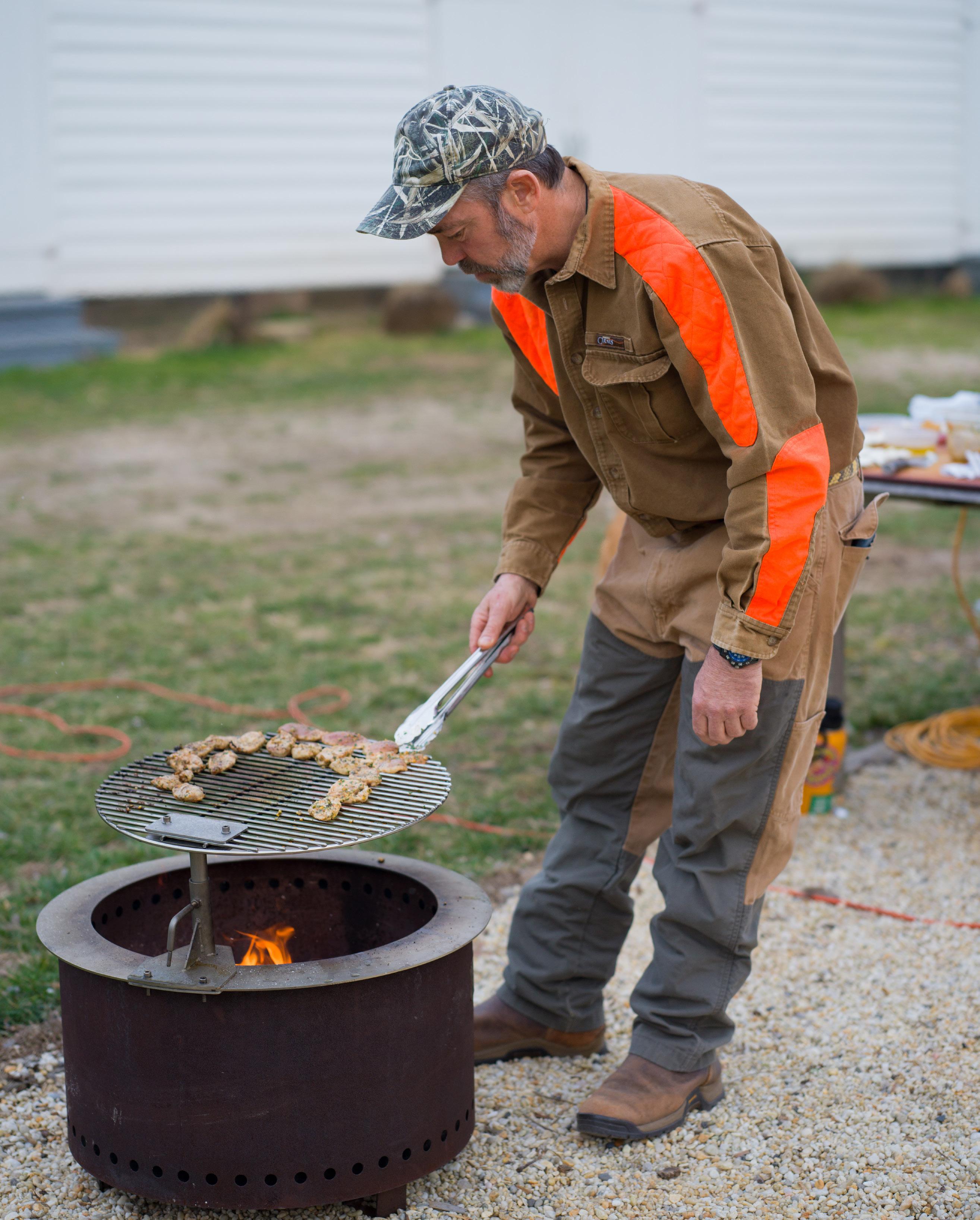
In 2016, Walter Bundy was three or four months away from realizing his dream of opening a restaurant that showcases what Virginia has to offer, complete with cuisine inspired by Southern roots and French techniques. He also wanted a thoughtful space that reflects his love of locally sourced ingredients and materials, handmade plates and art, as well as his affinity for the sporting life. But one of his big challenges was selecting a name for his new establishment.
“I was searching for a name that spoke to me, one that no one else had used already,” Bundy admitted. “That was a lot harder than I thought it would be. Then I came up with ‘Shagbark,’ which a buddy jokingly said sounded like the title of an Austin Powers movie.”
The name of Bundy’s restaurant was inspired by an old shagbark hickory tree that was growing along the banks of the James River. Fittingly, shagbark is a common hickory found in the Eastern United States. He appreciated the indigenous tree and admired its appearance, which has unique, smoke-gray bark that twists away
from mature trunks in long, shaggy strips.
“I’m very much an outdoorsman and heavily into conservation,” Bundy added. “Shagbark is a hard, tough wood, and I was excited to repurpose this fallen tree throughout the restaurant. Once the shagbark was milled and I recognized the opportunity for our community table, everything came together. We carried the wood throughout the space and used it for the lounge tables, host stand, sconces and partitions, which were all milled and fashioned from that old hickory.”
Bundy was born in Charlottesville and spent his formative years in Richmond. His father was an avid gardener and hunter, and his grandmothers enjoyed fishing the Chesapeake Bay and Piankatank River at their homes and docks near Deltaville. They also taught him how to cook and appreciate food.
The boy cherished being outside, especially in the Middle Peninsula. He enjoyed tilling the soil and walking in it with his bare feet. Bundy picked vegetables, berries and fruit from his father’s
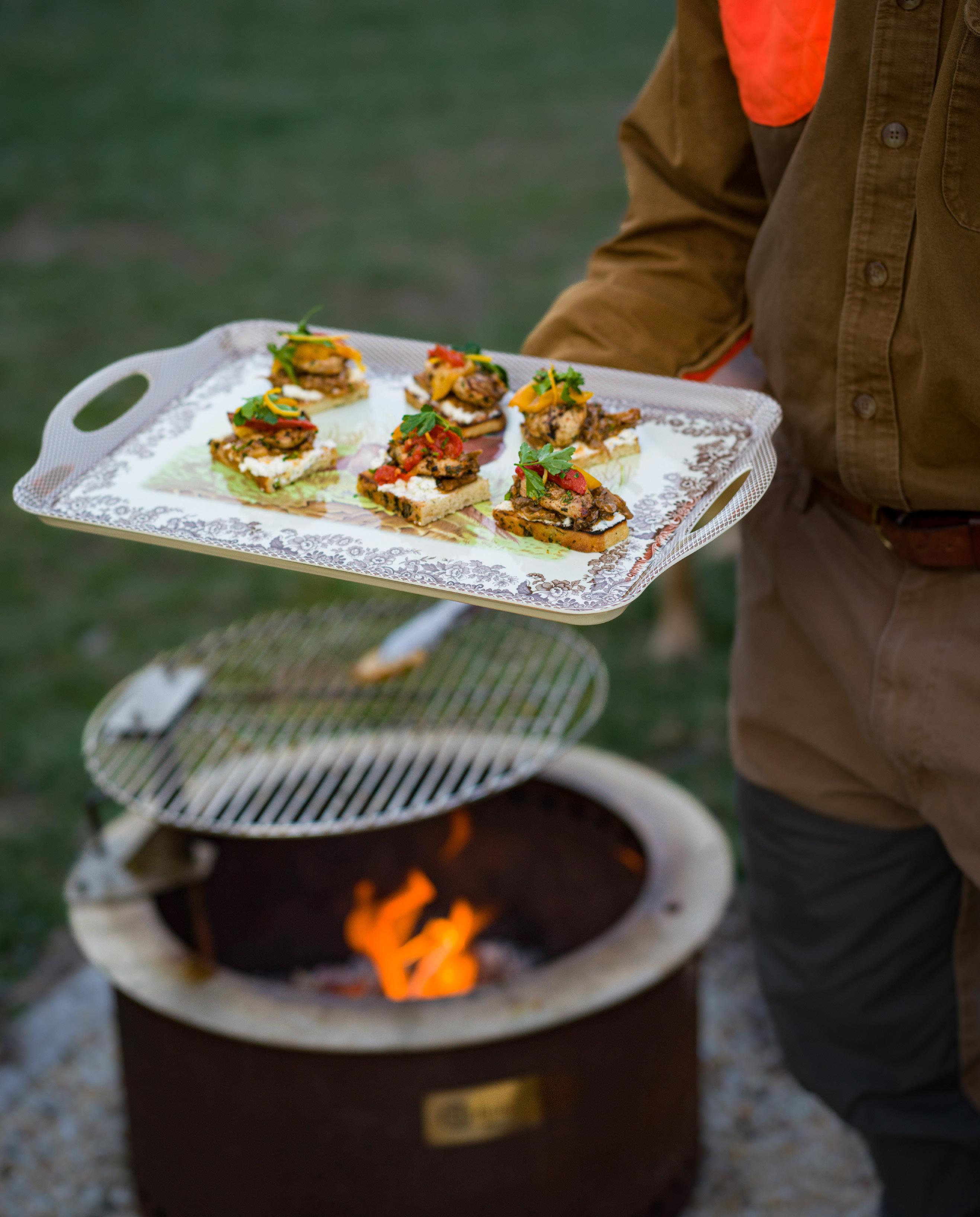 BUNDY DELIGHTS HIS FELLOW HUNTERS WITH BASQUE-STYLE GRILLED QUAIL SERVED WITH WILD MUSHROOM RAGOUT, GOAT’S MILK RICOTTA, PRESERVED MEYER LEMONS WITH TOMATO CONFIT, GRILLED GARLIC BREAD AND PARSLEY.
PHOTO BY ERIC KALLEN
BUNDY DELIGHTS HIS FELLOW HUNTERS WITH BASQUE-STYLE GRILLED QUAIL SERVED WITH WILD MUSHROOM RAGOUT, GOAT’S MILK RICOTTA, PRESERVED MEYER LEMONS WITH TOMATO CONFIT, GRILLED GARLIC BREAD AND PARSLEY.
PHOTO BY ERIC KALLEN
garden and orchard. He loved discovering and harvesting fish, oysters and crabs. The lessons he learned from hunting with his father also instilled an appreciation for Virginia’s wild game. These combined experiences left an impression and helped define his future culinary interests.

Since his father was a Navy doctor, the Bundy family moved frequently and lived in Florida, Connecticut, Rhode Island and Wisconsin. But Virginia, and in particular, Richmond, always centered him and felt like home.
“I moved a lot with my dad and lived in different places,” he said. “As I grew older, I kept traveling to different parts of the country to learn about different cuisines, but Virginia kept pulling me home. Living elsewhere made me realize how much I love my home state.”
With Shagbark, Bundy’s aim is to celebrate his Virginia heritage and sporting interests, which include fishing for trout, rockfish and local puppy drum, as well as hunting deer, duck and upland birds. And that’s exactly where our lives intersected—not at his restaurant (although I can’t wait to eat there)—but at a game preserve just north of Richmond.
This past winter, our mutual friend Ted Barrett, who owns and operates The Preserve at Dundee, was kind enough to invite The Virginia Sportsman and Bundy to join him on a guided hunt followed by an amazing wild game meal of Bundy’s own creation. Situated in Hanover, the heavily wooded, 200acre property feels remote and offers different upland hunting environments, including traditional pine forests, open fields and sloping hills.
Afield, we marveled at a Llewellin Setter and two Brittany Spaniels as we worked our way through high grasses, brush and thicket. They pointed, and we dispatched chukar, quail and pheasant. It was a fine day, and we ended it with libations and a gourmet meal cooked over an open flame: Chukar French Onion Soup, with sweet onion, gruyere cheese and brioche;
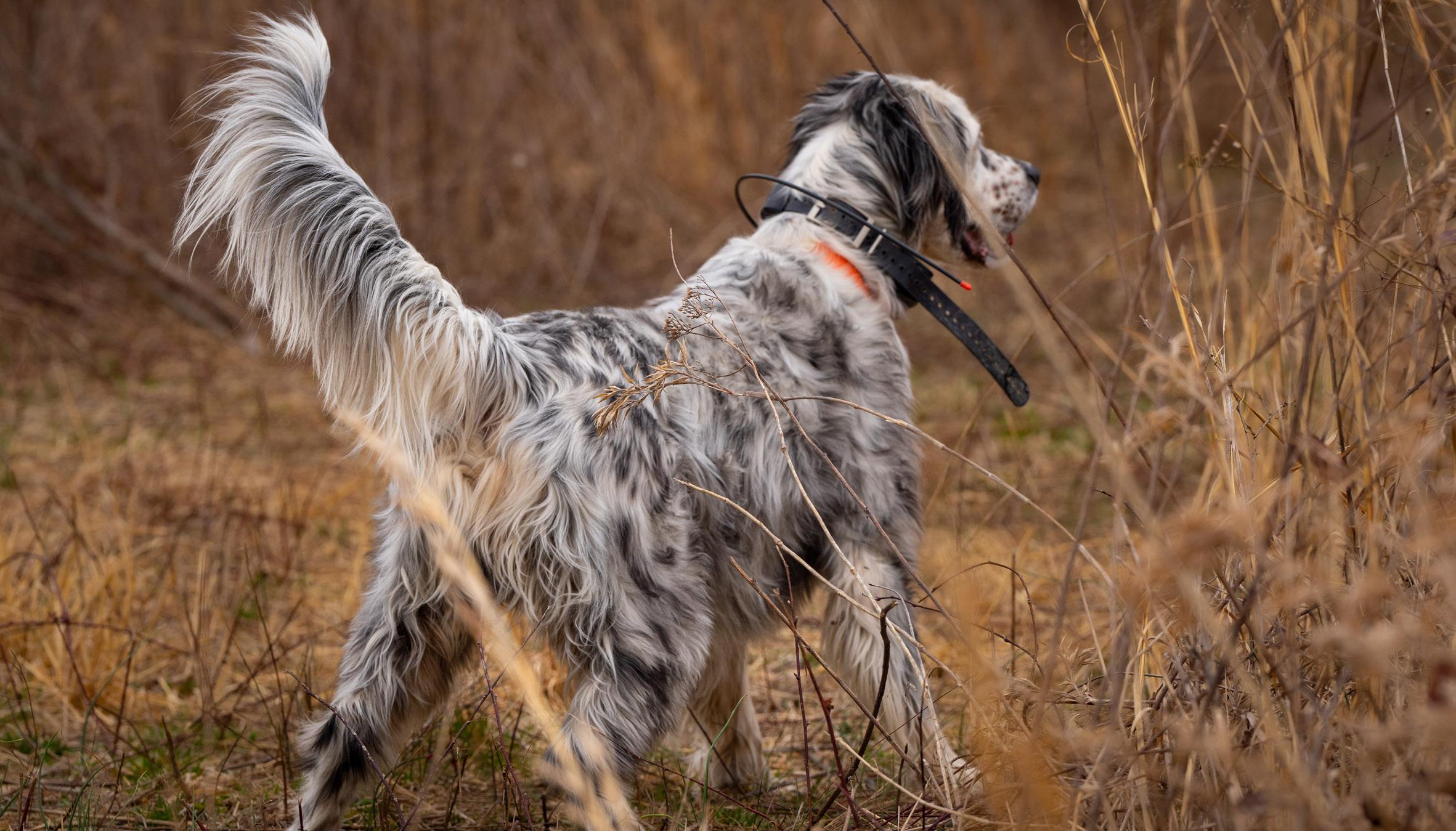
“Chicken Fried” Pheasant, with pimento cheese grits, stewed pole beans and blackened jalapeño-tomato sauce; Basque-Style Grilled Quail, with wild mushroom ragout, goat’s milk ricotta, preserved Meyer lemons with tomato confit, grilled garlic bread and parsley.

“I like to cook and prepare food as local as I can,” Bundy said. “At Shagbark, seasonally this can include soft shell crabs and rockfish from the Bay, tomatoes from Hanover County, peanuts from Surry County, muskmelon from Deltaville, hams from Wolftown, and many other ingredients including rhubarb and squash blossoms. We also offer wild foraged chantells, morels, ramps, fiddlehead ferns and many other seasonally foraged items. My good friend has a commercial operation that provides us with rockfish in the fall and winter. I also source from friends who are clam and oyster farmers on the Eastern Shore.”
He admits he took a non-traditional path to becoming a chef and restaurant owner. While being raised in Richmond, Bundy attended St. Christopher’s School and graduated from HampdenSydney College. He knew he didn’t want a typical desk job and, in addition to hunting and fishing, wanted to pursue cooking and other passions including traveling, kayaking, surfing and skiing.
Bundy began his culinary career helping Sam McGann and John Power open The Blue Point restaurant in Duck, N.C. Then he moved to Santa Fe for a position at the Coyote Café and learned about Southwestern cuisine. Over time, working with talented chefs inspired Bundy to go to culinary school.
“I enrolled at the New England Culinary Institute [NECI] in Montpelier, Vermont,” Bundy said, “because I wanted smaller class sizes and on-the-job training, which I thought was helpful.”
After graduating, he wanted to study under and grind it out with the best in the industry. He researched the best restaurants in Los Angeles and tried to land a job with Patina. Instead, the owners gave him an opportunity at their new restaurant, Pinot Blanc, in Napa. At the time, the buzz surrounding Thomas Keller’s nearby The French Laundry was impossible to ignore.
Bundy went on to work alongside Keller in 1996 when Keller won the James Beard Foundation’s Best California Chef. Only a
I like to cook and prepare food as local as I can...
AT SHAGBARK, BUNDY’S AFFINITY FOR VIRGINIA AND THE OUTDOORS SHINES THROUGHOUT HIS RESTAURANT AND CUISINE.
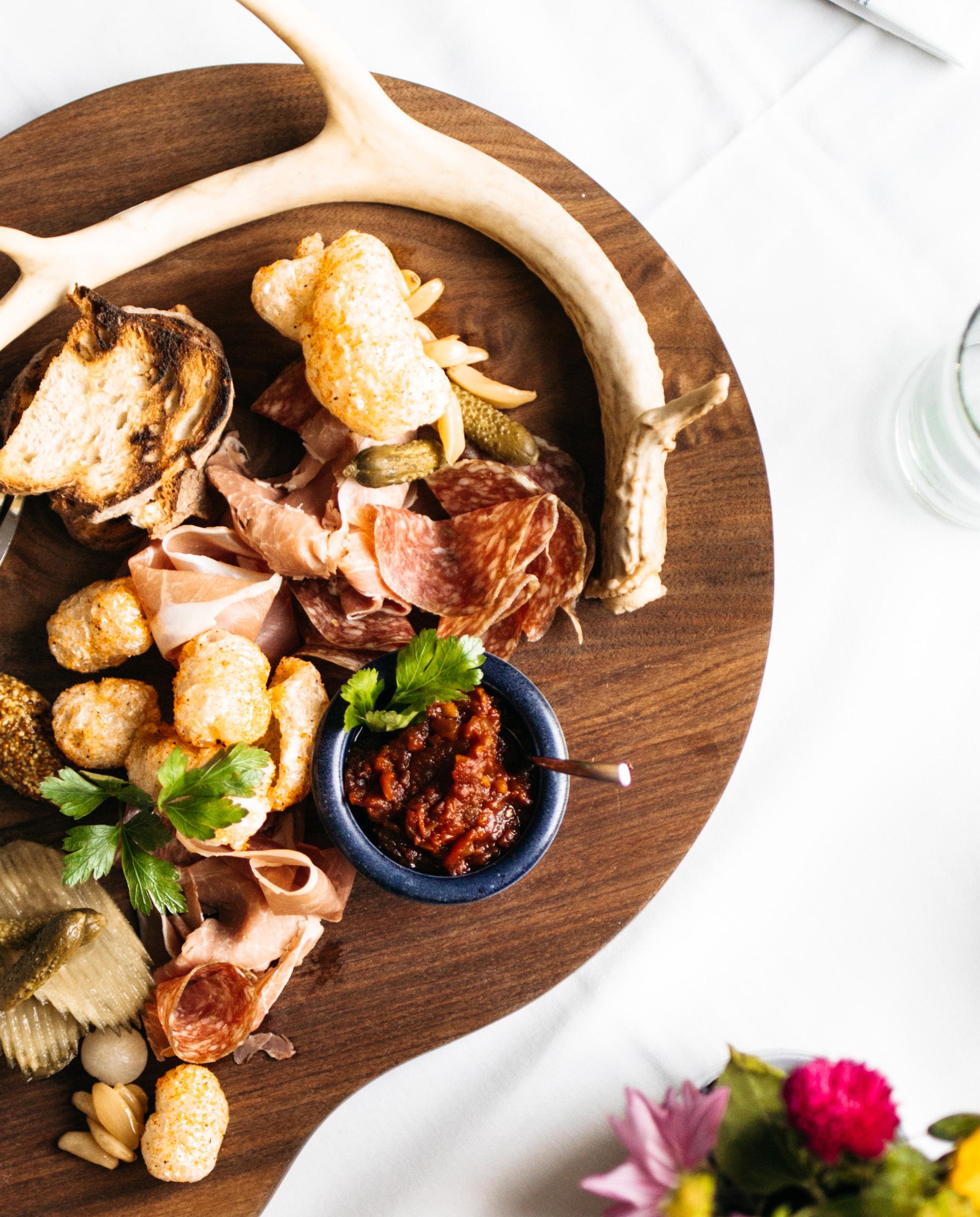 PHOTO COURTESY OF SHAGBARK
PHOTO COURTESY OF SHAGBARK
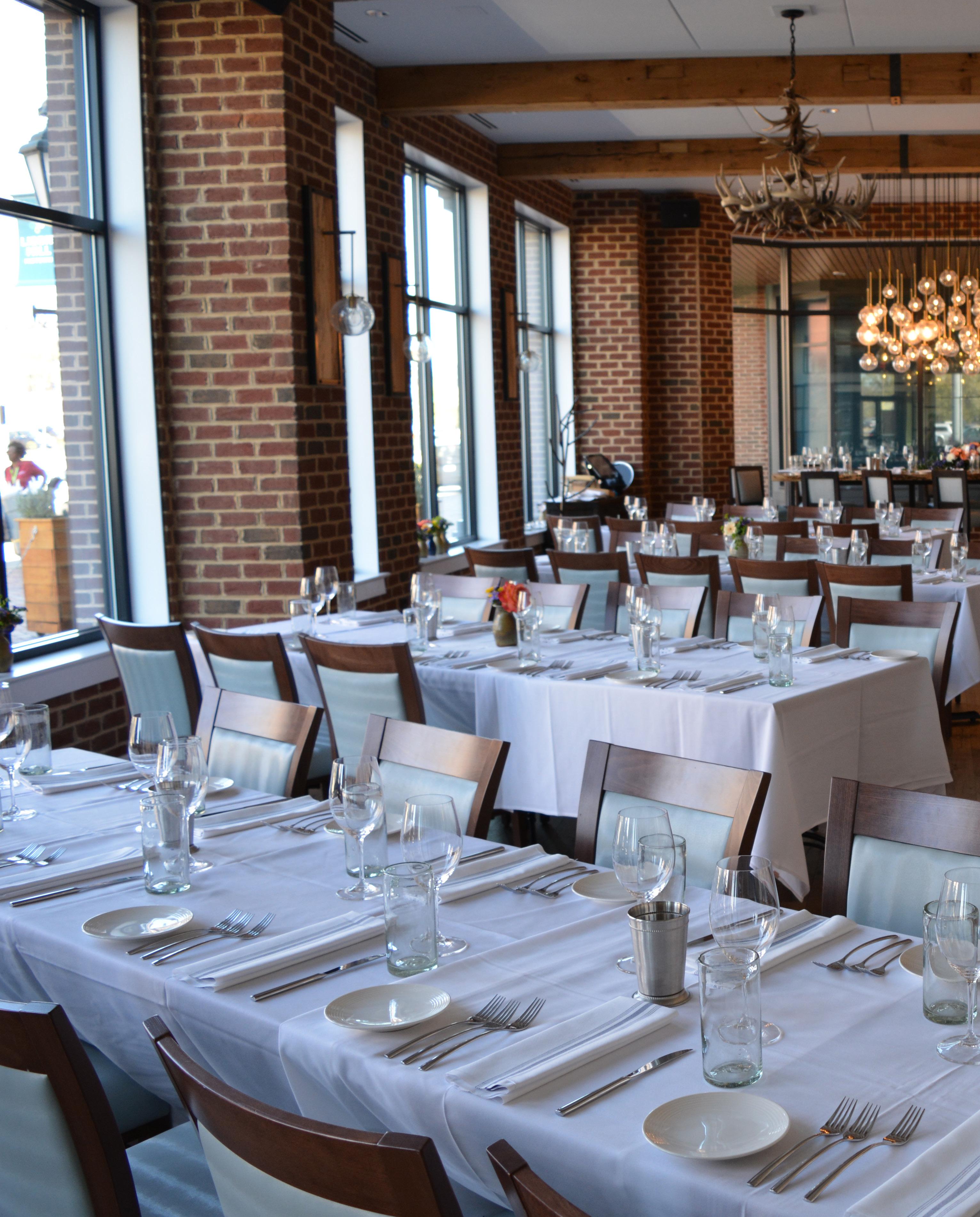 LOCAL FARMERS, FISHERMEN, ARTISANS AND ARTISTS—INCLUDING SUSAN CARY, GUY CRITTENDEN, GREG OSTERHAUS AND MARY KATHRYN WOODWARD—TAKE CENTER STAGE AT BUNDY’S RESTAURANT. MAIN DINING ROOM PHOTO COURTESY OF SHAGBARK
LOCAL FARMERS, FISHERMEN, ARTISANS AND ARTISTS—INCLUDING SUSAN CARY, GUY CRITTENDEN, GREG OSTERHAUS AND MARY KATHRYN WOODWARD—TAKE CENTER STAGE AT BUNDY’S RESTAURANT. MAIN DINING ROOM PHOTO COURTESY OF SHAGBARK
year later, Keller won the highly coveted title of Best Chef in America. Under Keller, Bundy grew to love foie gras and learned to run a restaurant. He even implemented the threeMichelin-starred restaurant’s microgreen program.
When Bundy returned to Richmond, he became the executive chef of Lemaire at The Jefferson Hotel and stayed for 19 years. While there, Bundy helped put Richmond on the gastronomic map and played a part in earning the city national and global culinary acclaim. In 2015, Lemaire was named the 101st best restaurant in the United States, according to France’s La Liste.
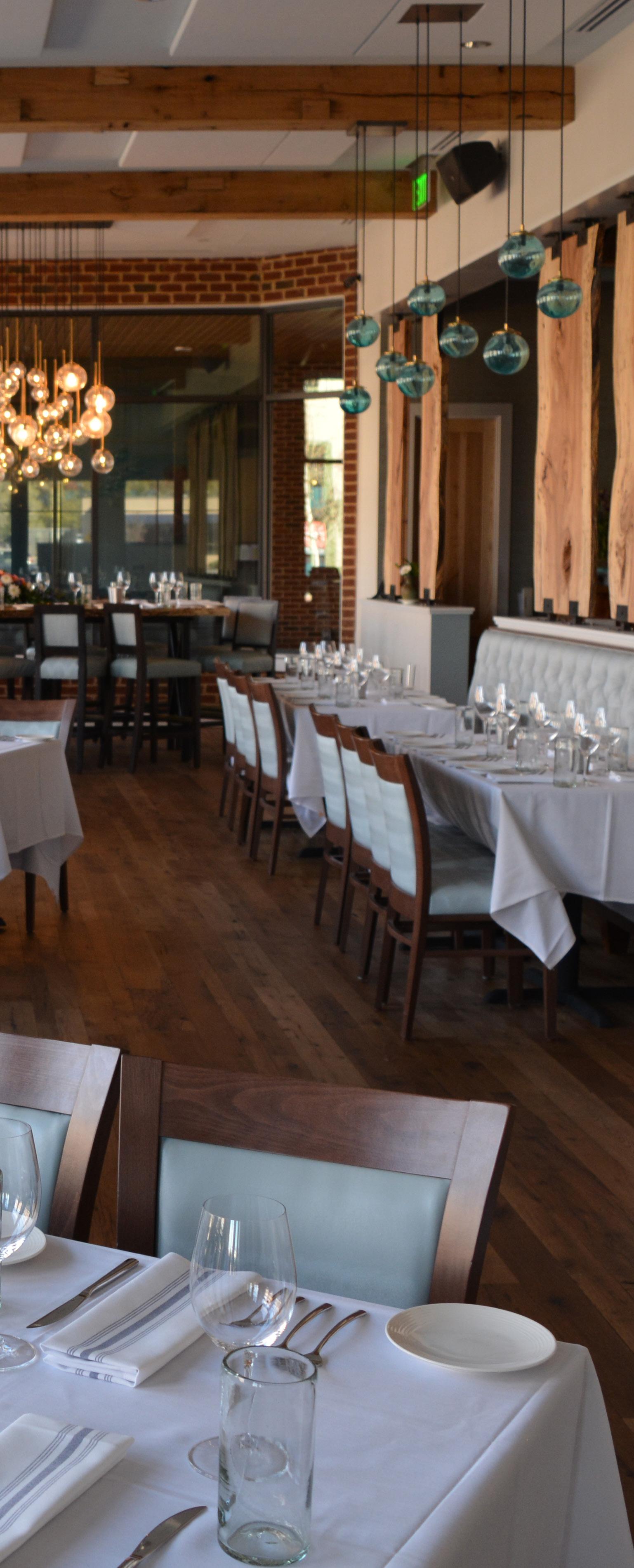
“My time at Lemaire was an incredible experience, and I am truly grateful,” he recalled. “Opening a new restaurant was a big decision. I talked myself out of it many, many times. It’s tough to jump off a cruise ship into a halfway blown-up dinghy, but that’s what I did with Shagbark, which turned out to be a pretty damn good ship as well.”
Located in the Libbie Mill-Midtown development, Shagbark continues to receive accolades—including a AAA Four Diamond Rating, Taste of the South magazine’s Taste50 and a Wine Spectator Restaurant Award. It has truly become a stage for local farmers, fishermen, artisans and artists—including Mike Brown at Tree Hill Pottery (@treehillpottery), Susan Cary (@susancaryart), Guy Crittenden (@guycrittendenstudio), Greg Osterhaus (ousterhausart.com) and Mary Kathryn Woodward (@mk.holden.woodward).
“When you work in a restaurant, every night really is a theatrical performance. You dance, delight people, feed and take care of them. Then you come back and do it again the next day. That’s what I enjoy.”
I can’t wait to experience Shagbark and take in a local show. Be sure to catch your own Bundy performance by reserving a table at shagbarkrva.com.

Joe Shields is the editor in chief of The Virginia Sportsman
He is a writer and communications executive based in Charlottesville, Va. His writing and photography have appeared in The Virginia Sportsman and other publications. He is also an award-winning, gallery-represented artist whose work is found in private collections and galleries. Whether fly fishing or surfing, drawing or painting, he celebrates sporting life and culture in his narratives and art.











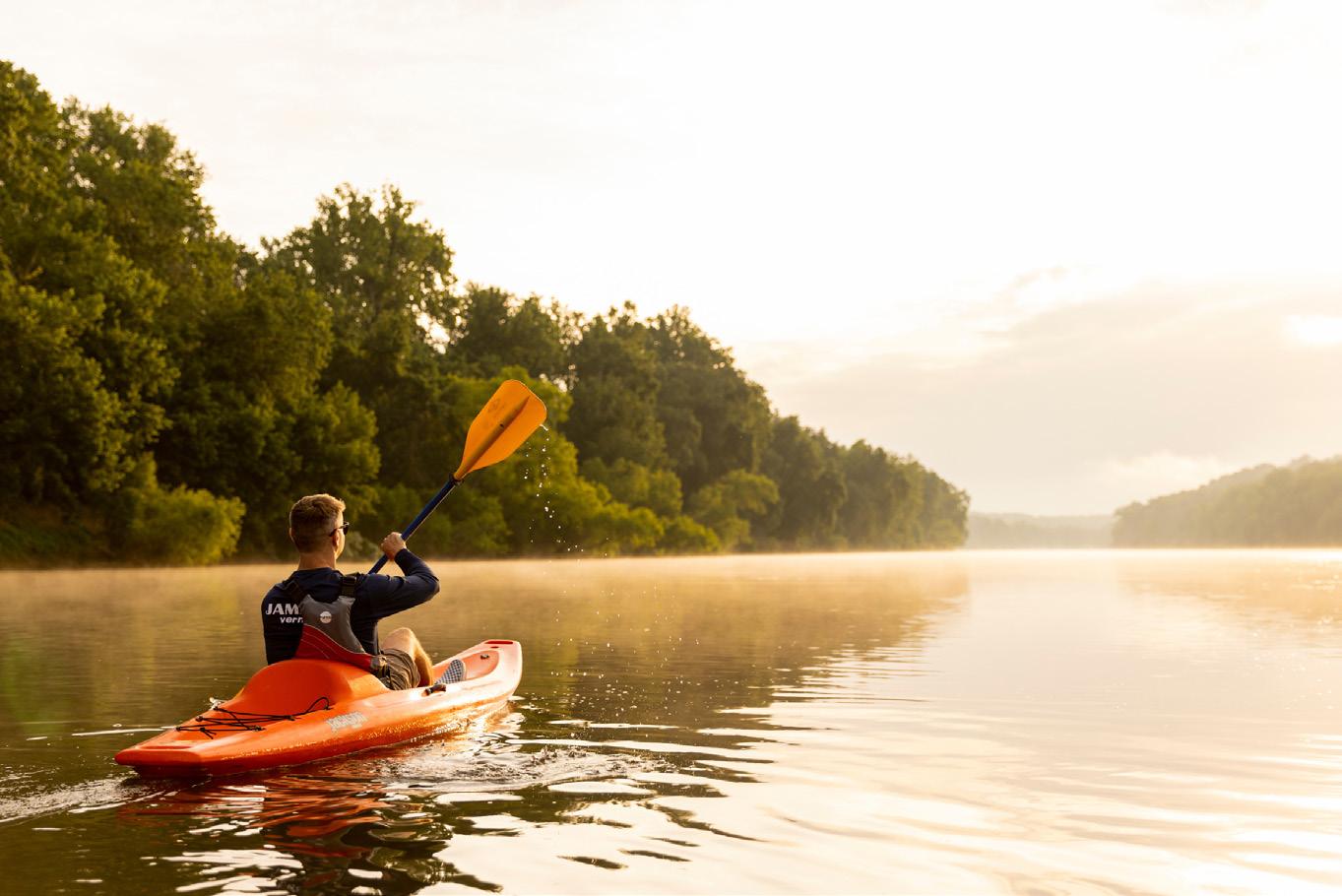



This wasn’t exactly my first rodeo, and I recognized good hunt country when I saw it. I scanned the open expanse of horizon and felt my excitement build as I studied the varied covers, food plots, windbreaks, hedgerows and cattails. Then I smiled in appreciation of the dogs. They seemed to anticipate our first morning’s action with a nervous energy that exceeded mine—the Brittanys were pros, and I was new to hunting wild pheasant.
My journey to the “Heart of Pheasant Country” began after I received a call from my longtime hunting buddy Lee Baskerville.
“Do you want to go hunting for wild pheasant in South Dakota?” was all Baskerville had to ask.
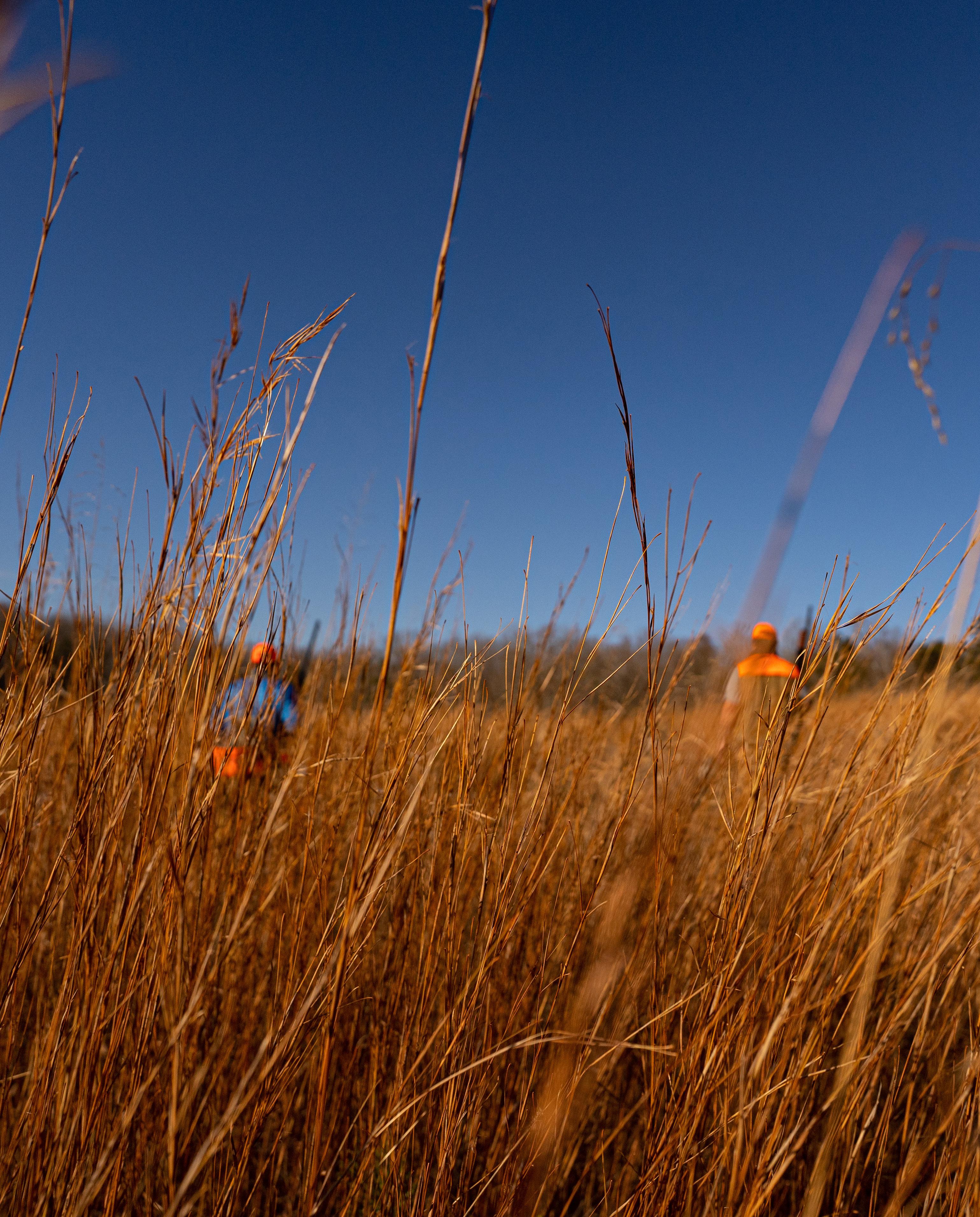
Four of our friends had booked a trip there, but a last-minute cancellation freed up an open slot. I scrambled to get permission from the home office and searched the internet for a roundtrip plane ticket to Aberdeen, the third most populous city in the state after Sioux Falls and Rapid City.
Forty-eight hours later, I found myself on a large crop farm east of Frederick. Baskerville and I were short handed because our two South African friends were scheduled to arrive later that evening. Ron Ausman, a retired marine and master of the Okaw Valley Foot Bassetts, joined us in the meantime, so I figured we’d do fine. He’s a former member of the United States Marine Corps Shooting Team and has broken more than 100,000 registered
skeet targets.
We began our first day by drawing a food plot. John Jensen, our host and guide, let his Brittanys go to work. Jensen and his wife Cathi own Maple River Pheasant Hunting in Frederick and have been breeding Brittanys since 1981, all from the Maverick line.
The couple opened Maple River in 2006 after they retired from public education. Seventeen years later, their success is reflected in a full calendar hosting hunters from more than 25 states. According to the Jensens, 90% of guests return each year to enjoy exceptional sport and warm hospitality. Maple River offers full-service room and board, and that suited us well.
Working the cover hard, it didn’t take long before Jensen’s dogs got birdy. Suddenly I heard the flutter of wings over a distinct cackle, and a rooster flew up on my left. My first shot went wide. I took a moment to collect myself. Then I took what I thought was a good second shot, and the bird flew into a hedgerow.
We were confident we had our first bird but were surprised when the rooster flushed again as a Brittany moved in to retrieve it. I believed my second shot hit its mark, but all the evidence suggested otherwise. We continued our drive and took more birds before drawing a windbreak next to the food plot.
After flushing more birds, we only dropped one as the others flew beyond shooting range. One rooster flushed hard and quickly darted
away, abetted by a strong tail wind. But Mother Nature couldn’t help its plight, and Ausman took the rooster down with a single shot. We walked back to the trucks, and the dogs unexpectedly went on point. The bird did not flush, and we discovered it was the bird I shot at the beginning of our first drive.
We flushed birds in abundance. During our final drive, we hunted in thick cattails alongside a large slough. The cattails held plenty of birds but required the dogs to work hard. They finally retrieved a rooster Baskerville took with a beautiful and long crossing shot. Undaunted, they persevered and found his bird.
With one pheasant left to fill our daily limit, a rooster flushed near the edge of the cattails. Pure instinct took over. I raised my Parker to my shoulder, and the bird tumbled from the sky. We reached our limit and the end to a fine first day.
Wessel and Josephus Fourie—our old hunting friends from South Africa who now live in Upstate New York—joined us in the field, and our day began as a hunting party of five. We knew we’d be more effective with two extra shooters because we could position blockers at the end of covers to curtail the birds’ abilities to run.
Temperatures dropped and the wind howled, but the flurry of pheasant kept us warm. Gusts stirred up the birds and provided us with good shooting opportunities.
New to hunting wild pheasant, I quickly learned—at times, the hard
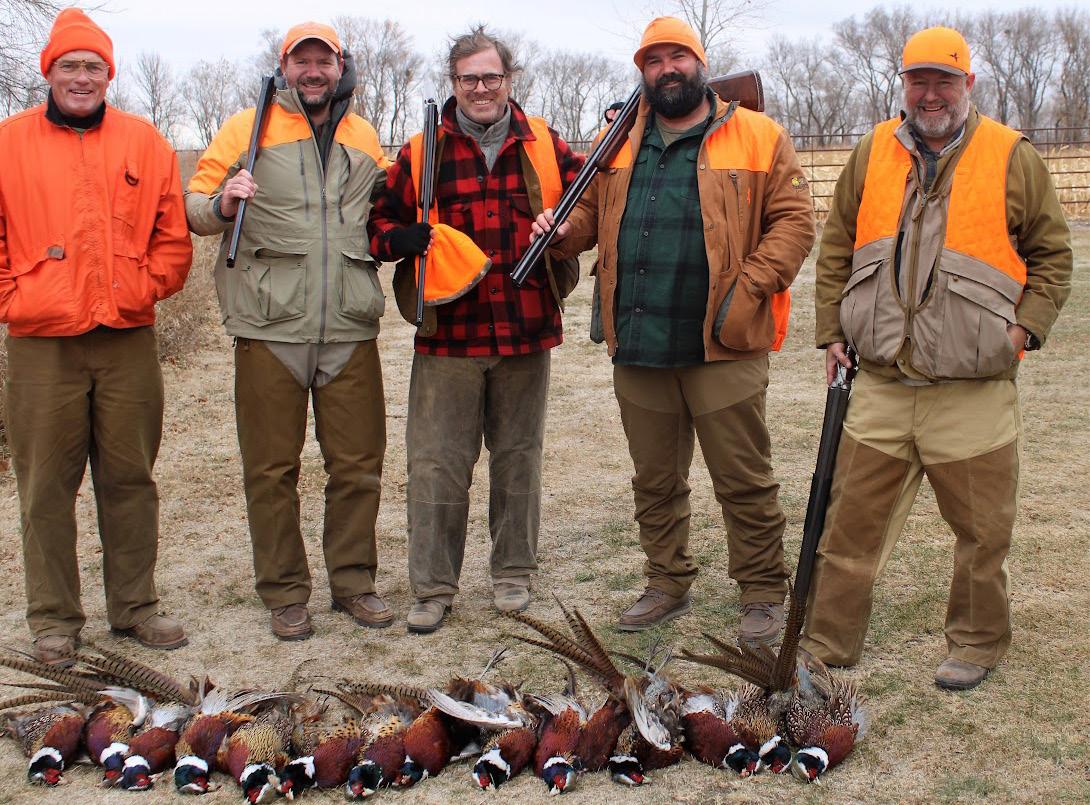
(LEFT) NEW TO WILD PHEASANT HUNTING, THE AUTHOR (FAR RIGHT) LITERALLY HAD A BLAST WITH FRIENDS AND POSED FOR A GROUP SHOT AFTER REACHING THEIR LIMIT ON THE SECOND DAY. PHOTO COURTESY OF DON SKELLY (BELOW) THE DOGS ARE ALWAYS A WONDER IN THE FIELD.
 PHOTO BY ERIC KALLEN
PHOTO BY ERIC KALLEN
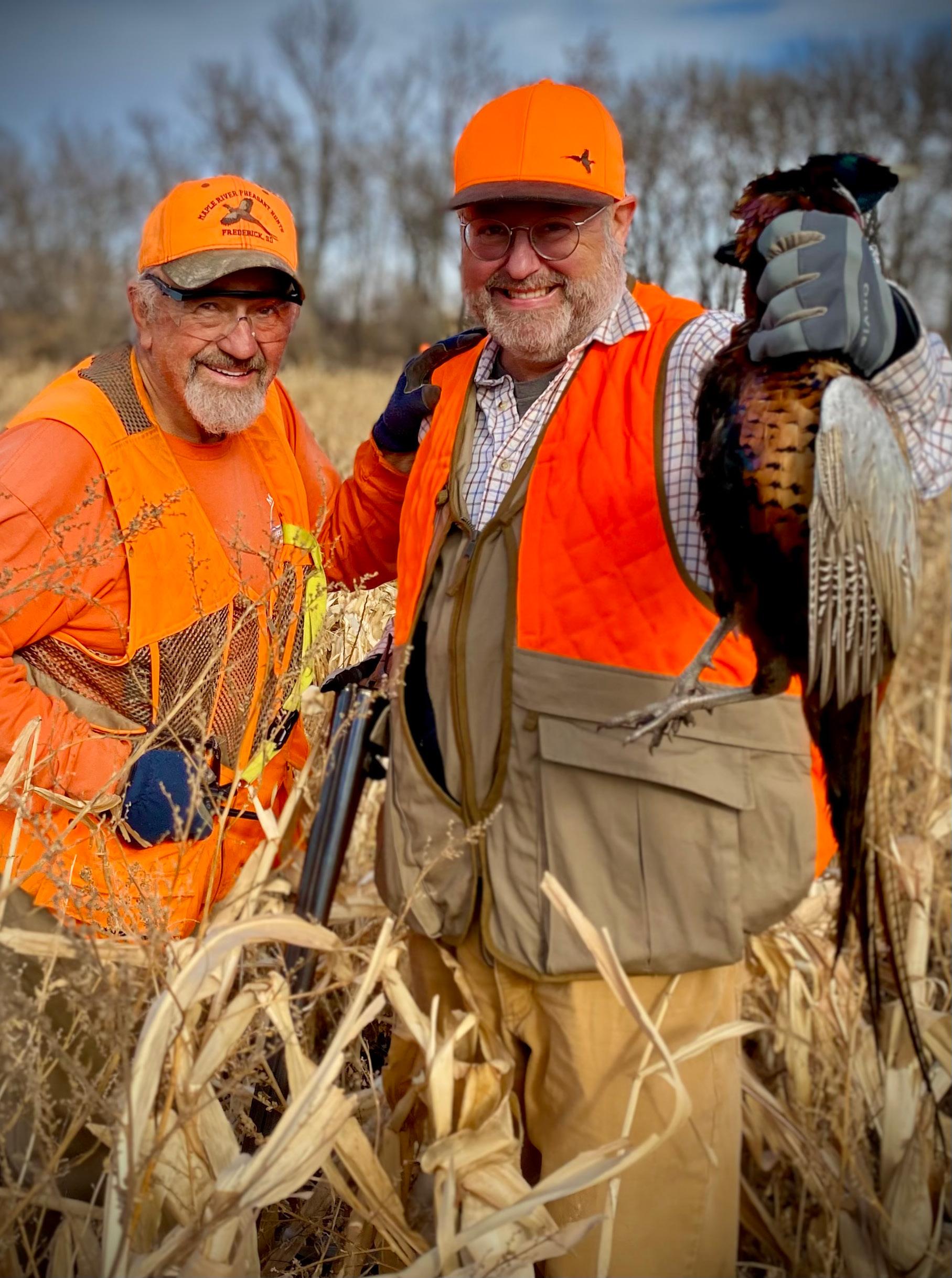
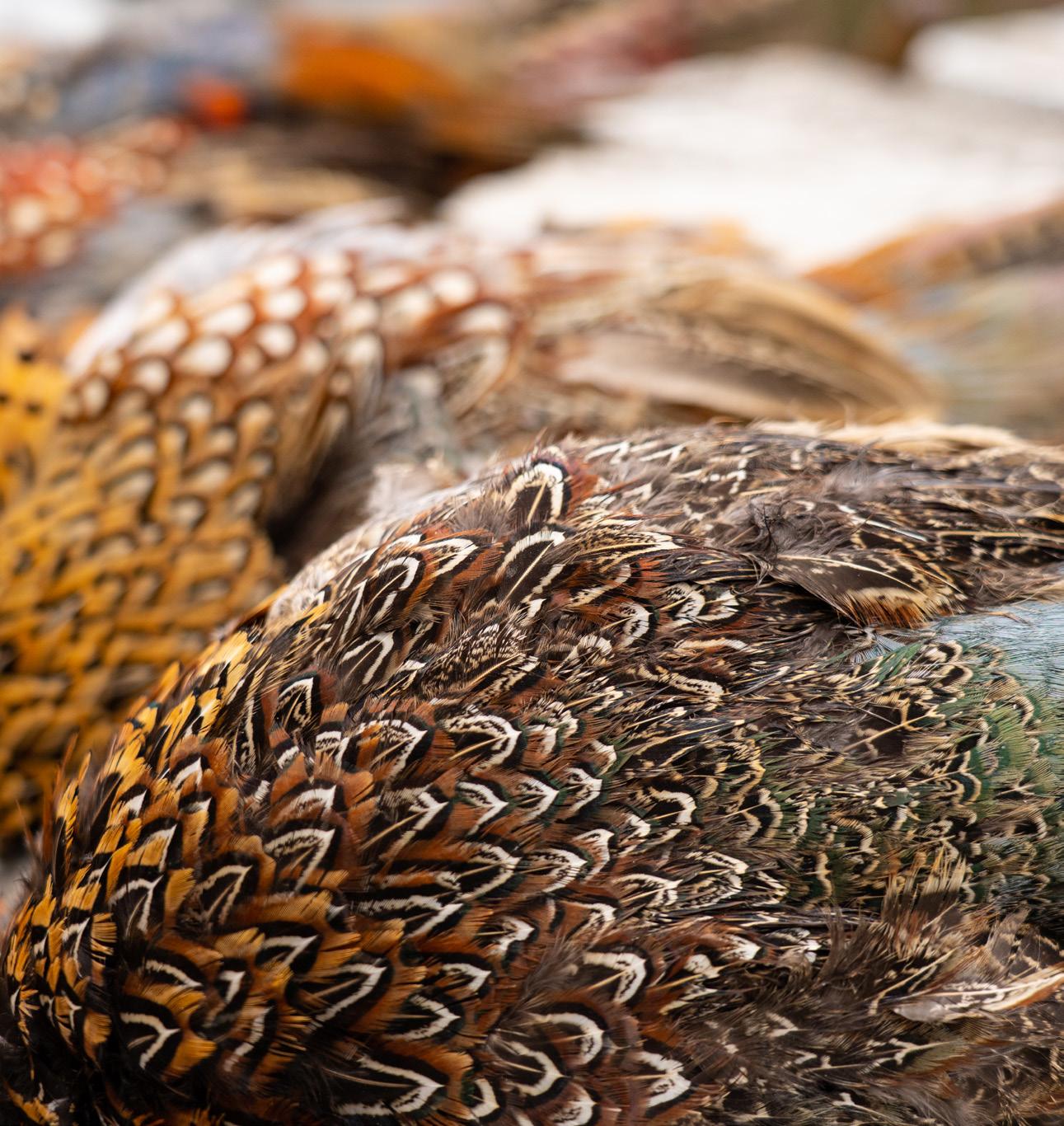
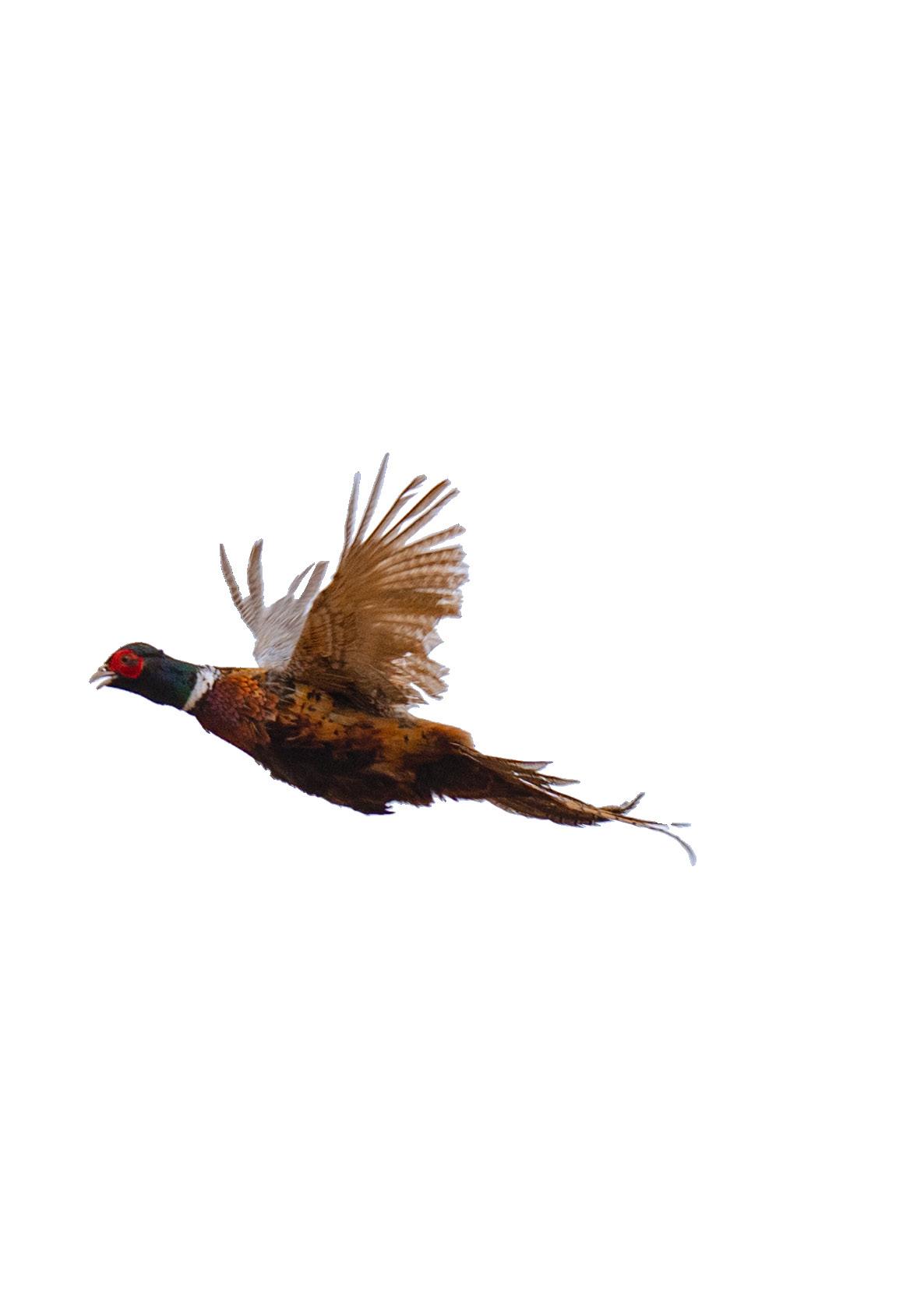
way—to be ready for a flush at any moment. Luckily, my fellow hunters made quick work of dispatching roosters. Our group gelled quickly, keeping consistent spacing with critical safe-shot windows. This allowed that magical combination to appear in which everyone experienced a relaxing, yet effective hunt.
At midday we welcomed a break from the winds in a farmer’s spacious barn. We enjoyed a warm and delicious pheasant and wild rice stew prepared by Cathi Jensen. Replenished and rested, we set out to see if we could take three more birds and fill our limit for the day.
It didn’t take long for us to bag two more as we worked the corn and cattails near a large marsh. Watching the Brittanys quarter back and forth, framed by the seemingly endless prairie, we relished our small but critical role in this timeless ritual. Soon, we heard a familiar cackle and the echoing report of a well-placed shot; Wessel Fourie dispatched a hard-flushing rooster to reach our limit.
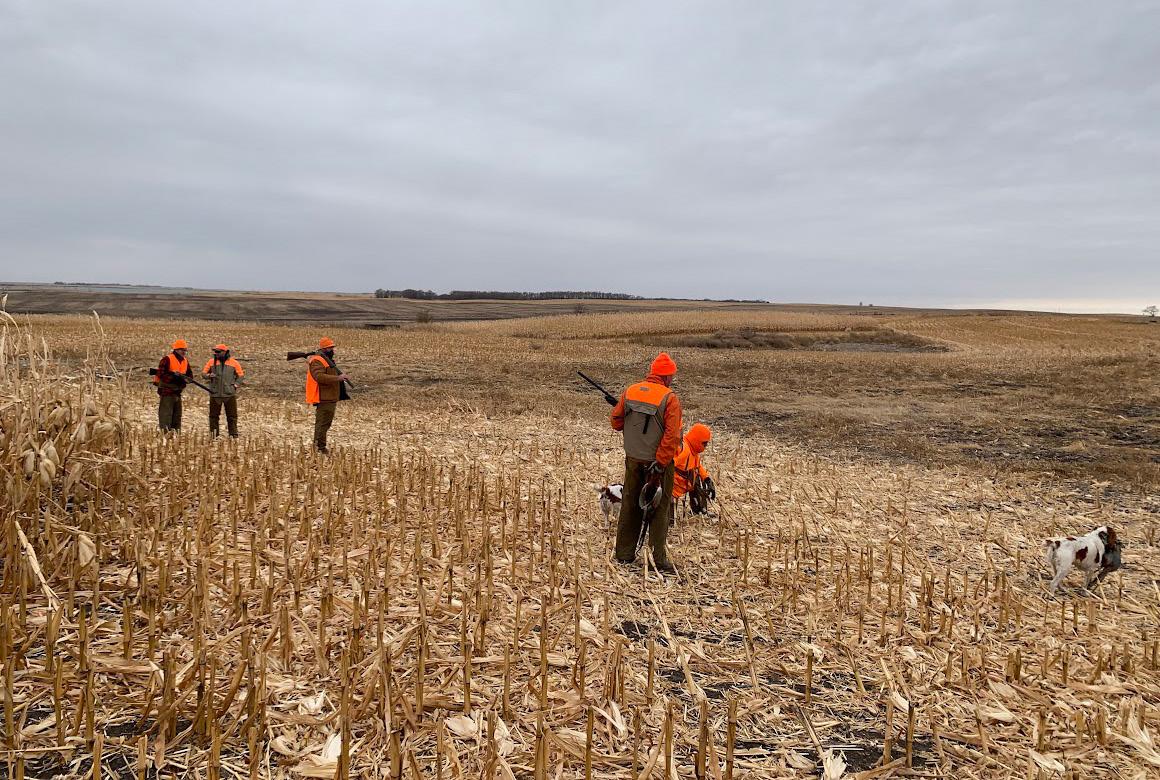
The next day, guided by Cathi Jensen, we headed west of Frederick. I found it remarkable how the topography changed with more rolling hills and cattle operations. After a slow first draw, we took roosters regularly and the dogs worked brilliantly. At one point, they flushed a rooster that was hiding in ground cover near the edge of a shelter belt. The bird was a step ahead of one dog that got a mouthful
of tail feathers before the rooster fell in the grass a short distance ahead. Another rooster flushed so high above Josephus Flourie’s head that it seemed as though he was headed into orbit, but Flourie’s Browning brought any ambitions of space flight to a swift end.
Within one bird of our limit, we chose to work a stand of corn east of the shelter belt. While we didn’t put any roosters up right away, we remained alert. The Brittanys quartered through the corn, and the open horizon stretched out before us. I wanted to bottle the sensation to keep it forever.
Then the cry “rooster” and the furious flailing of wings instantly brought me back to reality. Our final bird fell just before lunch, marking a fine and fitting finish to our wild South Dakota adventure.
Later that evening, I watched Ausman and Josephus Flourie pluck and clean pheasant for dinner. It was a privilege seeing an old friend with whom I’d spent wonderful days afield in South Africa prepping birds with a new friend. Comfortable banter. Two hunters cleaning wild game after a day’s hunt. It’s a ritual as old as humanity itself. It was wild.
Don Skelly is an avid sportsman who lives in Charlottesville, Va. This is his first contribution to The Virginia Sportsman

Ihad no idea what to expect from my horseback riding vacation in Turkey, although I had heard this was one of the best and fastest rides you can do worldwide. So, it was with some trepidation and excitement that I boarded our overnight flight to Istanbul and then Kayseri, which is situated in the central region of the country.
After a 50-minute transfer by shuttle bus we arrived in Urgup to the first of many towns carved out of rock. The hotel consisted of cave-like rooms decorated with typical Anatolian carpets and decor. Immediately, I imagined myself as a modern-day Aladdin character. I perused antique shops offering lamps and various knick-knacks complete with vendors selling dried fruit, warm roasted and salted apricot kernels, as well as Turkish delight, which tastes unlike anything I’ve had before.
Our group for the week’s riding included eight riders who are mostly from the United States. All regular travelers like me, our ages ranged from 18 to 61 years old—and all of us had a sense of adventure.
We spent our first day recovering from jet lag and sightseeing, which left us ready to meet our hosts at Kapadokya Ranch and their 20-plus horses. The ranch offers horse riding trails through the heart of Cappadocia, a region
famous for its distinctive rock formations, historical heritage and scenic hot-air balloon trips. Located in Central Anatolia, this exotic land attracts crowds of tourists from all over the world.
Kapadokya Ranch was impressive and so was its owner. Originally from France, Nicolas Guillo has lived in Turkey for 20 years with his wife Helene. Aside from French, he is fluent in English and Turkish. He taught himself to ride leaving Afghanistan after making a film there and discovered that the quickest way to do so was by taking a two-week journey by horseback over perilous mountains to Pakistan.
“I expect you to ride your horses correctly— and as instructed,” Guillo said. “The trails I will take you on are for fit, active and autonomous riders.”
He gave us a tour and we were impressed by the horses, which are pure-bred Arabs with a few Arab-crosses to accommodate bigger riders. The tack room was particularly spectacular, featuring a tree carved into the roof of the cave. Guillo’s remarkable animals were fit, sure-footed and ready to hit the trail every morning, even while averaging 20 grueling miles a day. They were fed mostly chaff and barley, plus flakes of alfalfa. I’ve read about Arabian horses in literature and watching Guillo’s horses reminded me of the creatures in print, eating the wind and being

An Equestrian Adventure in the “Land of Beautiful Horses"
CAPPADOCIA IS FAMOUS FOR FAIRY CHIMNEYS, MYSTICAL ROCK FORMATIONS, CAVE DWELLINGS AND HUMAN SETTLEMENTS DATING BACK TO PALEOLITHIC TIMES. AND THERE’S NO BETTER WAY TO SEE UCHISAR, PIGEON VALLEY AND OTHER POINTS OF INTEREST THAN BY HORSEBACK—AND HOT-AIR BALLOON.

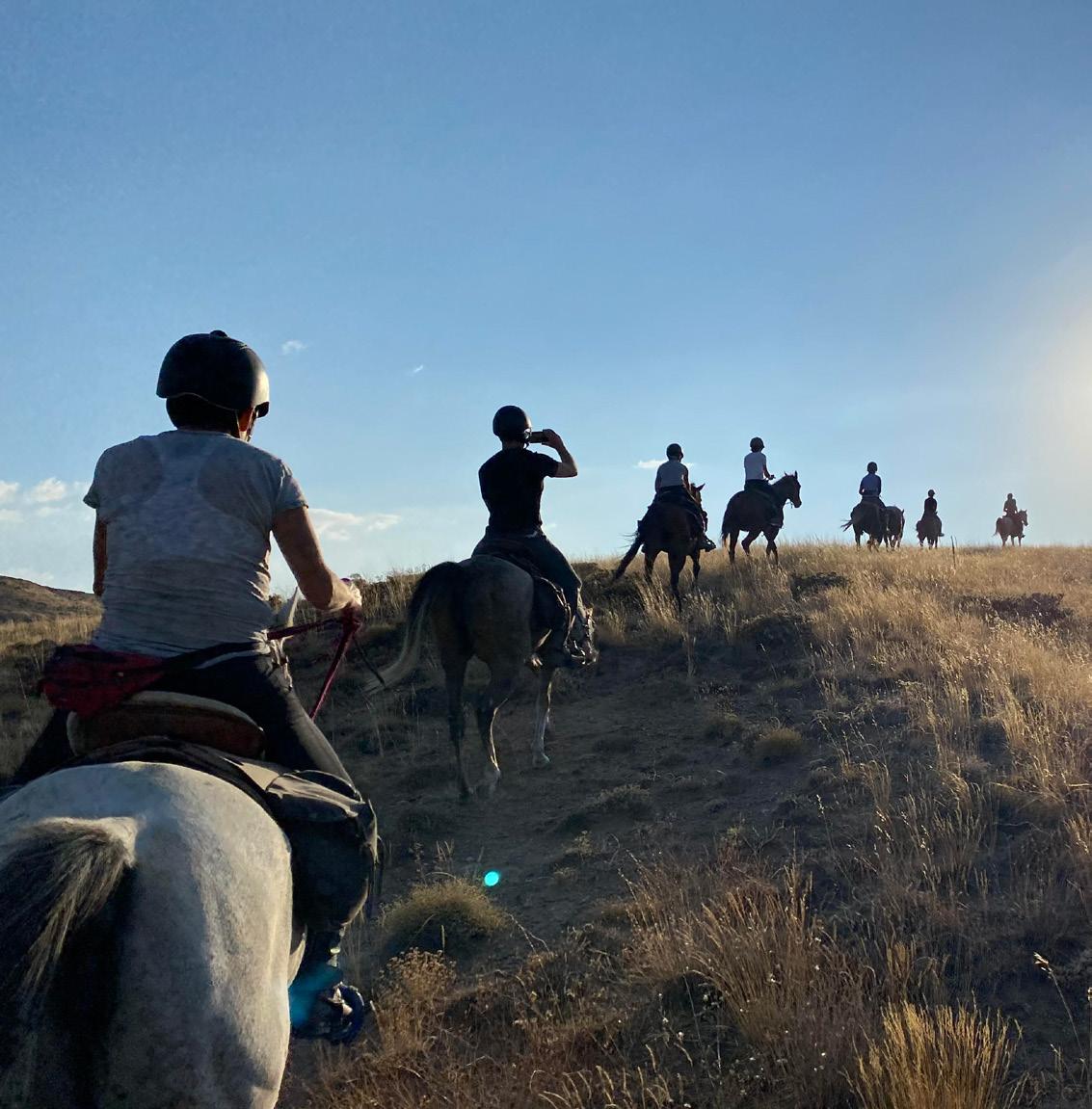
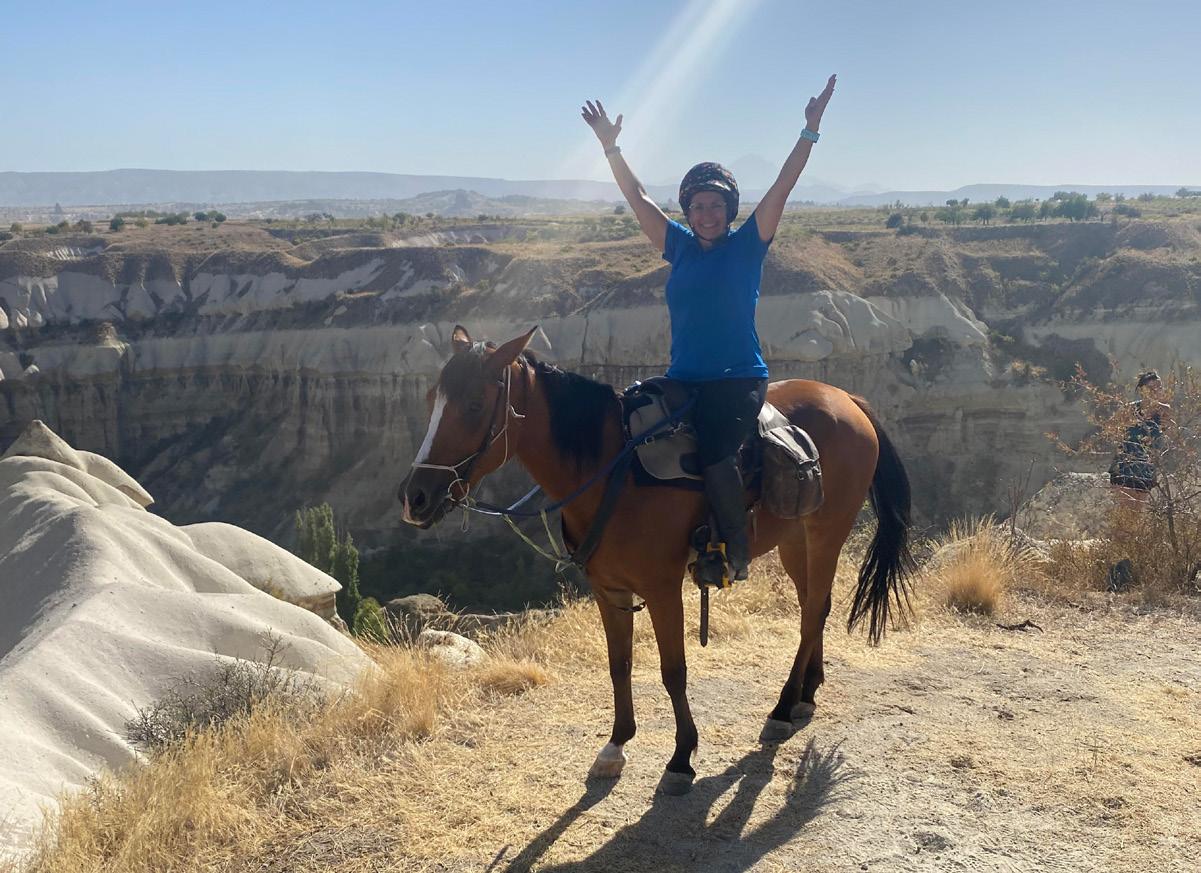
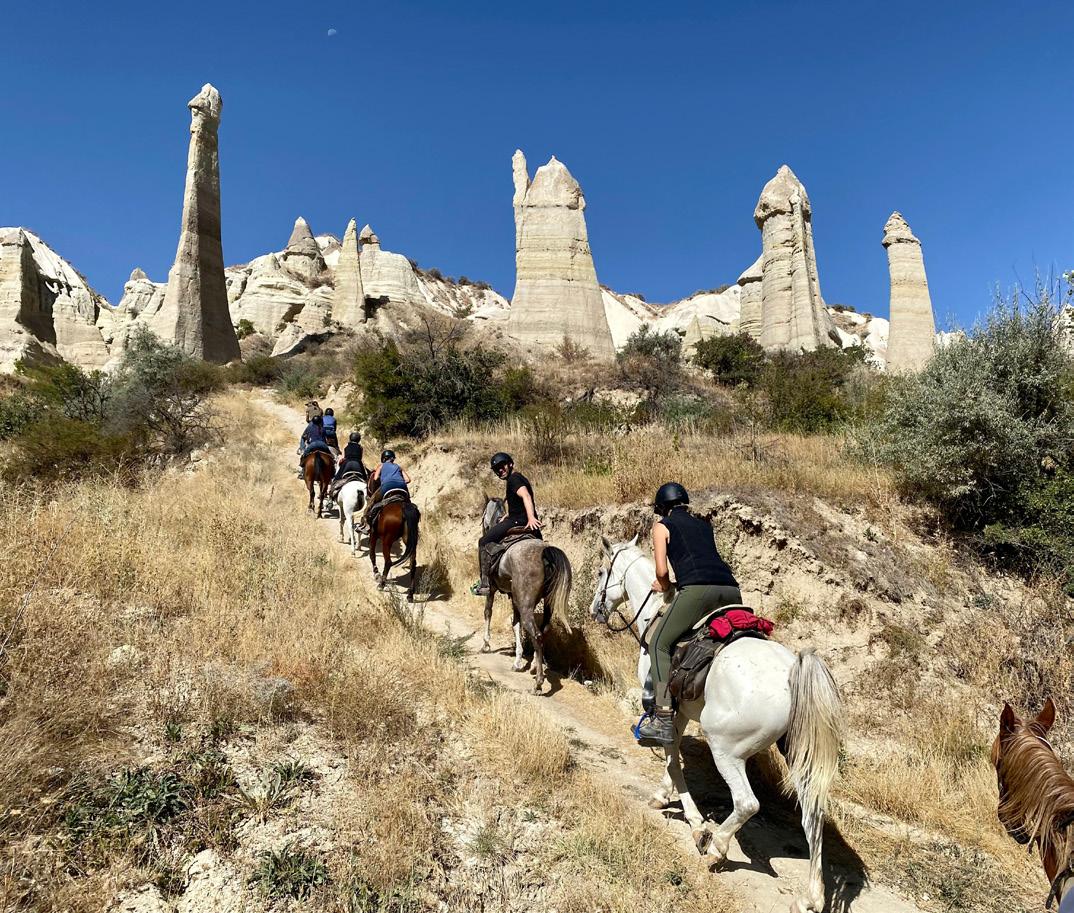
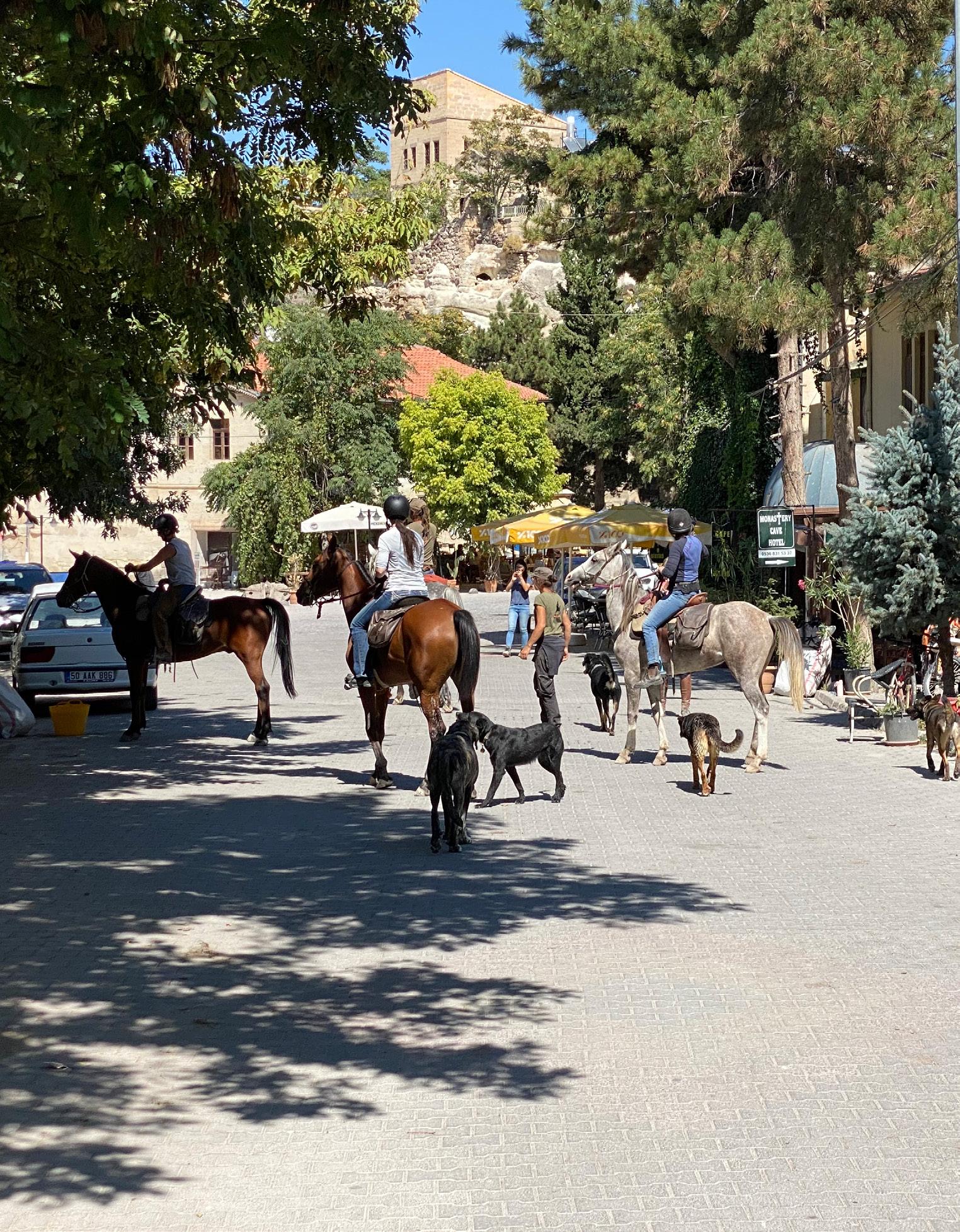
somehow more powerful than mere horses.
On our first day at the ranch, our host showed us how to tack up with hand-made McClellan-type saddles fashioned by Guillo himself, which are designed to distribute the weight over the horses’ backs so they can carry humans long distances. Then, we were asked to take the horses on a test ride—one kilometer around the farm. This included riding through ditches and along banks, halting with immobility for 10 seconds, crossing a bridge and brief cantering.
Outfitted and well-matched with our respective horses, we set off for our first long ride to a hotel approximately 20 miles away. We whooped with delight on our first canter as we spread out across an open field on our way up to a plateau offering a stunning view of the valley. This type of riding reminded me of field hunting when I was younger back in the United Kingdom. We had to negotiate little drops, banks and tight winding paths. Our route included slippery rocks and steep drop-offs. We combined fast-winding canters on tracks with open gallops over stubble fields and grassy plateaus. We also encountered several steep rocky sections where we had to dismount and lead our horses, which was challenging. Guillo provided daily footage he shot using a GoPro, and the film summed up our day’s ride
for our pre-dinner enjoyment.
We rode through tucked-away valleys famous for fairy chimneys and mystical rock formations. They were created more than 60 million years ago by wind, water and ice erosion from soft layers of lava and ash from three volcanoes, the largest being Mount Erciyes at 3,900 meters. The soft rock was perfect for human settlements beginning in Paleolithic times. Houses and churches carved into the rocks and valleys were among the most important centers for Christianity in later periods. Today, while many of the churches’ frescoes are damaged, you can still see enough to get a good idea of what they once looked like.
I was also fascinated by troglodyte dwellings, and some of my favorite rides included visits to the underground villages of Golgoli and Kirkule. Some of the cave dwellings are eight-stories-deep and most have emergency tunnels to safe rooms often equipped with a round stone people rolled shut for protection. Local people in the area were still used the caves to farm pigeons up until the 1960s, when chemical fertilizer and gun powder eliminated the need for pigeon guano.
Cappadocia is one of the natural wonders of the world. While there are many tourists who flock to the area, we felt privileged to
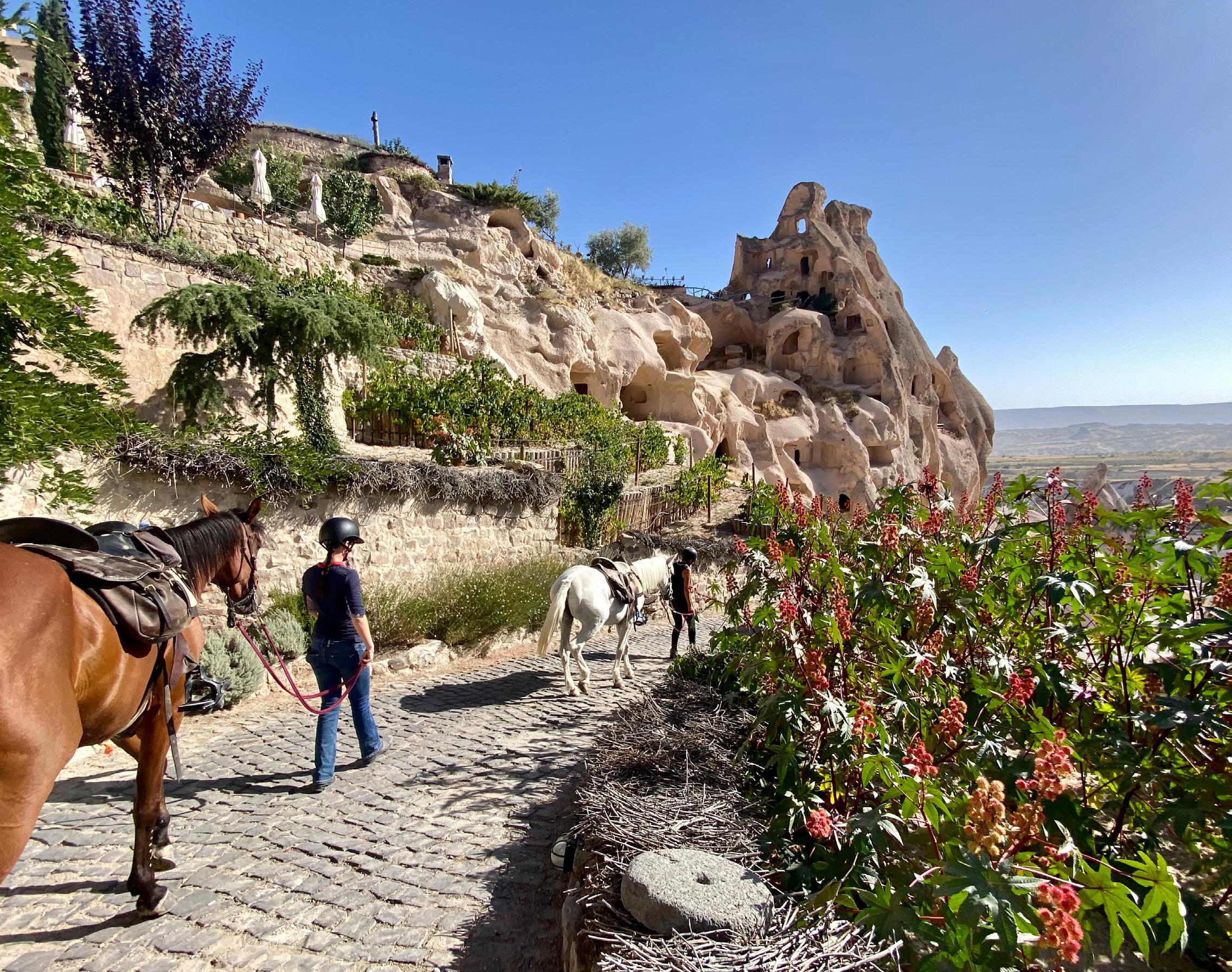
"Cappadocia is one of the natural wonders of the world."
ride on roads less travelled. On horseback, you can reach places that are not accessible to average tourists.
Our days began with a hearty breakfast that included olives, honey, local fresh fruit and gozleme, which are Turkish pancakes filled with mince, spinach or cheese. Lunches were varied, and occasionally we picnicked under a tarp and enjoyed tea in a samovar. sometimes a picnic, complete with a tarp for shade and tea in a served from a samovar. We also enjoyed traditional meals that included lentil soup, salad and stew, followed by baklava.
During our rides, we also observed local farming. People grow grapes on the ground instead of on trellises; the sun is too strong in summer, and the grapes become too sweet in the heat. The sun is useful for drying fruits, and farmers here do dry plums, grapes, apricots and pits in the sun, on rooftops and out in the fields.
Anatolian dogs roam freely and guard farms. Our procession of horses seemed to elicit smiles and waves from the locals who believe in the nomadic lifestyle. No one minded when we picked apples and plums from the trees along the way.
In the evening we reached our hotels, ready for warm hospitality and great fare. We stayed in four different hotels during our journey, and my favorite was Kilim Pension in Uchisar, which offers an amazing
view of Pigeon Valley. Each morning at that hotel we enjoyed watching hot air balloons carrying passengers above the town of Goreme. One morning we woke up at the crack of dawn to join the hundreds-strong balloon brigade and float over Cappadocia.

“The only danger we face is another balloon ripping the fabric of our balloon,” our pilot said. “But don’t worry—that’s my job.”
I flinched at his words but took them to heart and soaked up Cappadocia from our perch in a bluebird sky. What an experience. By the end of the week, we felt much more confident riding as a group. Independently yet together, we covered amazing terrain that challenges even the most accomplished riders. Cappadocia is aptly named the “land of beautiful horses,” and I couldn’t agree more.
Louise Carelsen has lived in Switzerland, Germany and the United Kingdom. She spent a year at France’s National Riding School at Saumur and received her degree in riding and teaching. Together with her husband Cor, she travelled and worked abroad before settling in Botswana at Limpopo Horse Safaris, which they owned and operated for nearly 14 years. Today she lives in Charlottesville, Va., where she rides racehorses and show horses.
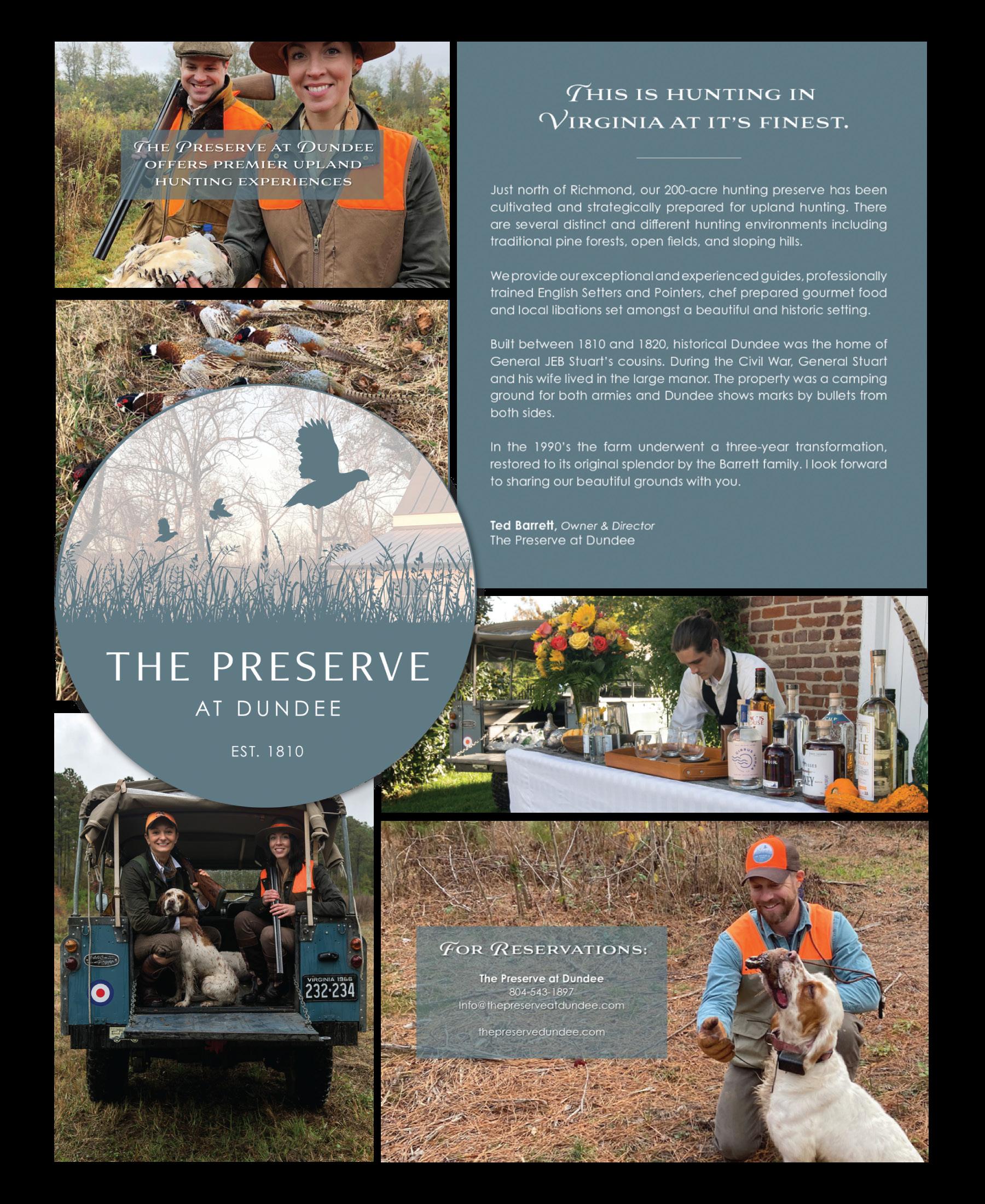

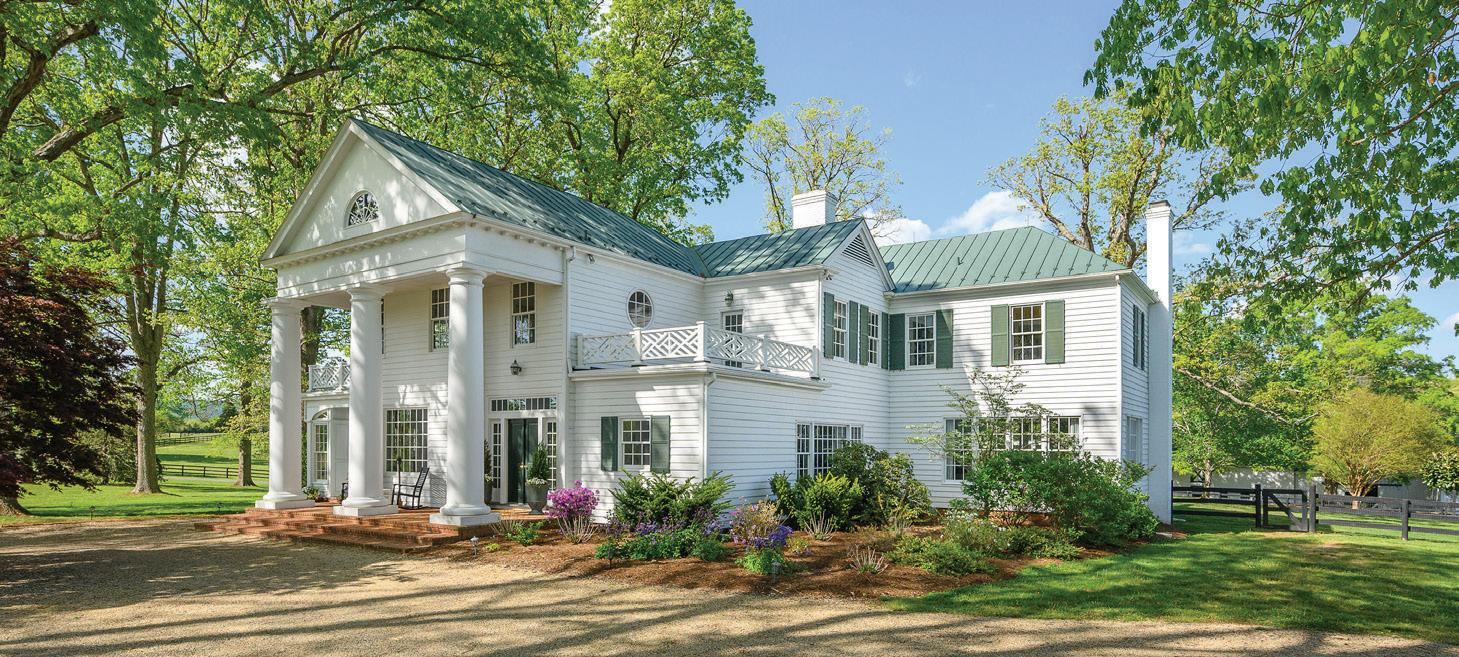
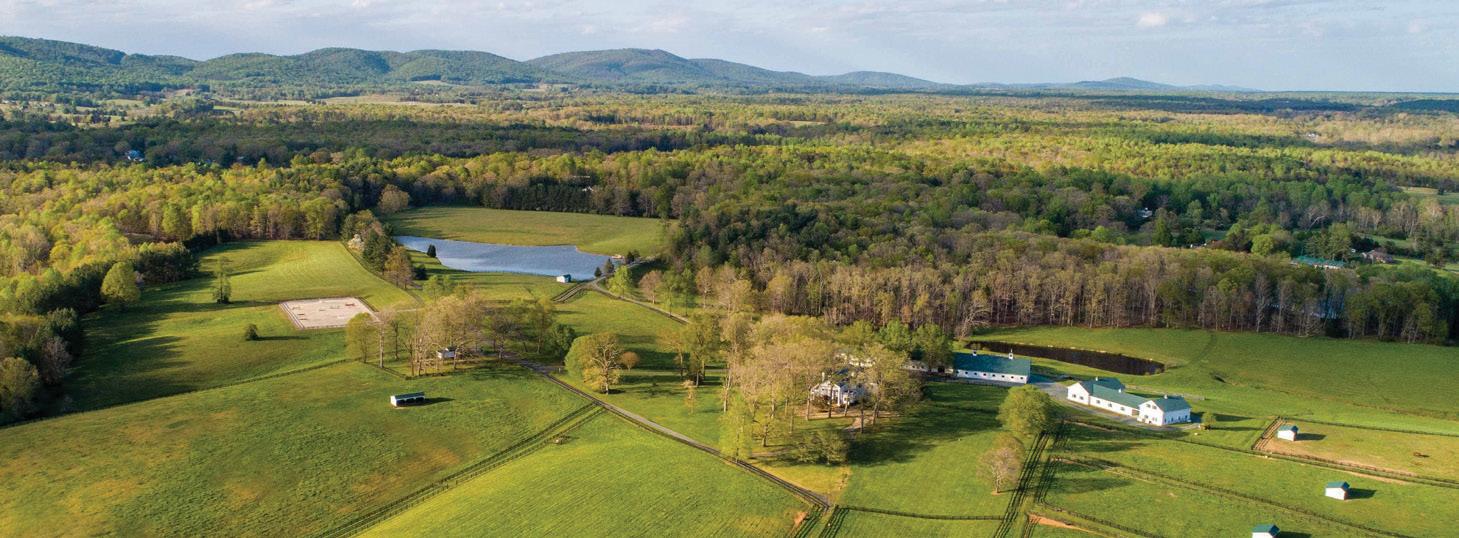

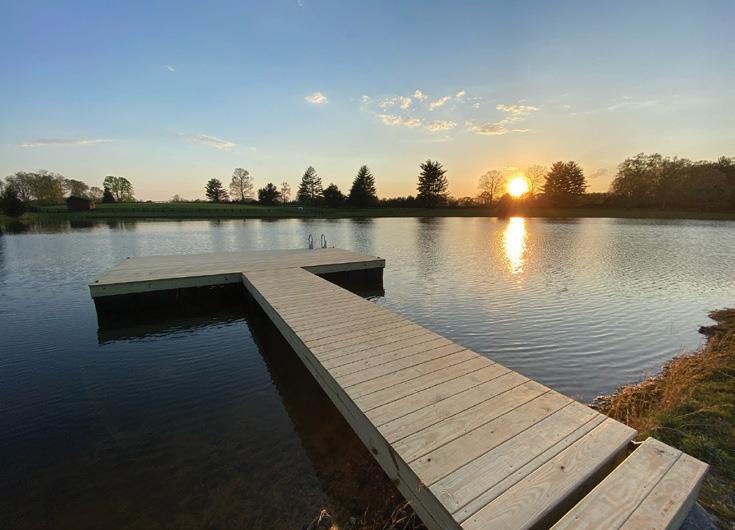
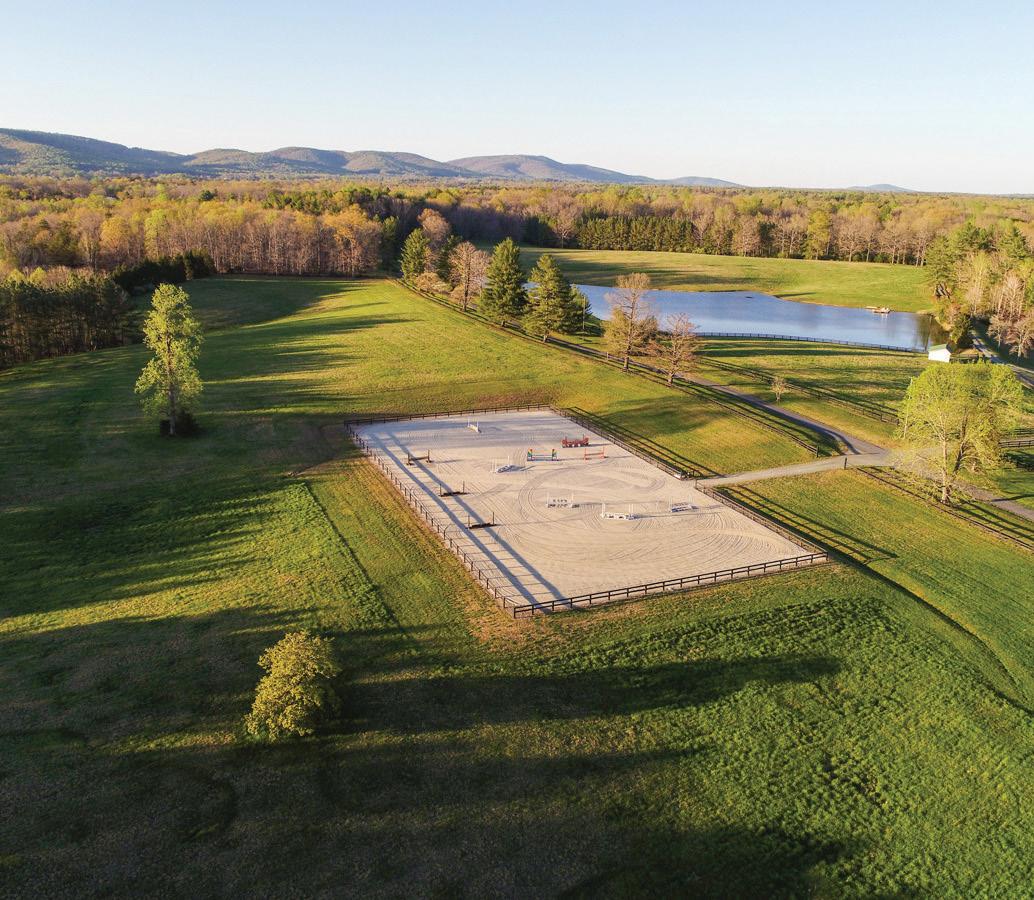


Comprised of 216 acres in the heart of Keswick Estate country, Arabelle Farm offers a rare opportunity: A turn-key equestrian property & farm with recently refurbished farm improvements and a lovely renovation of the impressive, c. 1910, 5 bed/5 full/2 half bath residence. The home looks out over lovely pastoral views in all directions and is shaded by massive oak trees. Additional improvements include a 23 stall, center aisle barn with two apartments above (5 bedrooms), 6 bay car or party barn, a 3 bay machinery garage, as well as a 2-bay workshop with renovated, 2 bedroom apartment above, 10 paddocks with run-ins, and 2 beautiful ponds. The 125’x250’ riding arena has new all weather footing and there is a 5-acre jumping field. The equestrian facilities are currently leased to a world class trainer. Fiber internet by Firefly. Rebecca White (434) 531-5097 or Loring Woodriff (434) 466-2992. MLS# 640549
